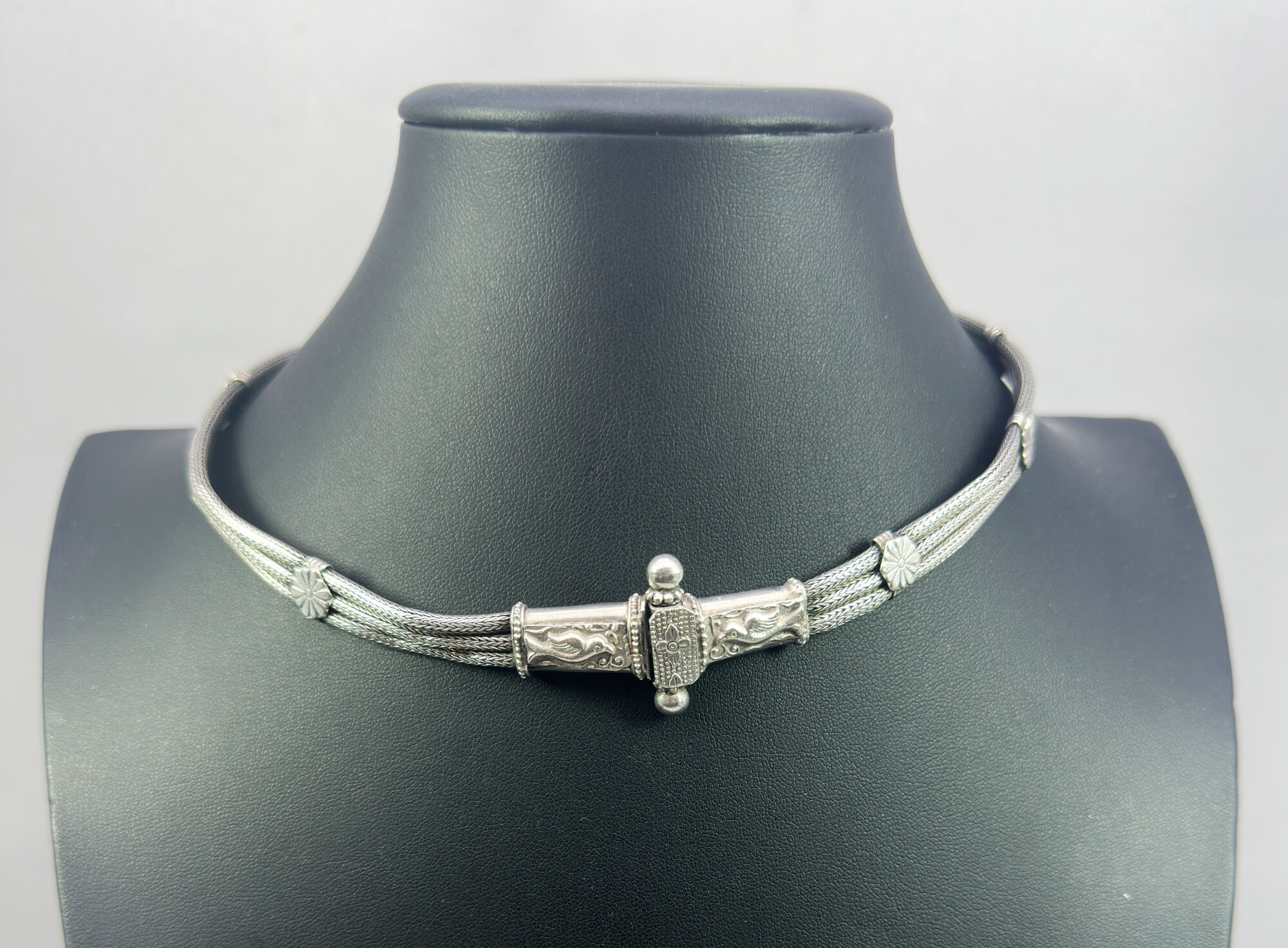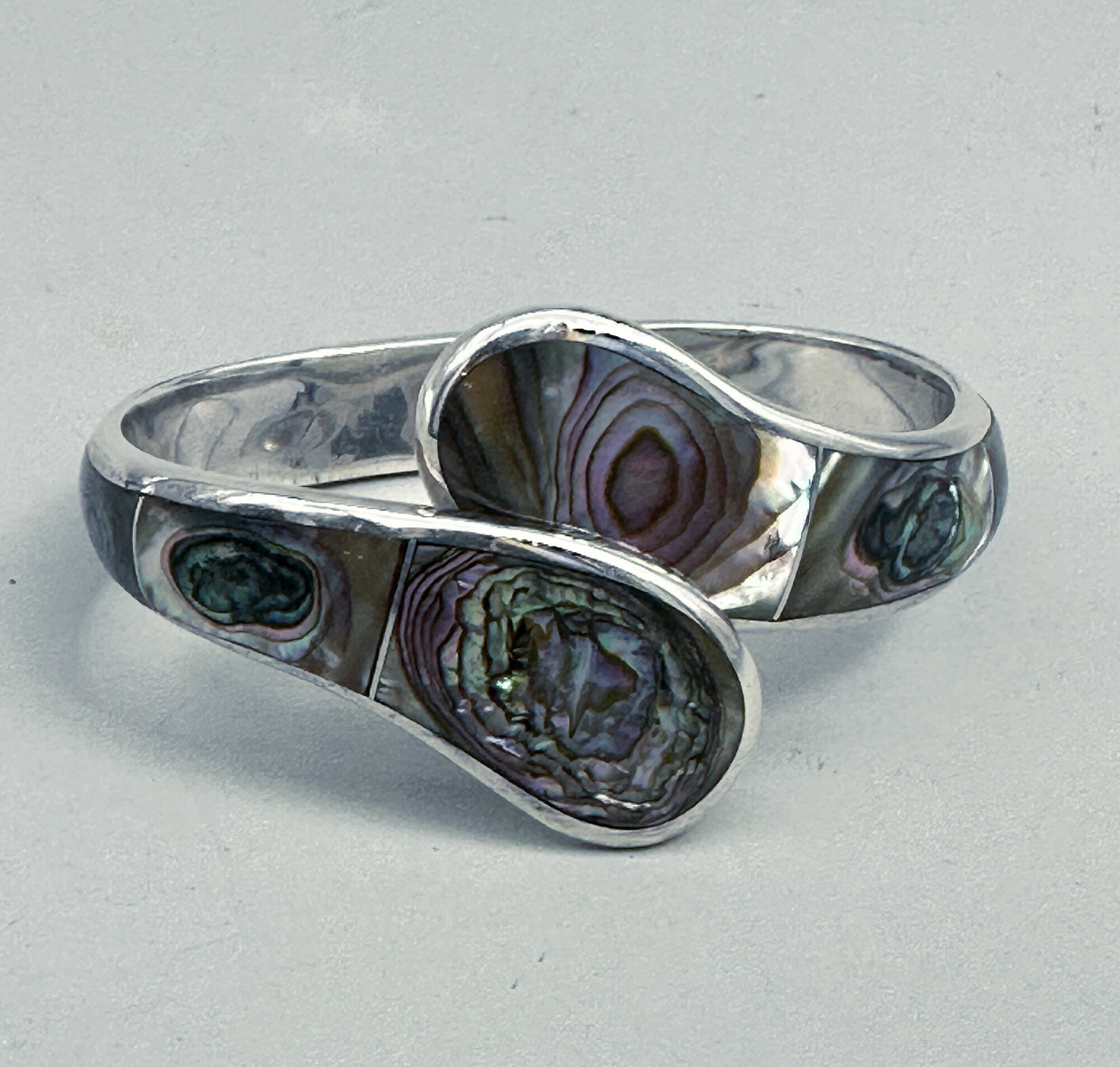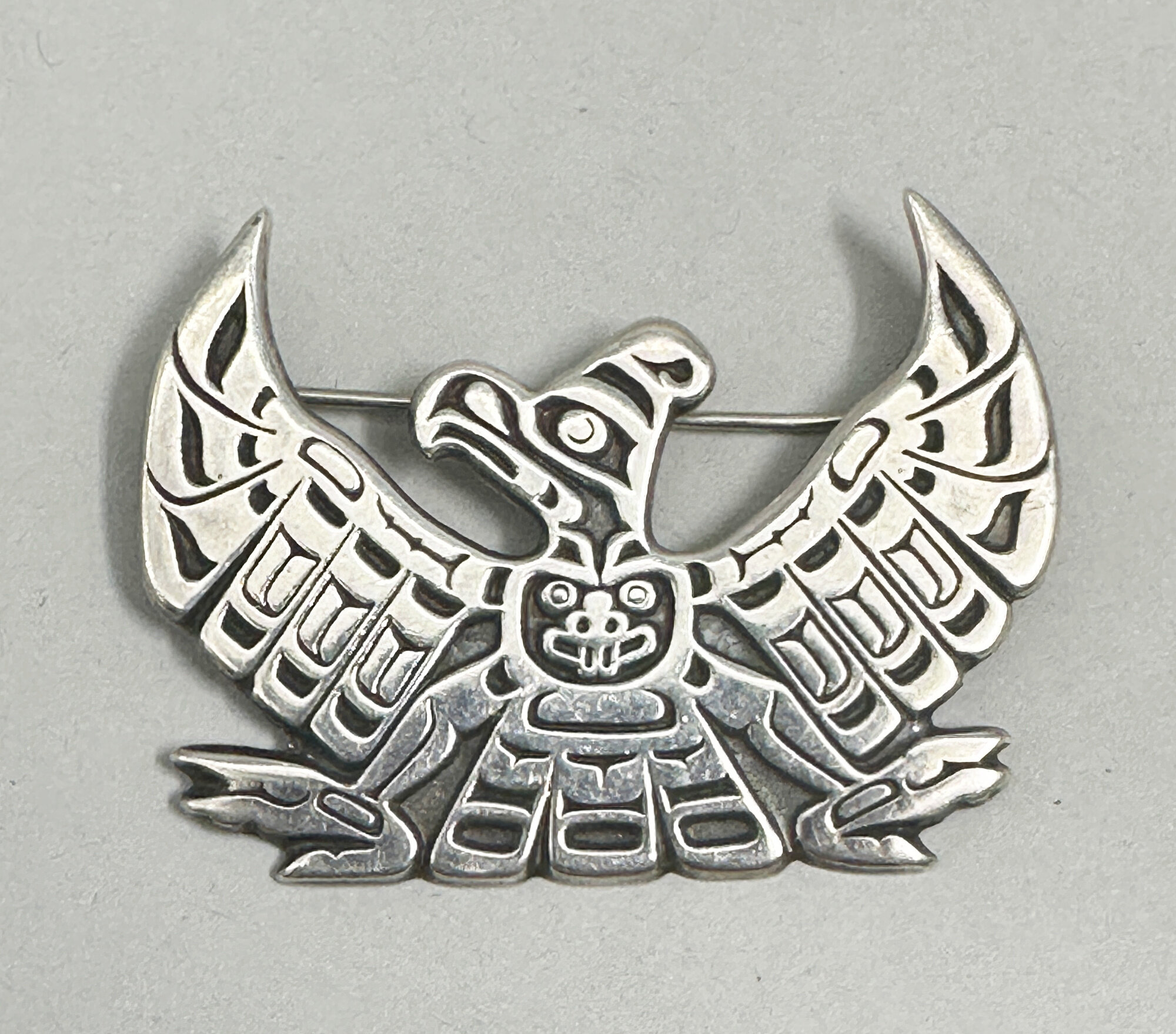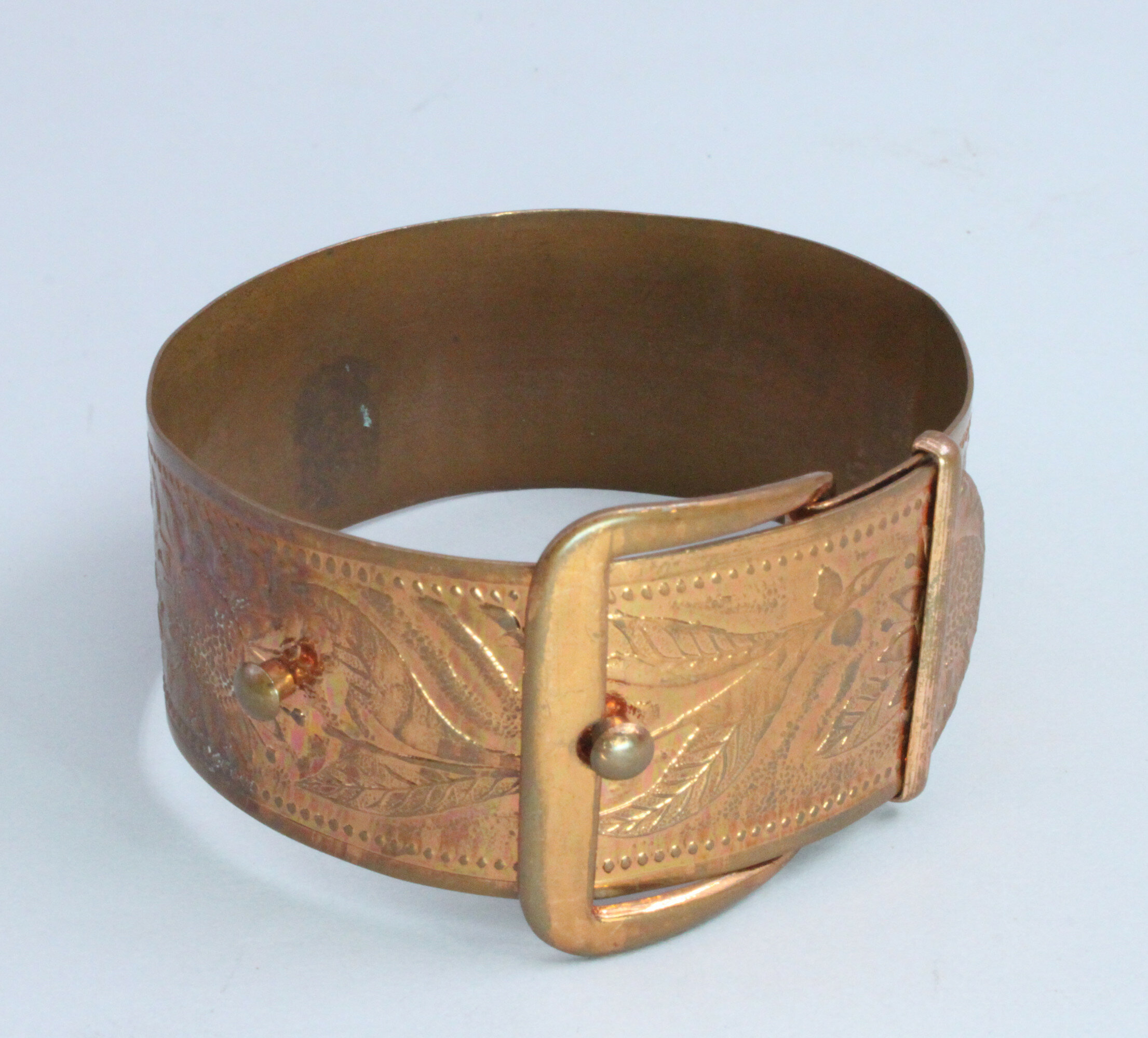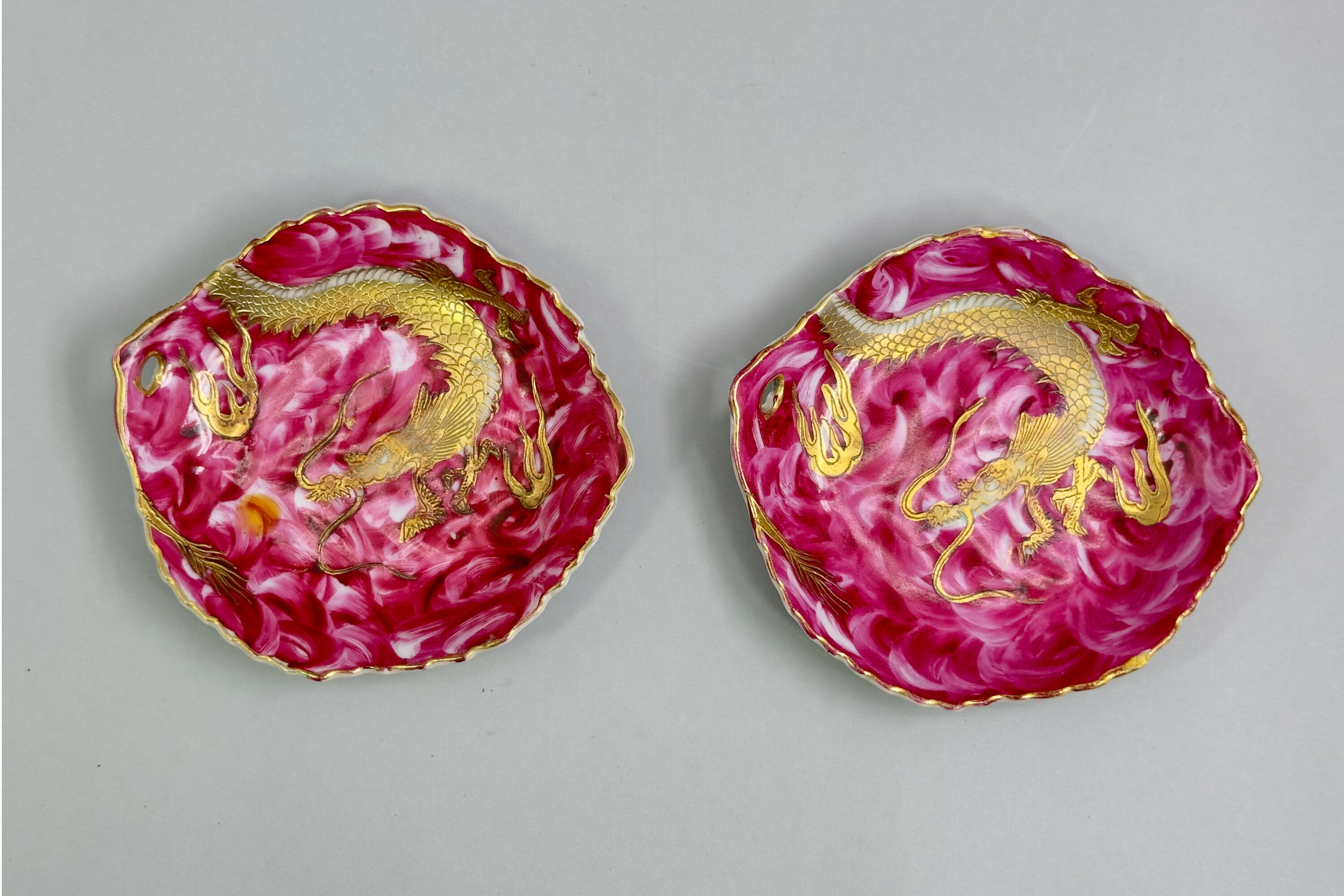
Pair of Japanese Shaped Saucer Dishes, Maruku China, 1940s
Price: £25The Maruku factory seems to have operated in Japan after the second world war producing modest but good quality wares for export, rather in the style of Noritake pieces. Usually their pieces are marked in addition ‘Made in Japan’ but for some reason not here. The forms, colourings and designs here are quite unusual and while modest, these are good quality decorative items suitable for a contemporary interior.
PLEASE NOTE THAT THERE IS FREE UK SHIPPING ON THIS ITEM. For international buyers the shipping cost will be reduced by the UK shipping cost, so don't worry if you are outside the UK, you still receive this benefit!
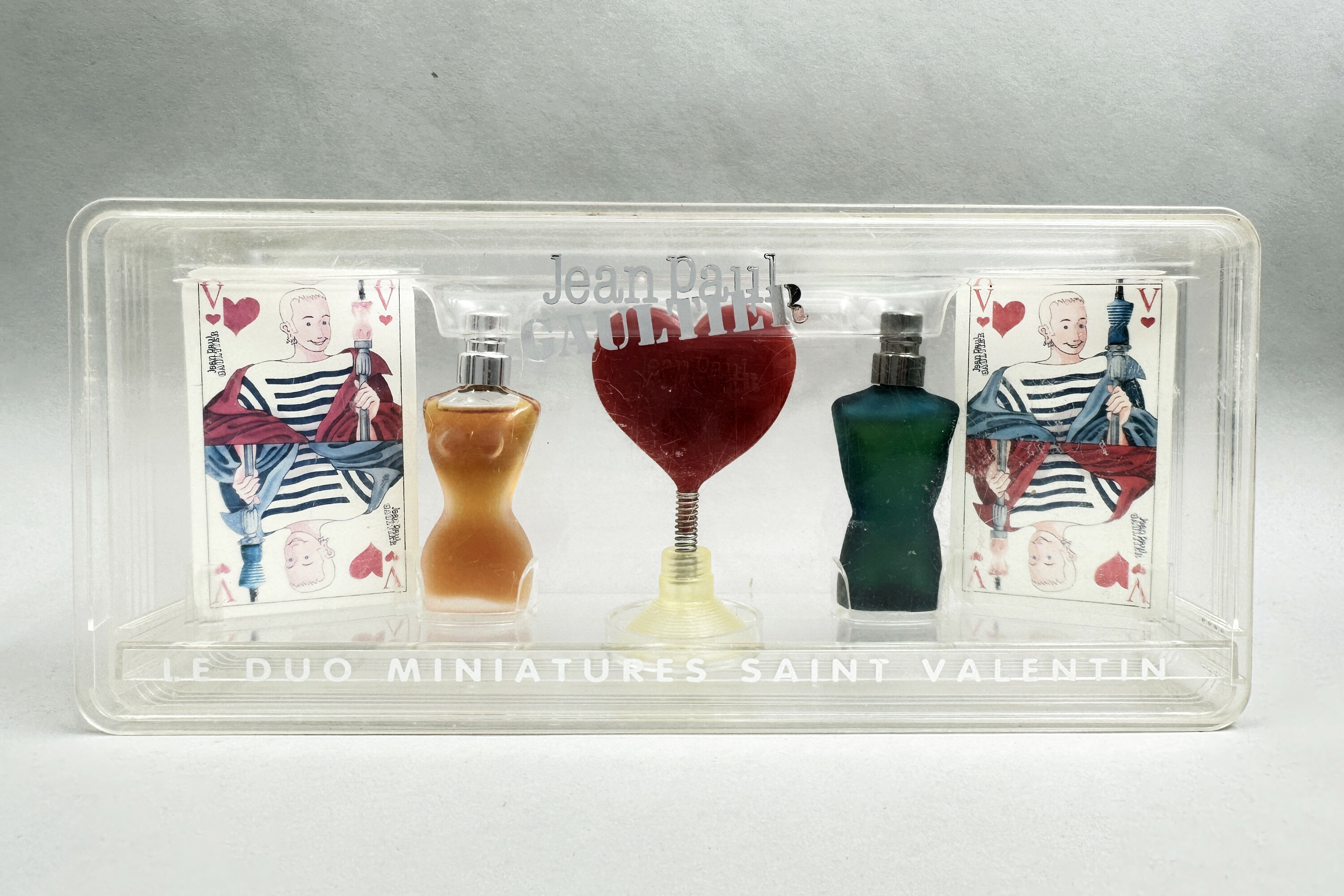
Jean Paul Gaultier Mini Fragrance Set, Le Duo Miniatures Saint Valentin 1990s
Price: £55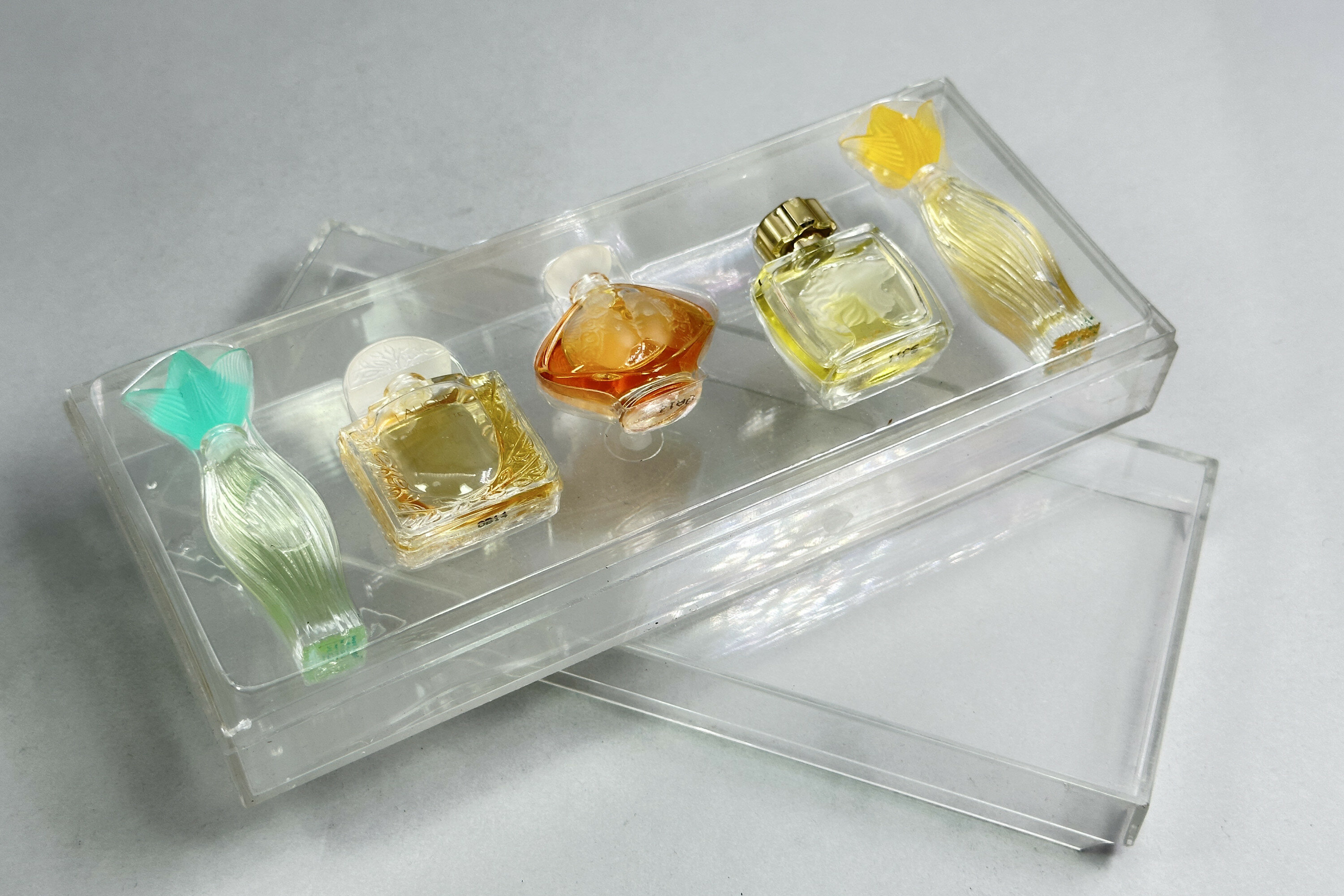
Collection Parfums Lalique miniature set in display box 1990s
Price: £55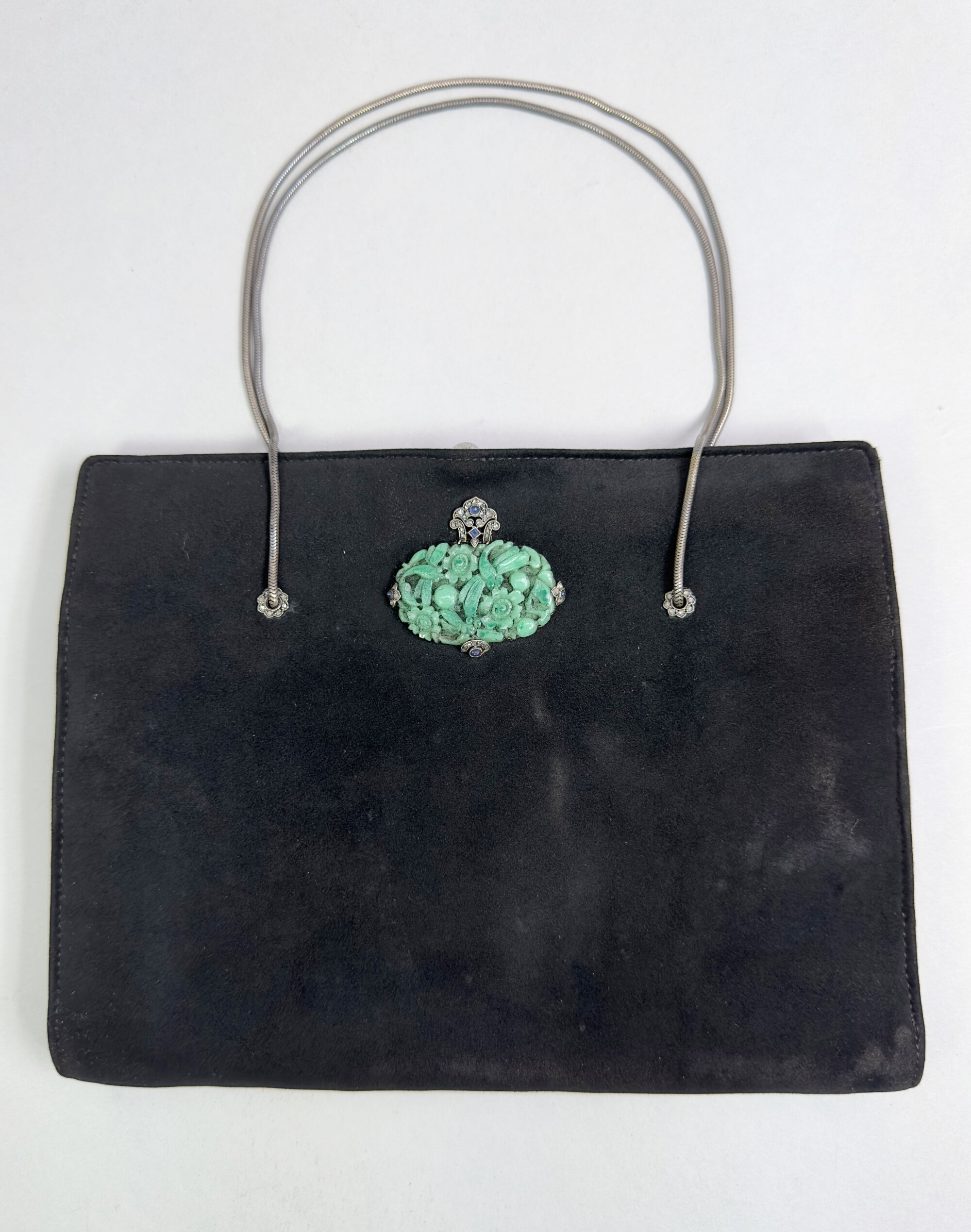
French Art Deco Clutch bag with faux jade insert
Price: £65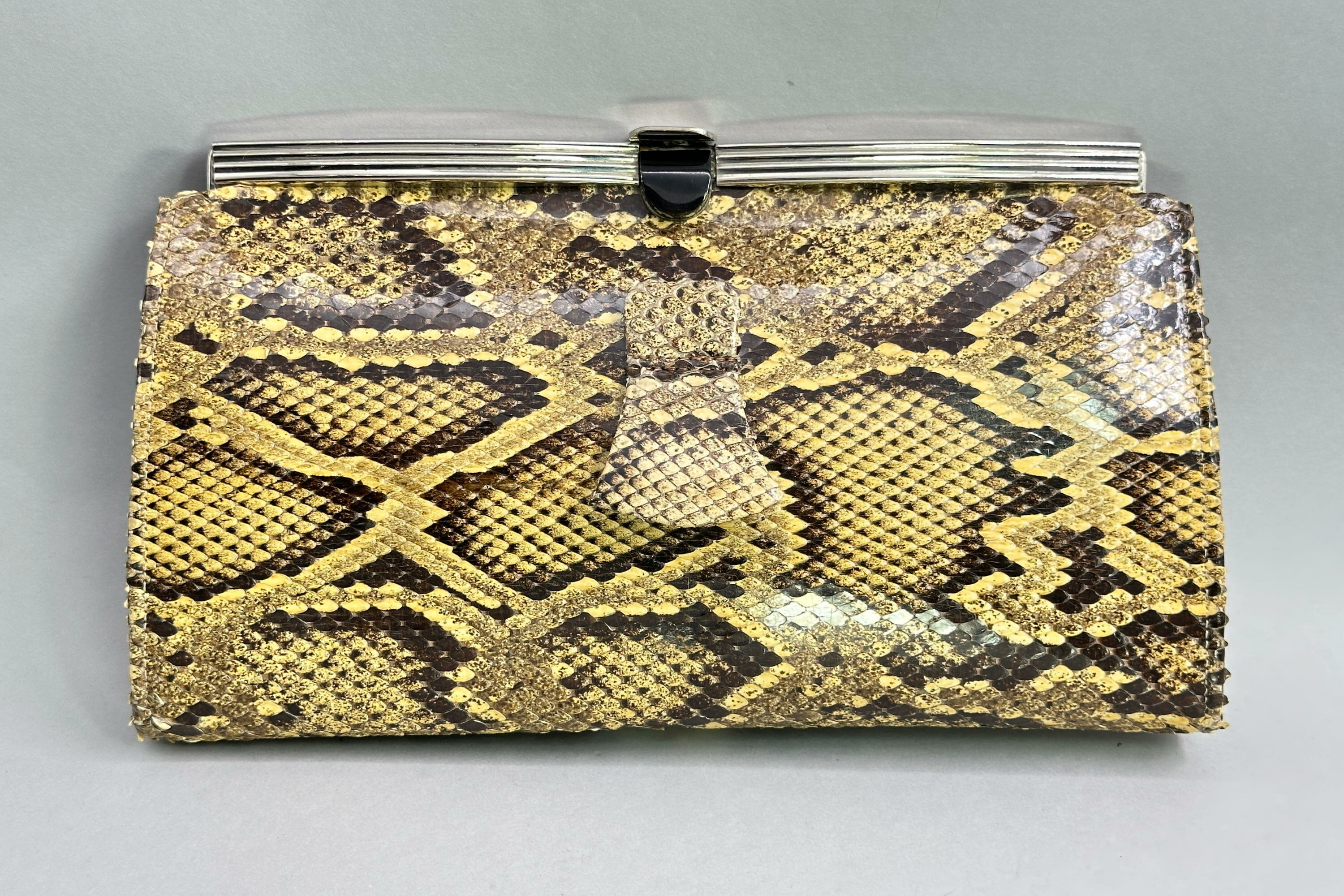
Art Deco Python Clutch
Price: £85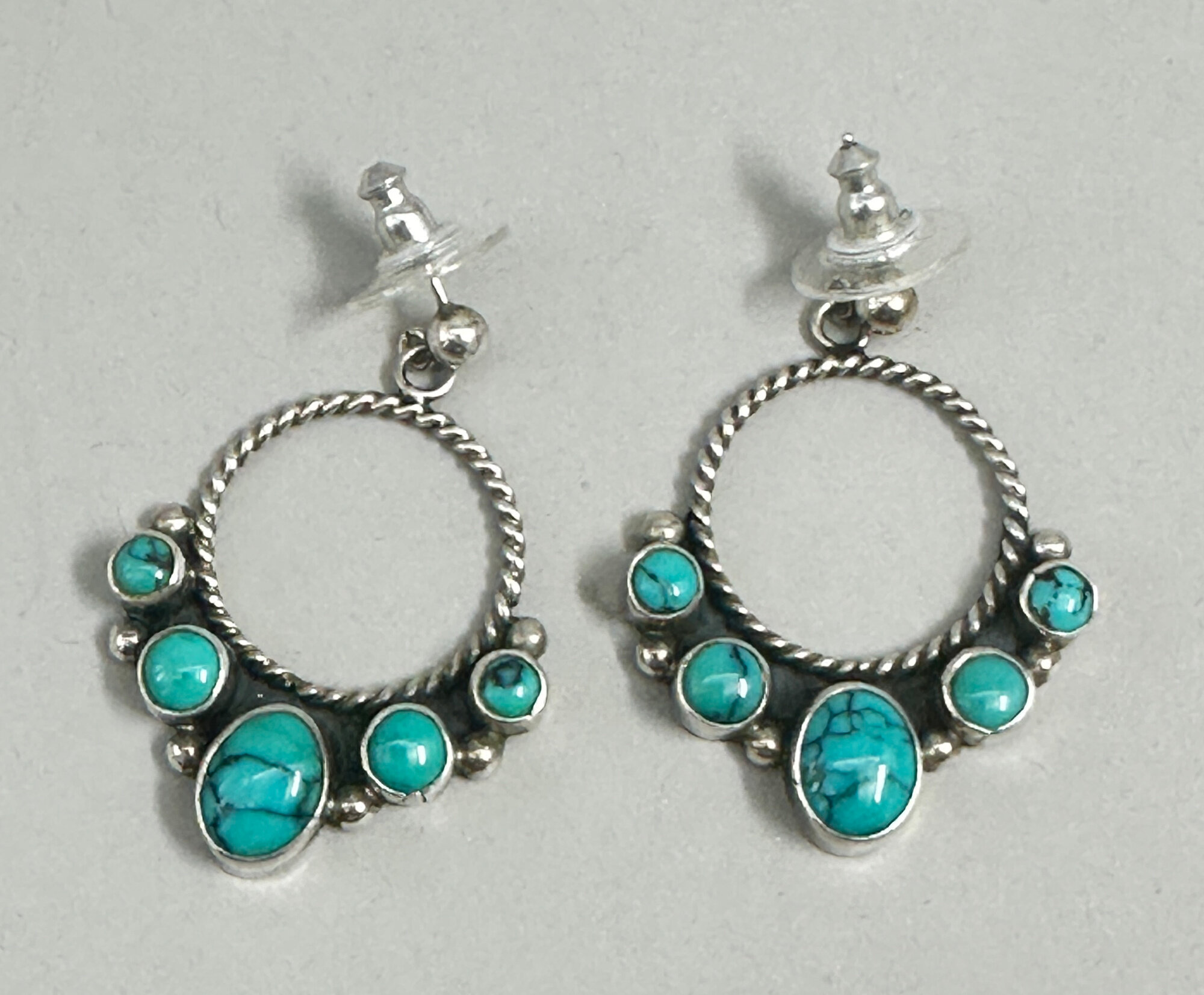
Pair of Navajo Kingman turquiose earrings, signed, 1970s
Price: £65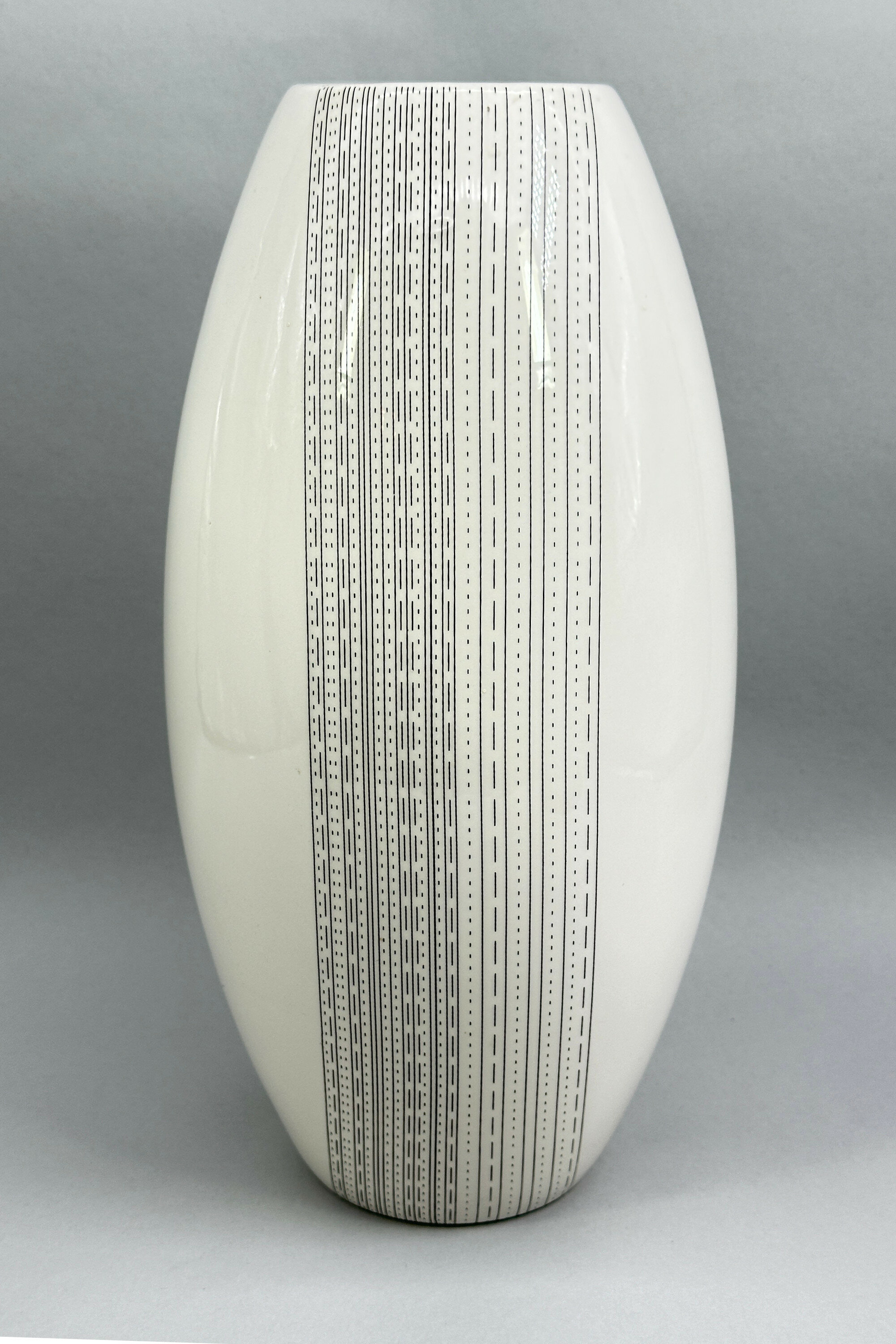
Abstract Design White Glaze Vase, probably British mid C20th
Price: £35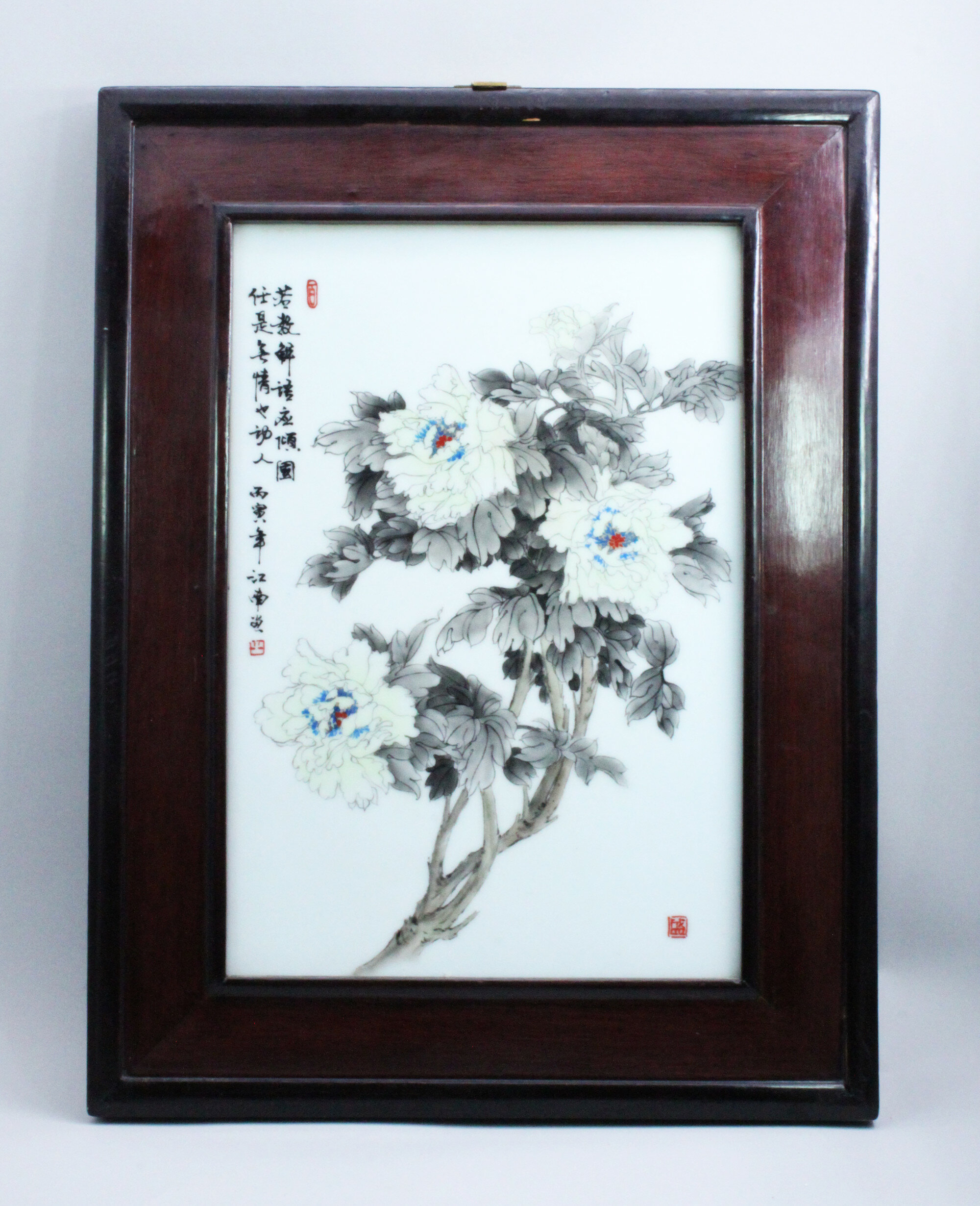
Chinese Framed Ceramic Plaque depicting Peony, C20th
Price: £150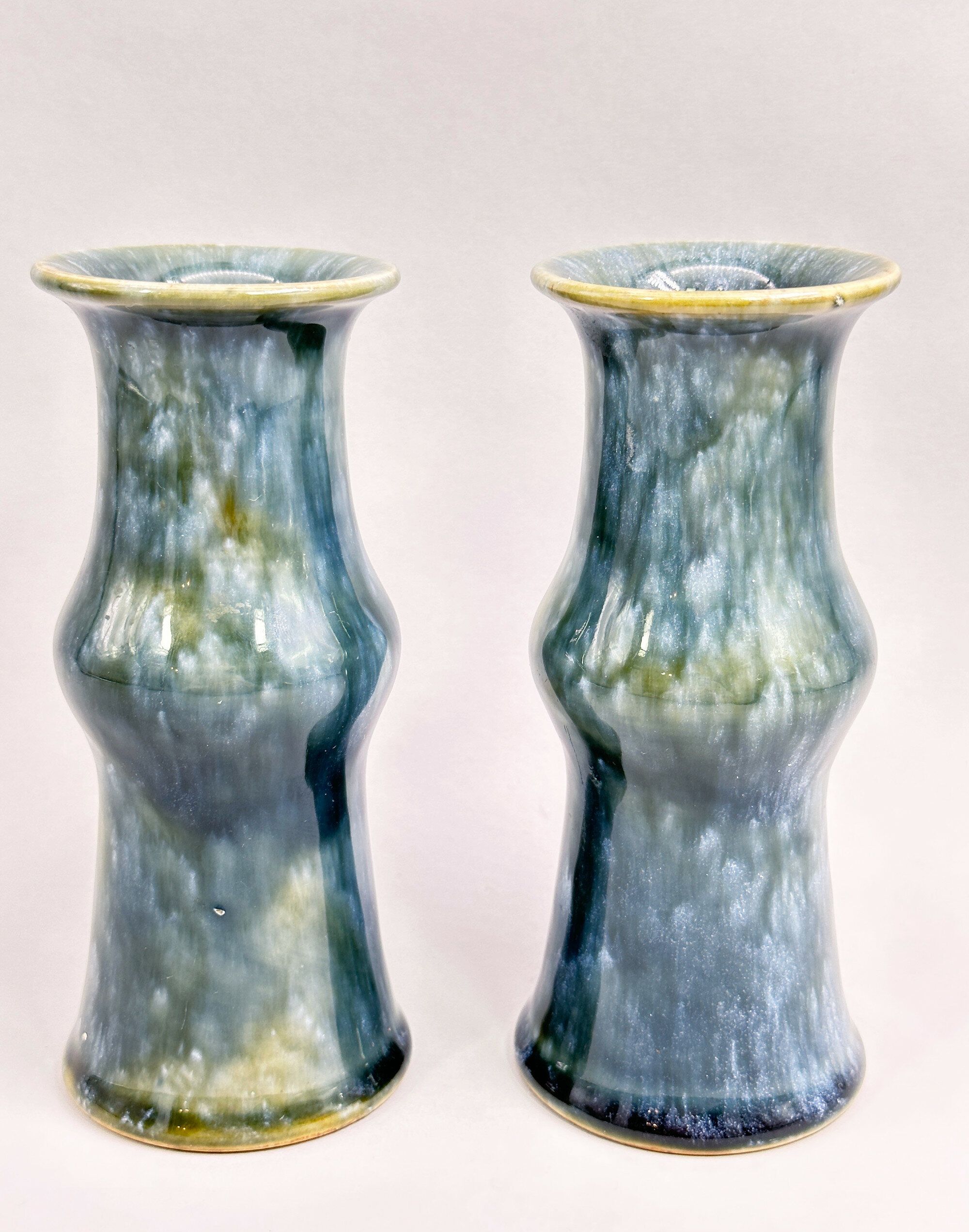
Pair of Royal Doulton slender Ku form Vases, 1920s
Price: £75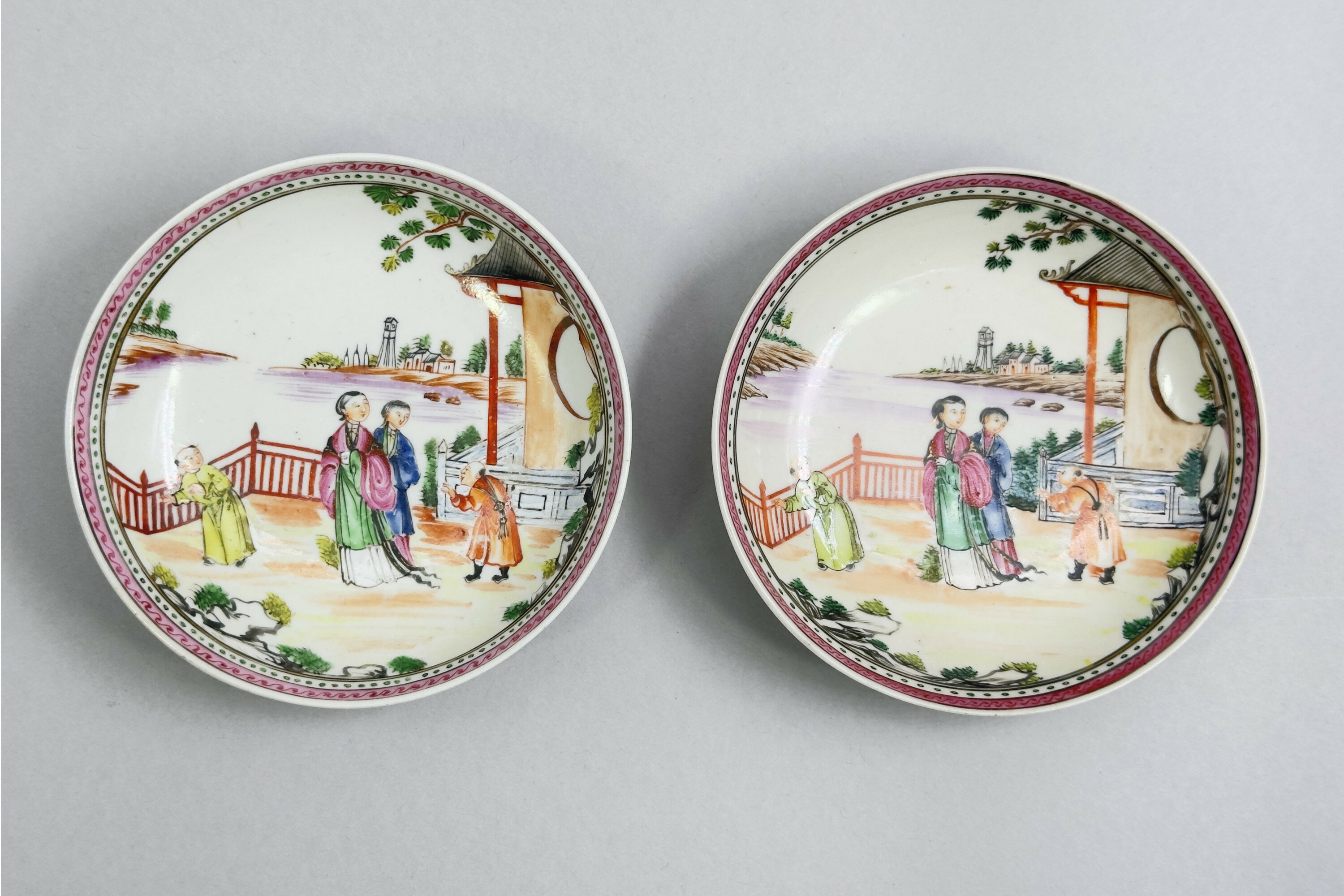
Pair of Worcester Saucers with Chinoiserie Decoration circa 1780
Price: £45While close to the Chinese originals, many features indicate European and indeed English manufacture, in particular the drawing of the ladies’ heads, the palette of colours used, the borders employed and, most importantly, the glaze and paste of the reverse. The most likely producer here was the Worcester factory whose ‘Mandarin’ pieces were well known and a circa date in the second half of the eighteenth century is reasonable. The saucers would have come from a small tea service with matching bowls and various serving items, including, of course, a teapot. Not so likely to be used now, they provide an elegant example of the vogue for Chinoiserie in England at the time.
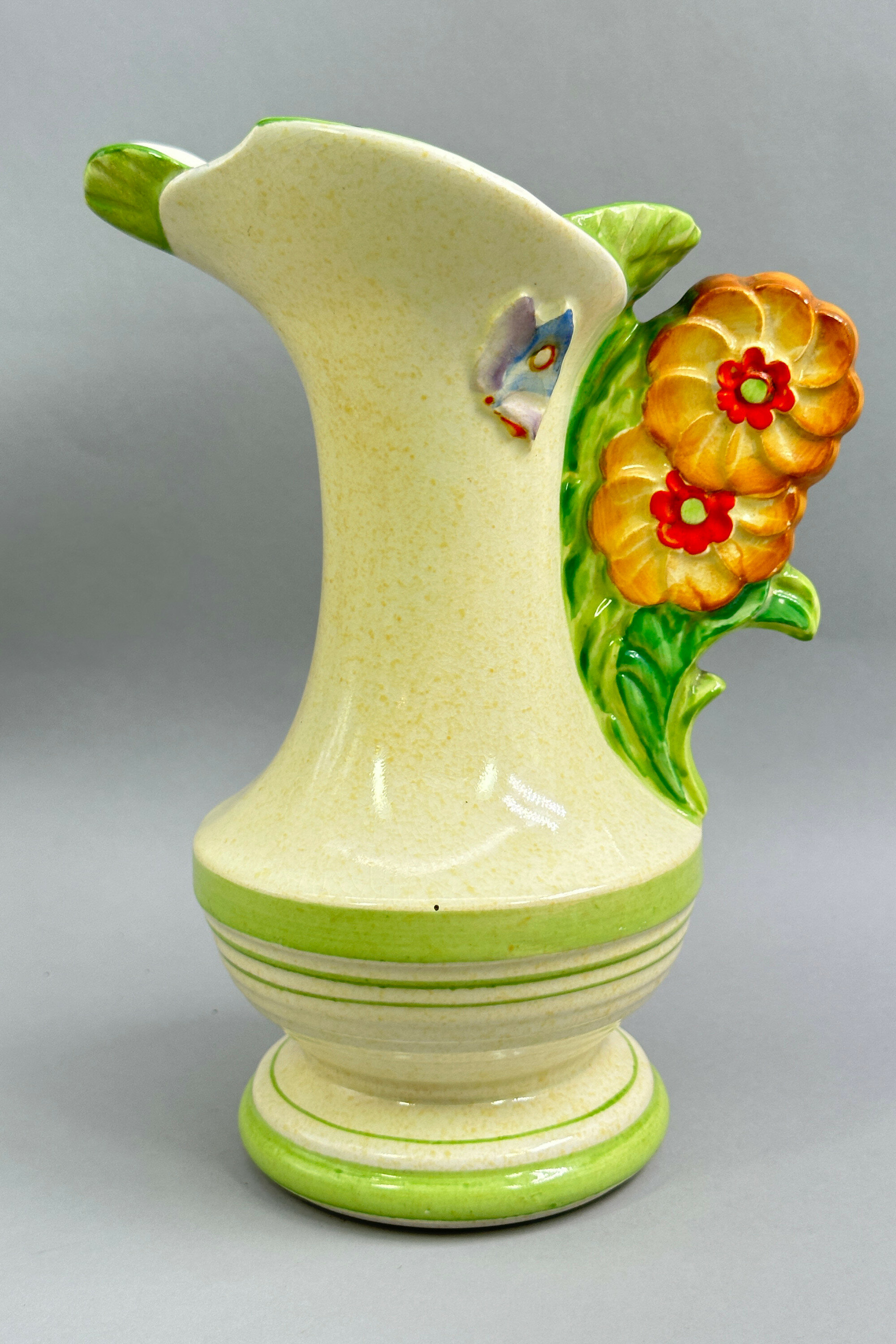
Art Deco Style Ceramic Jug with Floral Handle, probably 1930s
Price: £35
Oriental Style Vase, West German Pottery, possibly Scheurich, late C20th
Price: £45
West German Bay Keramik Pitcher with stylised floral designs, late C20th
Price: £45Founded by Eduard Bay in the 1930s and based in Ransbach Baumbach in the heart of the main West German pottery producing region, Bay Keramik grew to be one of the most prolific producers of ceramics in the ‘West German’ style and continued production into the 1990s. This piece retains its original paper label and the format of this allows dating to the 1970s/1980s. The jug has almost a slightly rustic feel and recalls much earlier German ceramic items. The numbers on the base indicate the form number but it has not been possible to identify this.
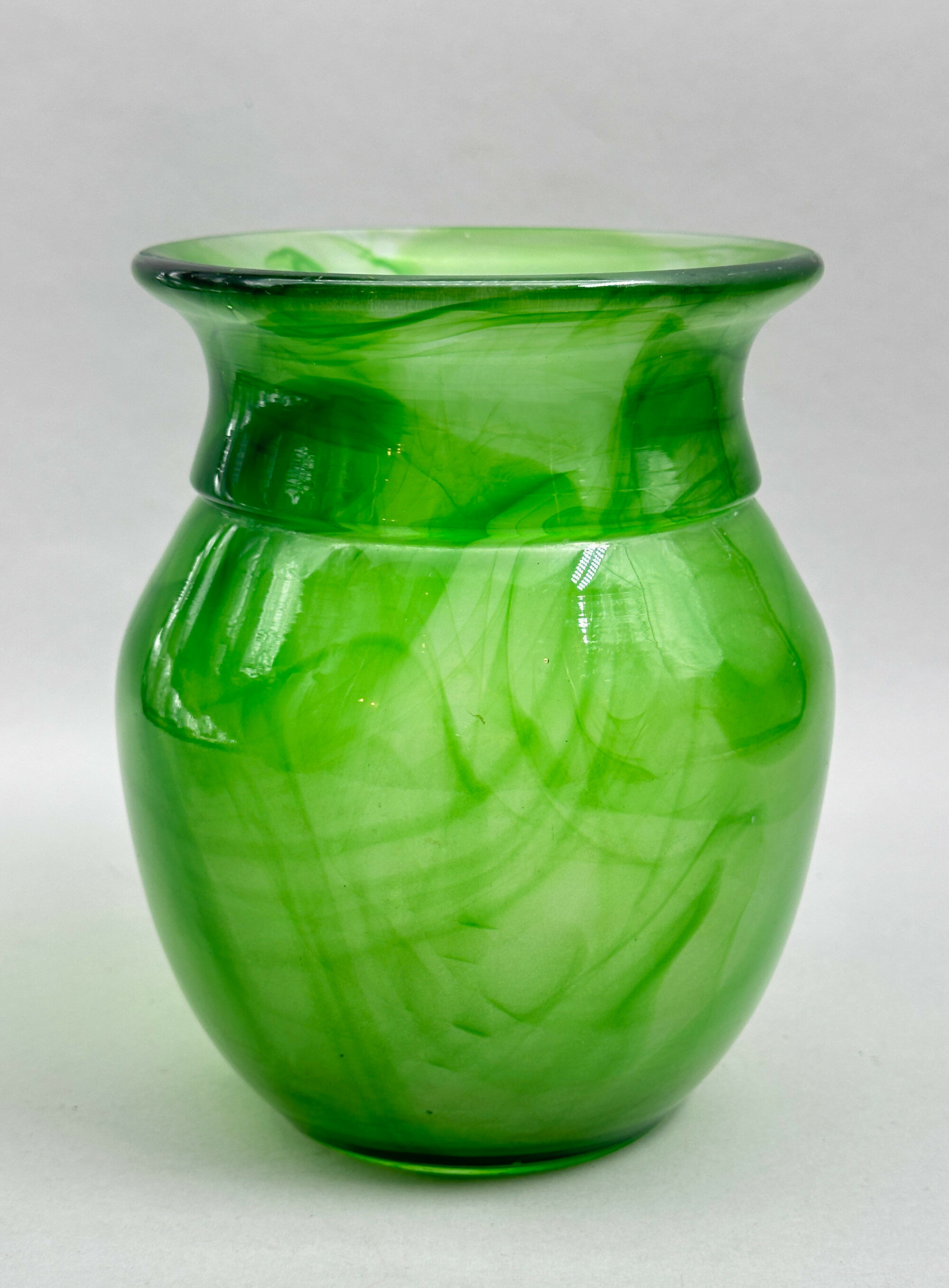
Davidson Green Cloud Glass Vase, 1930s
Price: £55George Davidson founded the Teams Flint Glass Works in 1867, which later became known as George Davidson & Co. In the 1880s the company began producing pressed glass tableware in a variety of shapes and by the 1920s their designs began to reflect the new Art Deco trends. The firm continued production until the 1980s, closing in 1987. This vase is typical of their Art Deco inspired designs although is rather less commonly found today. It has the pattern number '34 'SVF', 'S' standing for 'small', 'V' for 'vase' and 'F' for 'flared rim' and was produced from 1934 to 1942 (see www.cloudglass.com). A slightly larger version was made as well with the pattern number '34' 'VF'. The swirling effect was typical of Davidson's 'cloud glass' designs, one of its most popular ranges. In mint condition, this vase might well fill a gap in a collection of Davidson pieces or pre war British glass generally.
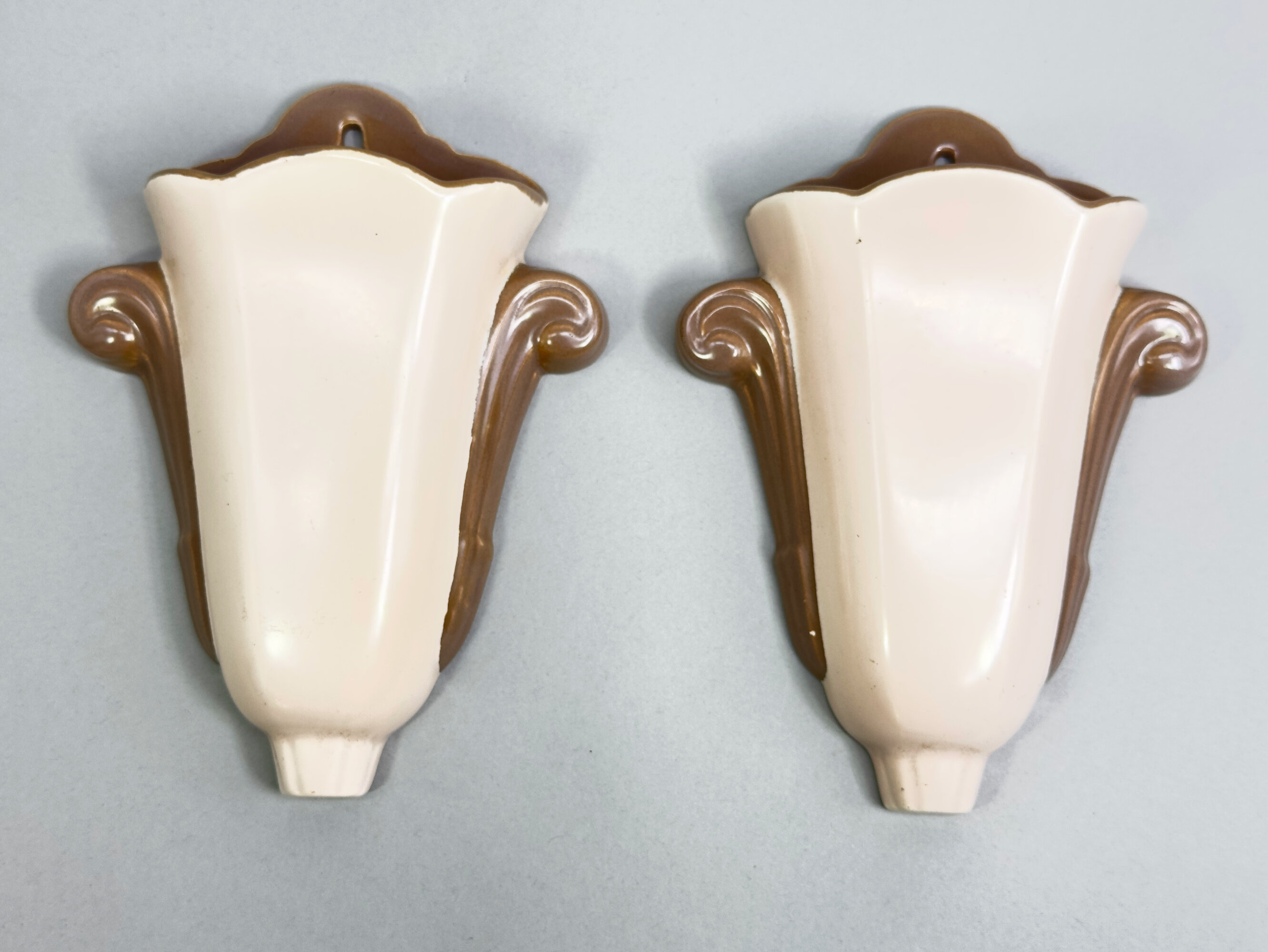
Pair of Art Deco style Wall Pocket Vases, Poole Pottery, mid C20th
Price: £55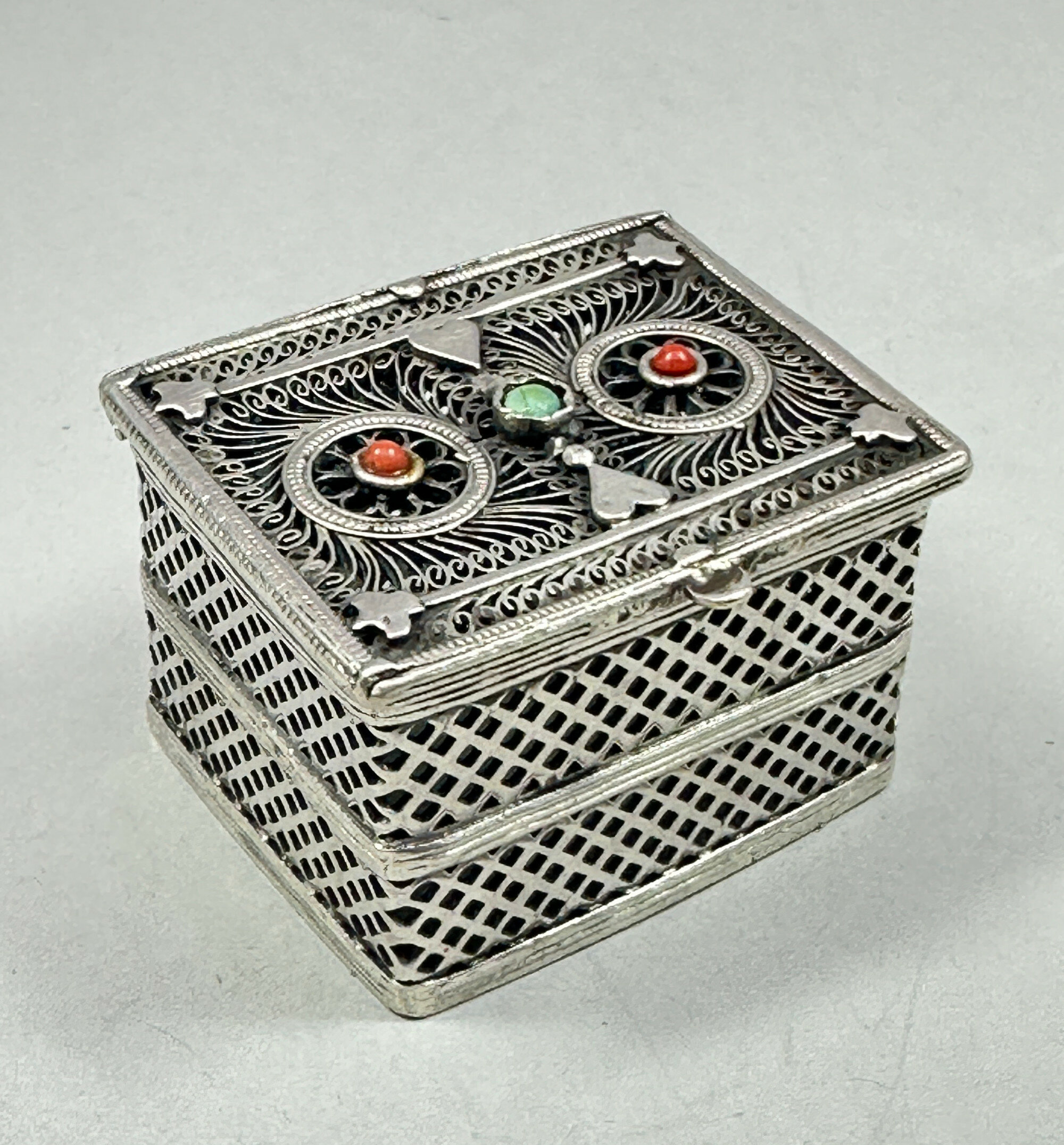
Silver Cricket Box, Islamic probably Persian, early C20th
Price: £110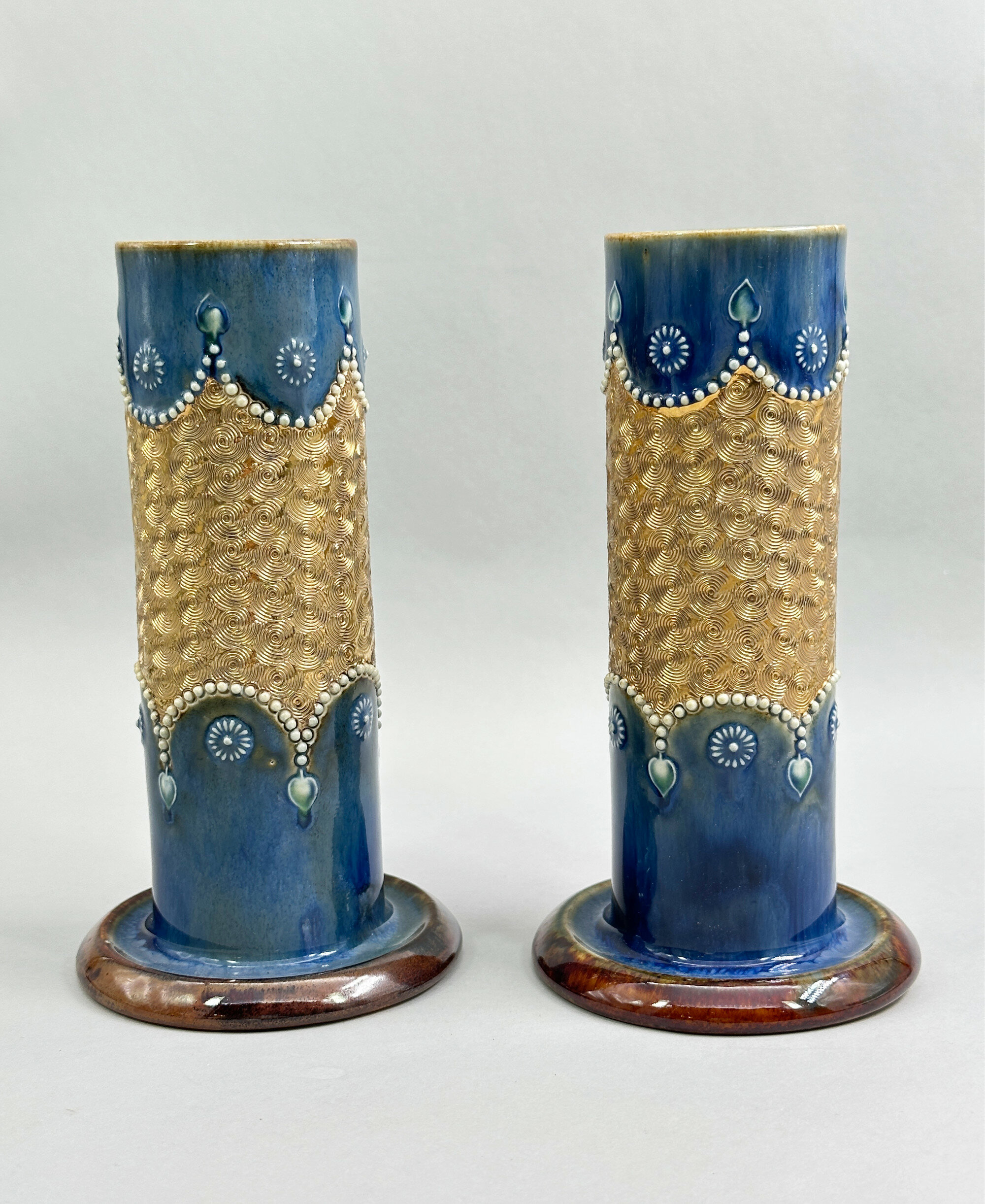
Pair of Royal Doulton Spill Vases with gilt decoration, 1920s
Price: £180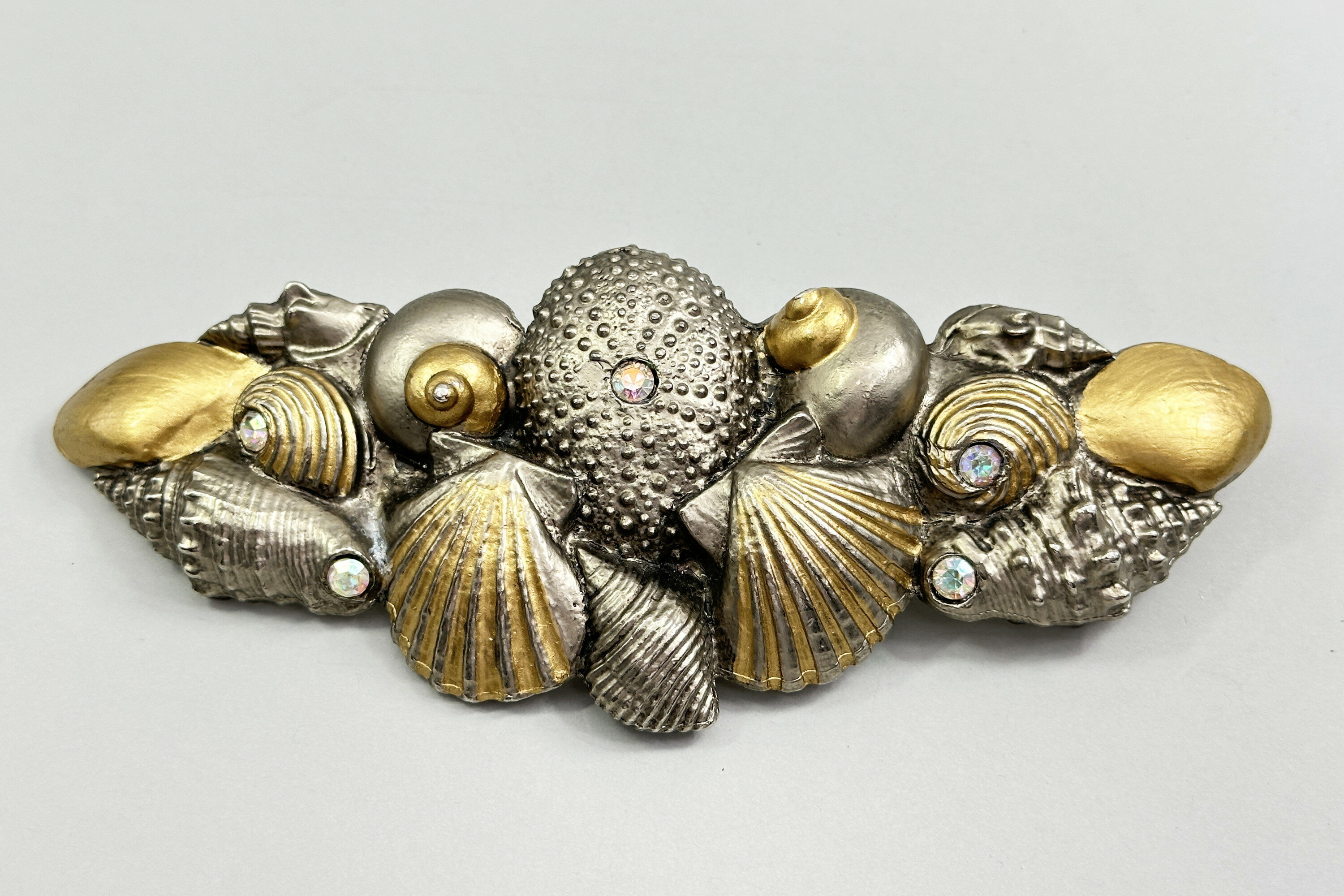
Massive Grotto style belt buckle c1980
Price: £25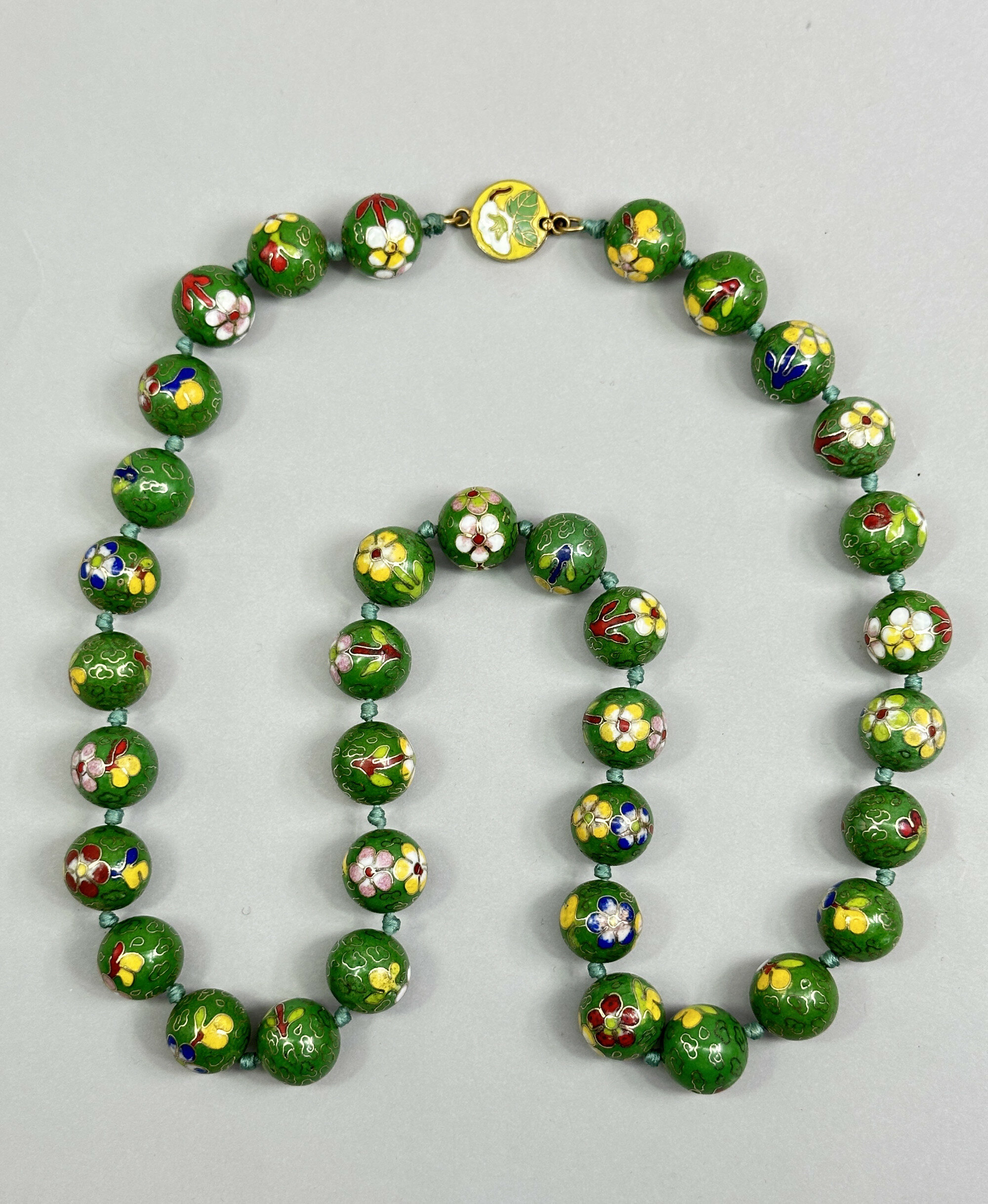
Long strand of Chinese cloisonne beads c1950
Price: £60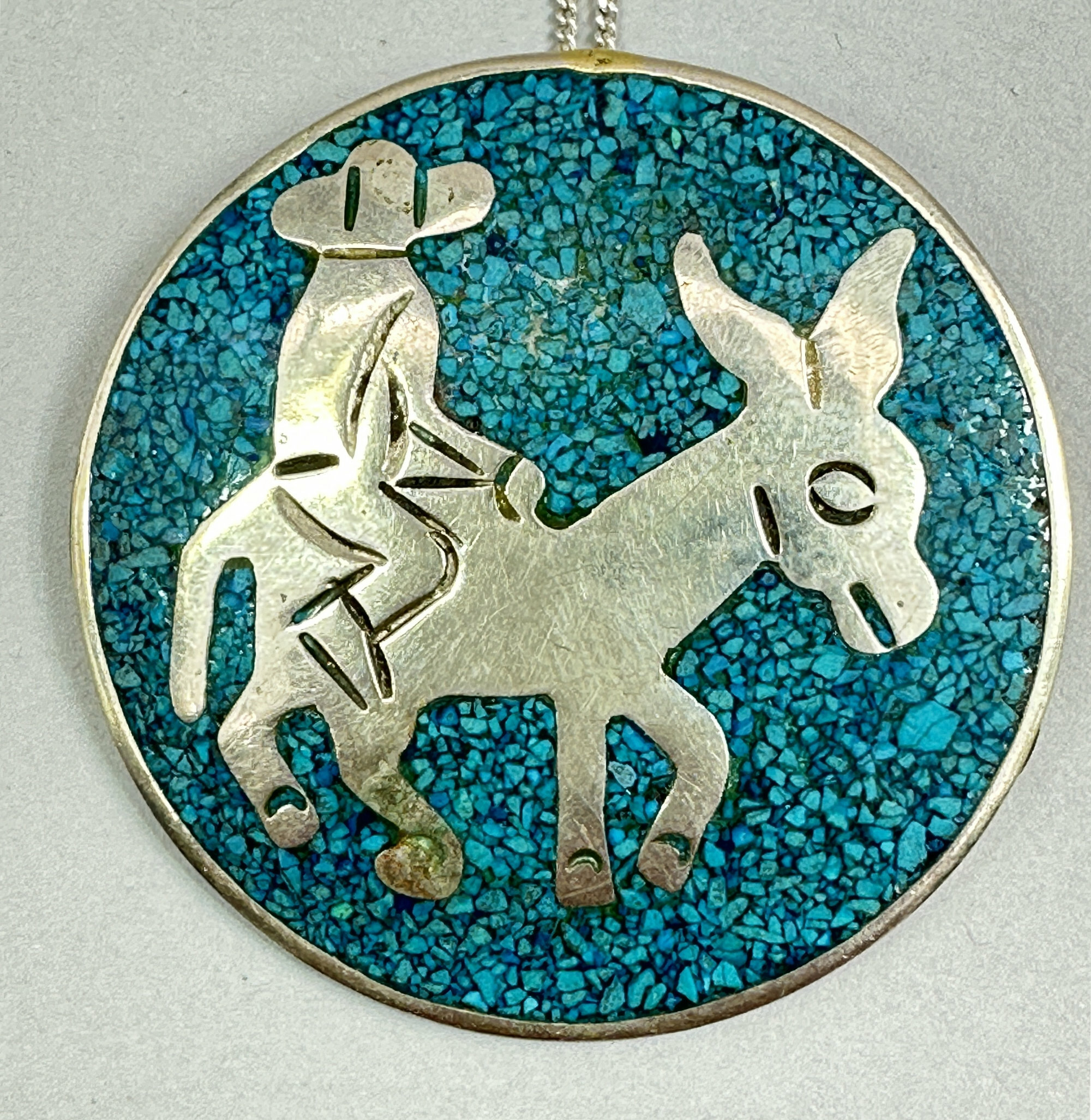
Round pendant set with turquoise, Mexico, c1970, the chain later.
Price: £65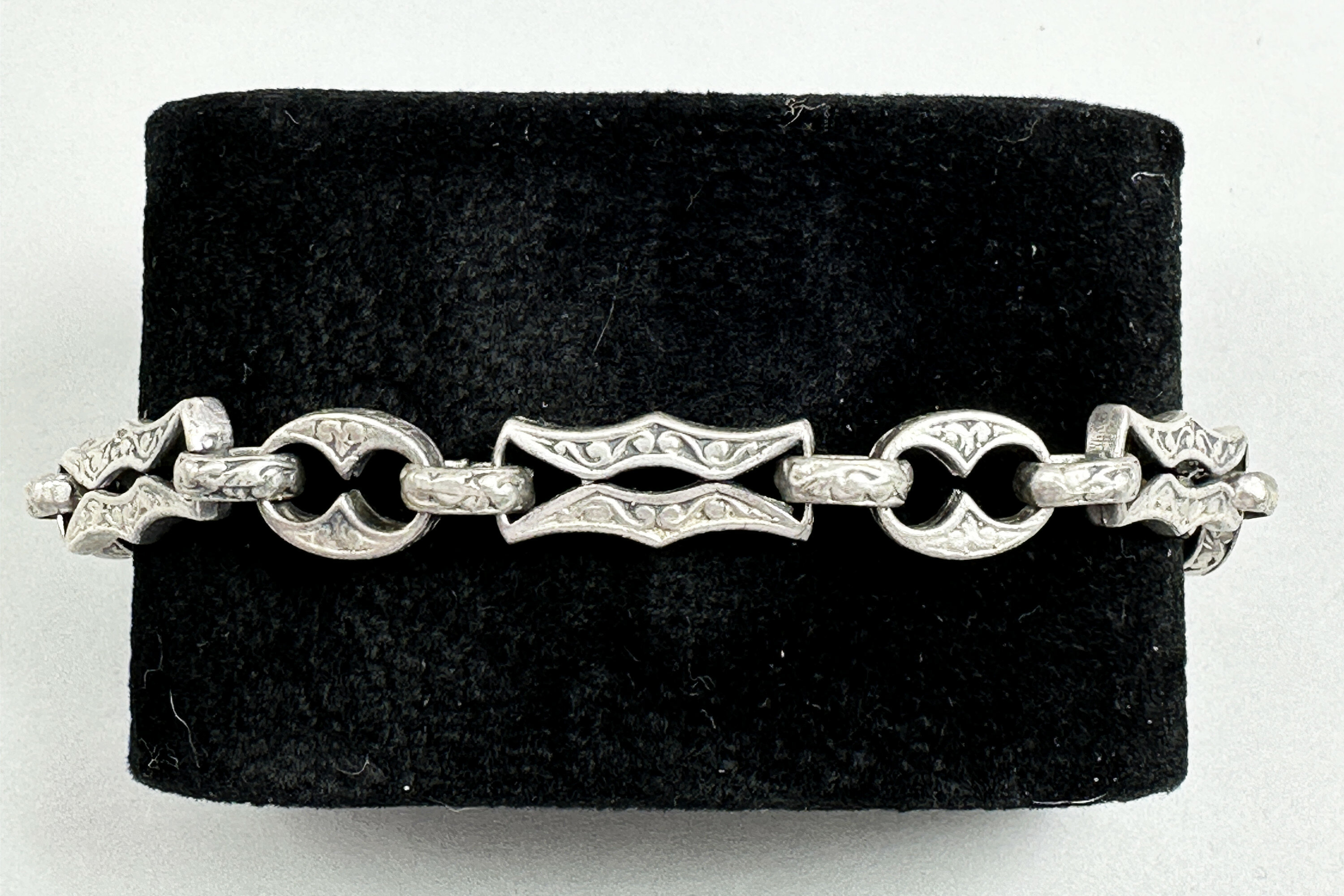
Victorian ladies watch chain c1900
Price: £40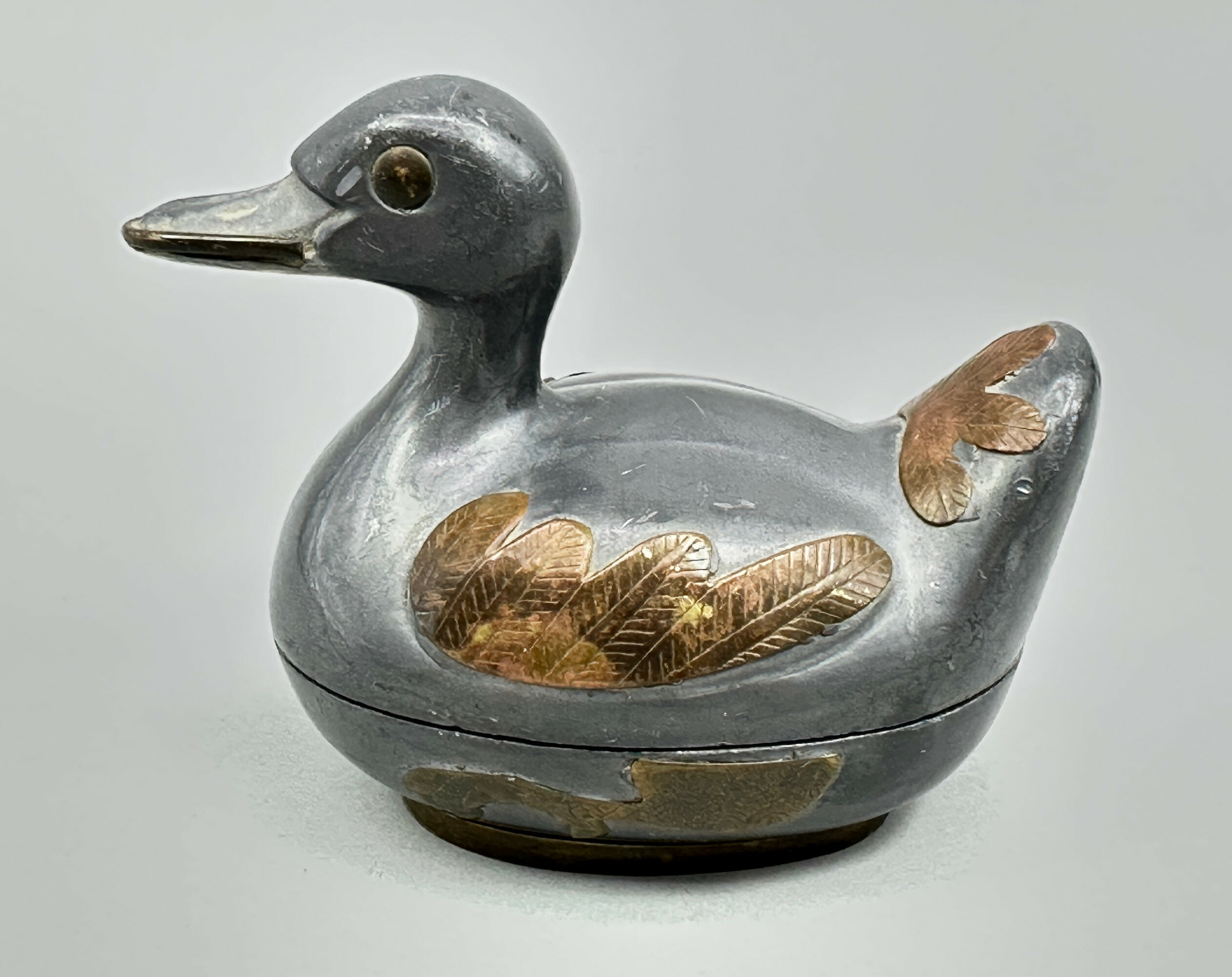
Pewter and brass box and cover in the form of a Mallard Duck, Gatco, Hong Kong, 1960s
Estimate: £20 – 30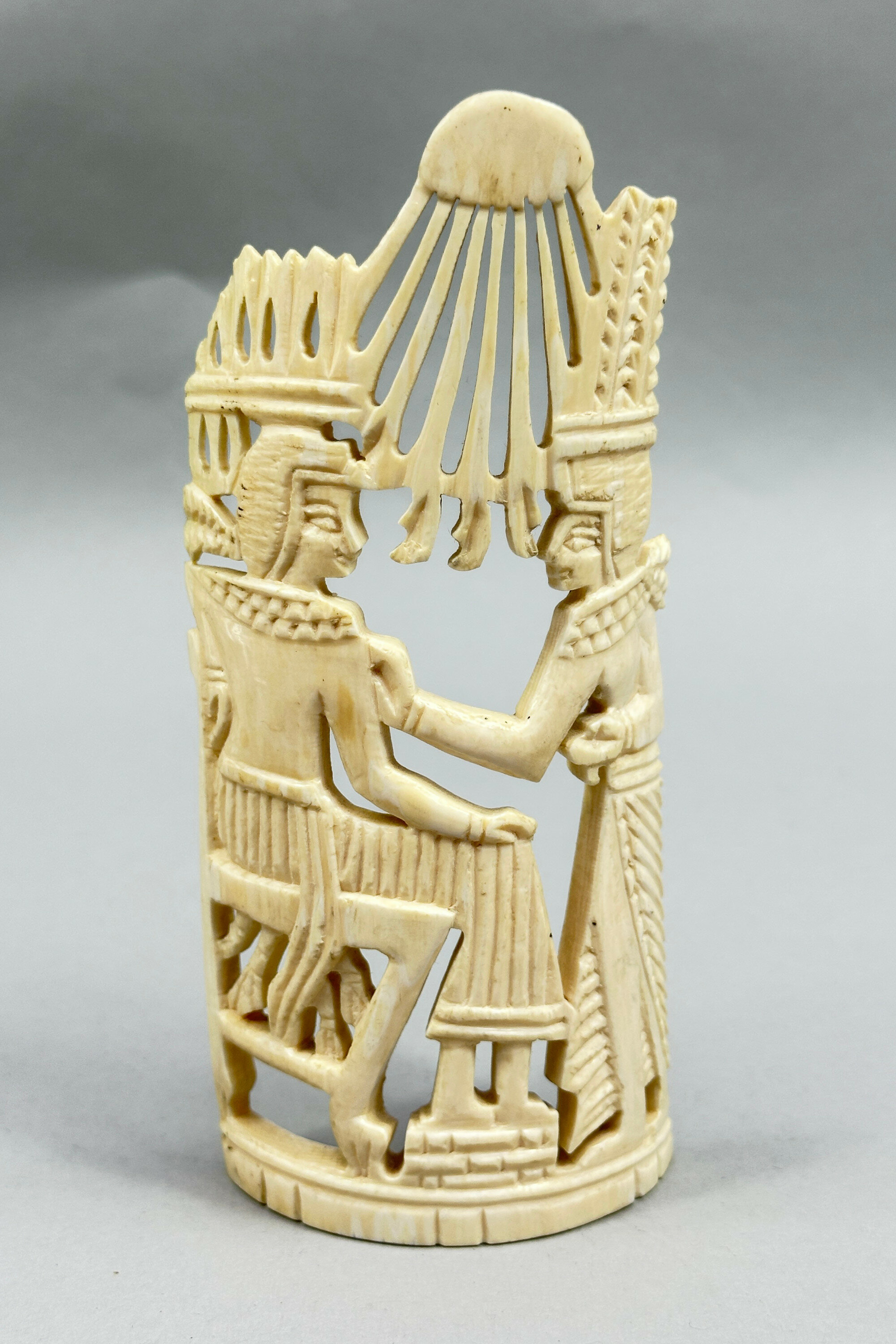
Egyptian table decoration depicting a Pharoah and Attendant, c1940
Price: £45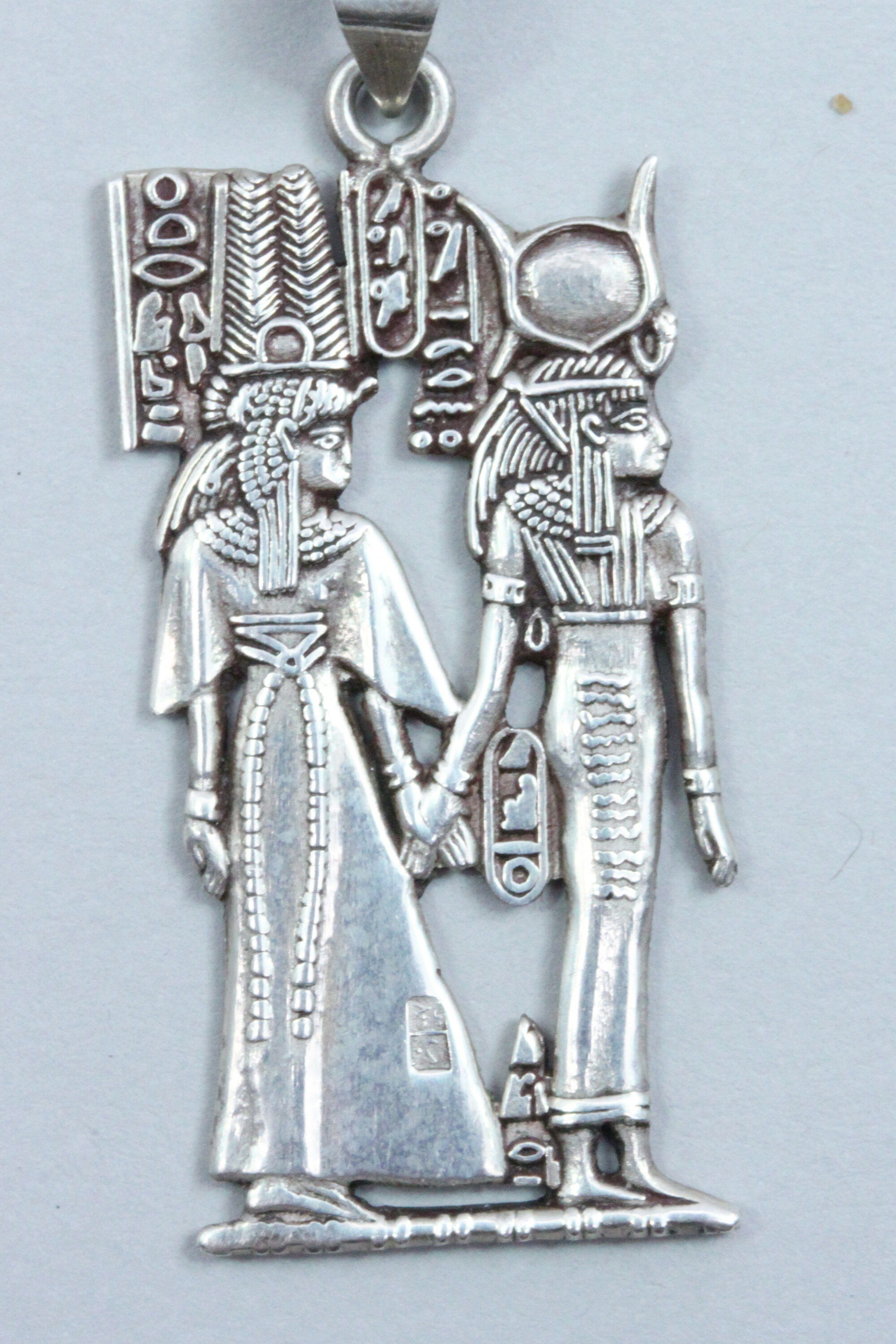
Silver Pendant, Tutankhamun and Ankhsenamun, Egyptian 1950s
Price: £35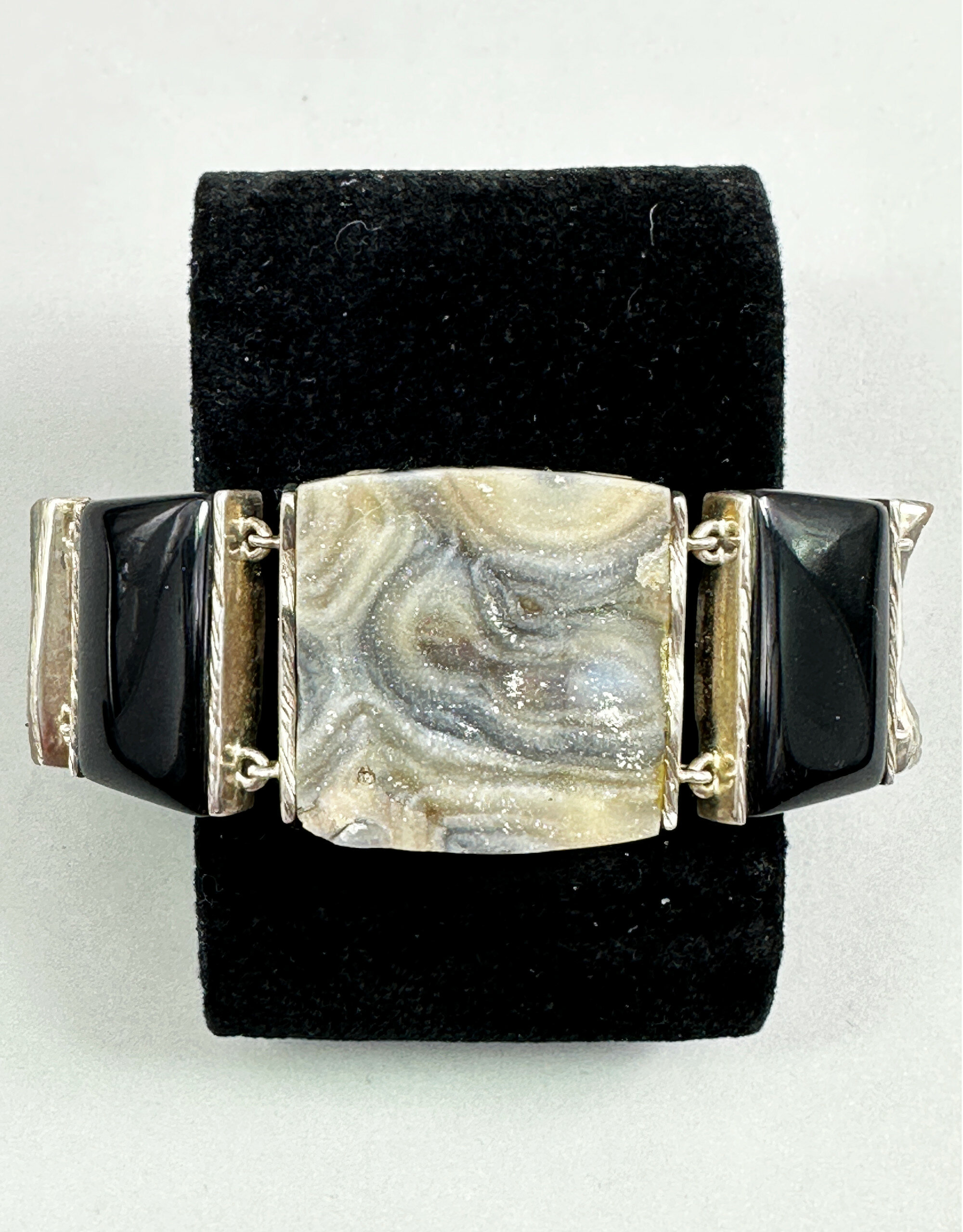
Druzy Quartz and Onyx panel Bracelet, c1940
Price: £125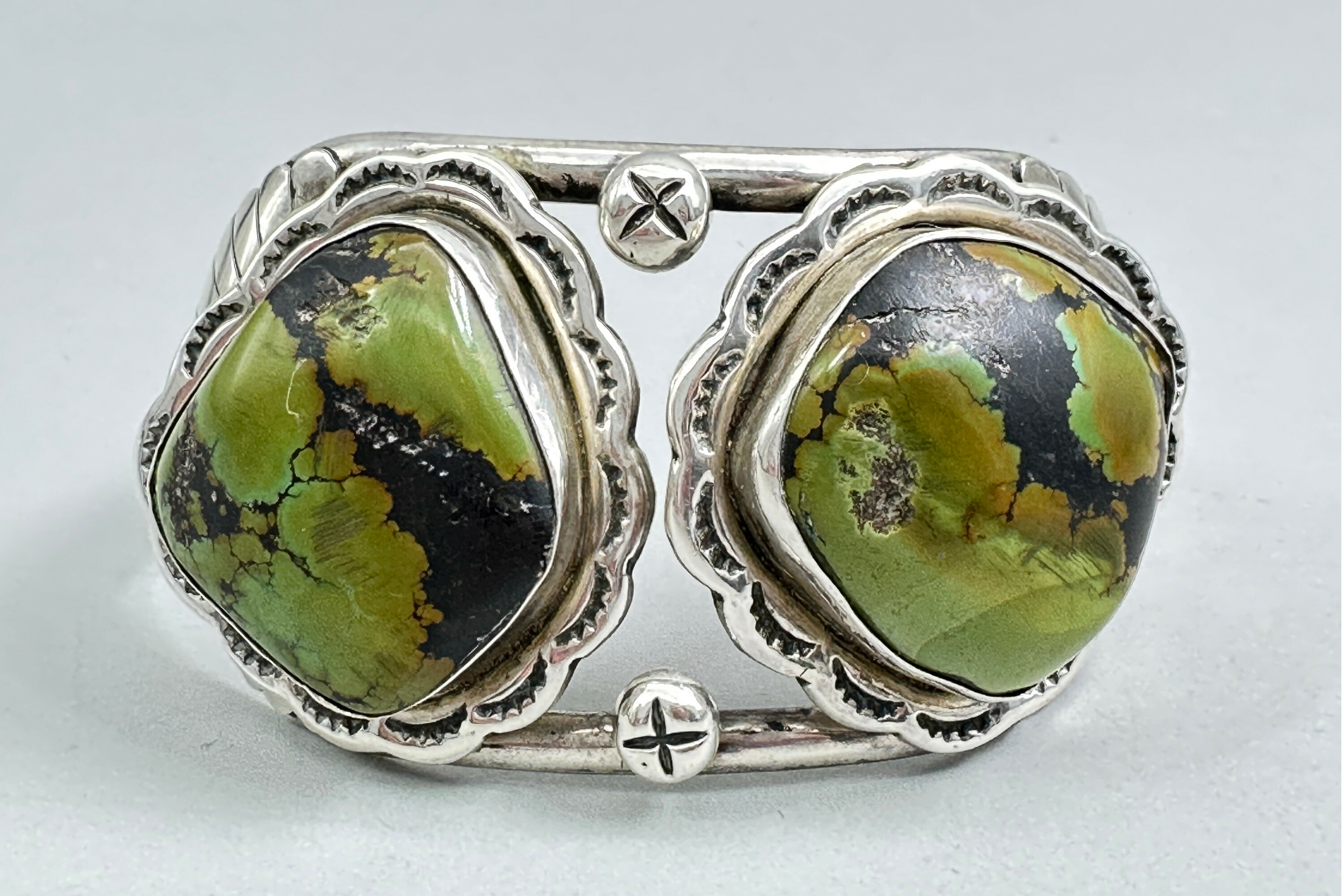
Native American turquoise cuff bracelet, 1960s
Price: £225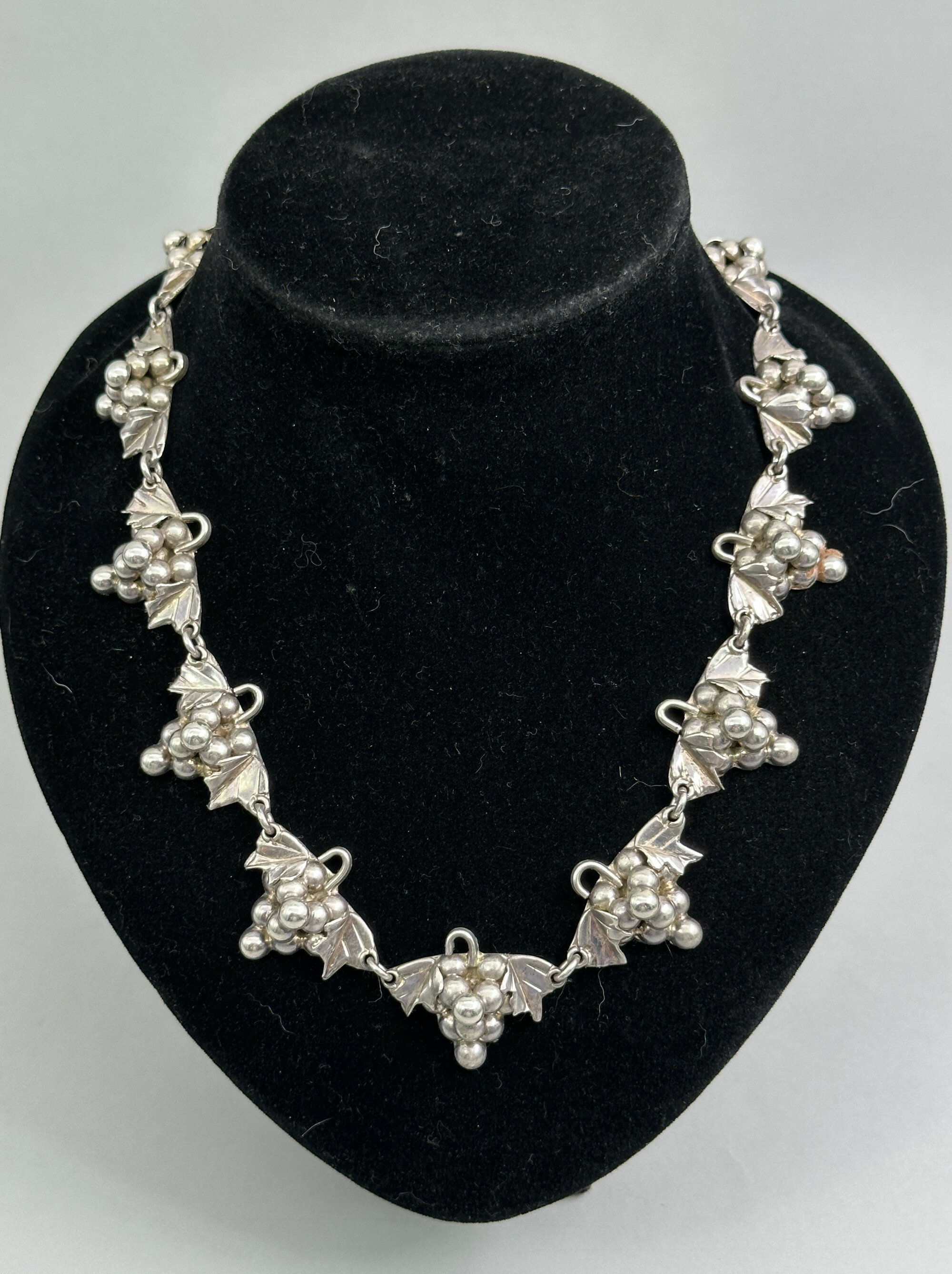
Taxco grape motif necklace, c1980
Price: £250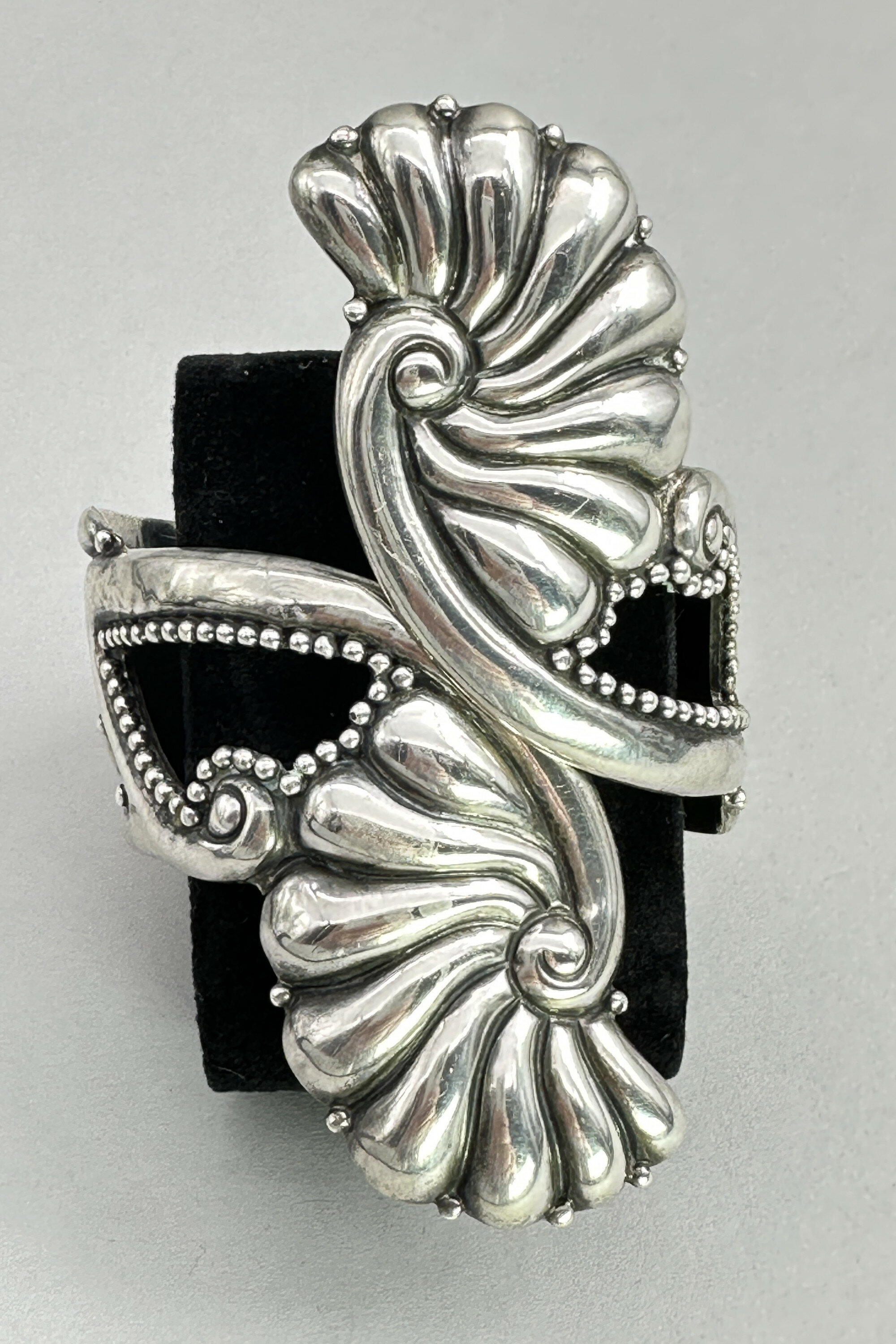
Taxco clamper bracelet, attr. to Justo or Jorge Castillo, 1940s
Price: £450Justo and Jorge Castillo come from the Los Castillo workshop. Los Castillo was an influential and ongoing design and manufacturing enterprise established in 1939 by Antonio Castillo and his brothers Justo and Jorge and their cousin Salvador Teran. Los Castillo is known for sterling jewellery and fine pieces in "married metals" combining various metals such as silver, copper and brass. Castillo who arrived in Taxco in 1923, began his long career working for William Spratling at Taller de las Delicias. He married Margot van Voorhies prior to opening Taller Los Castillo bu they were later divorced in 1946. (see The Little Book of Mexican Silver Trade and Hallmarks, 2013)
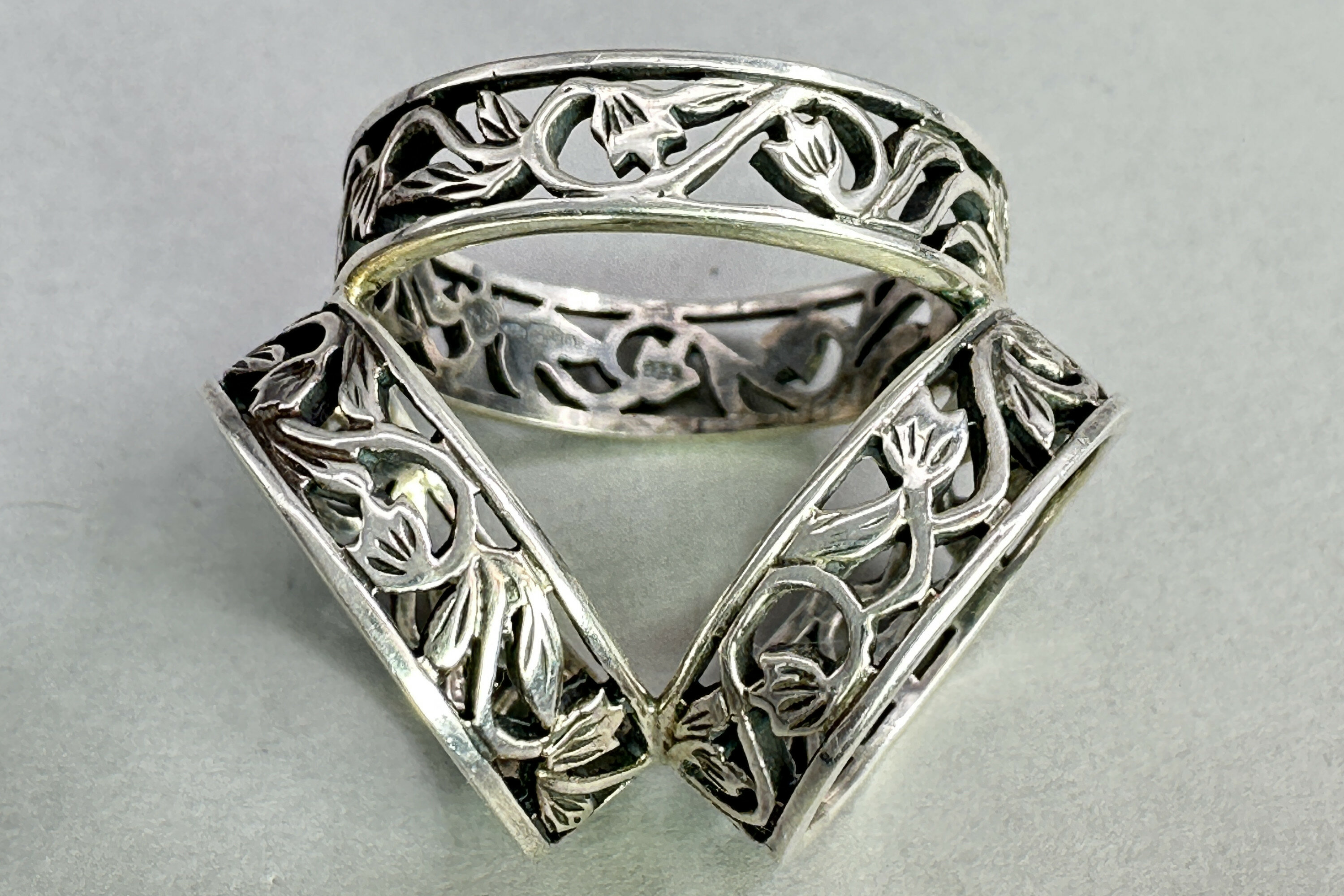
Rennie Mackintosh silver scarf ring with scarf included, c1990
Price: £45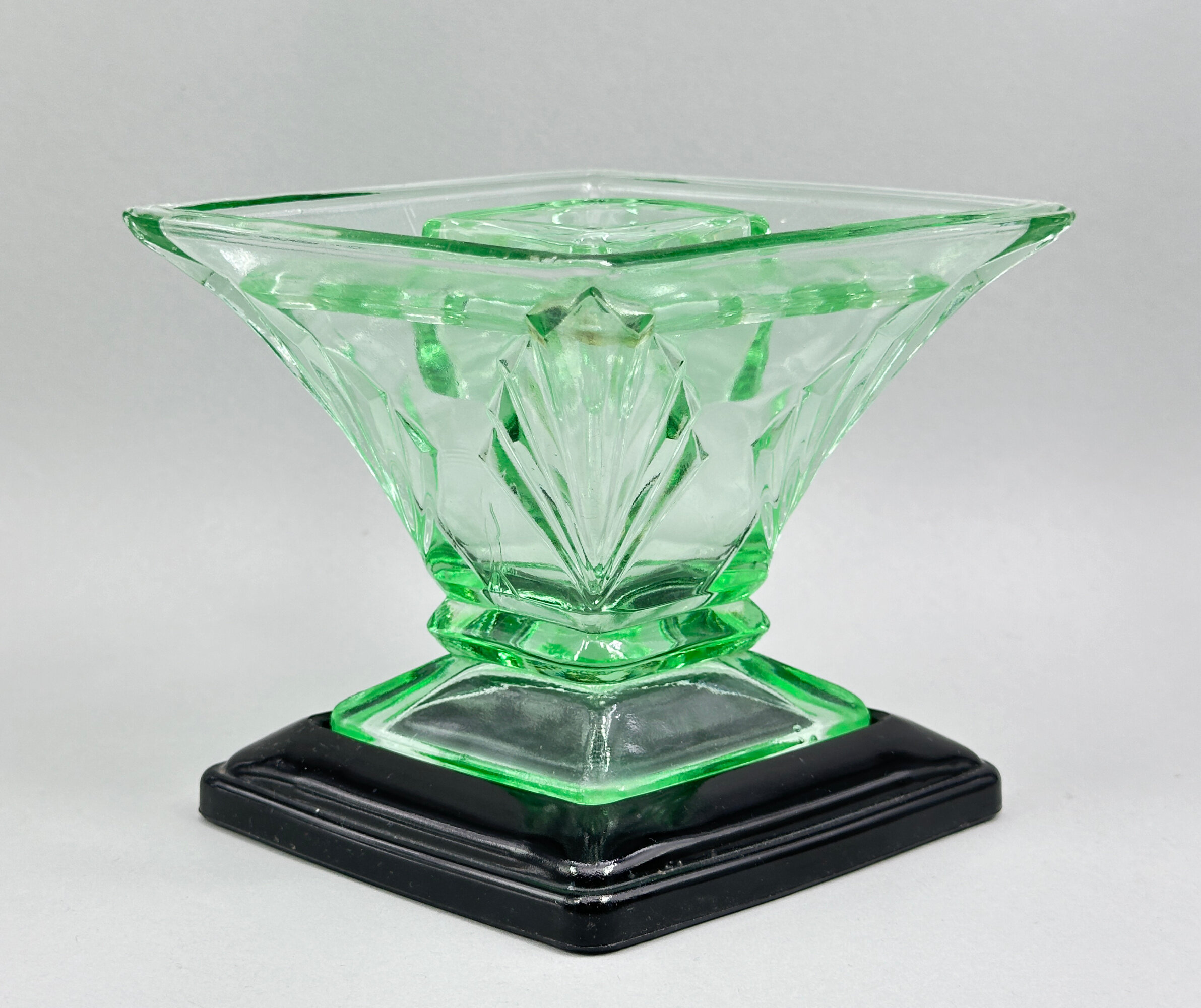
Art Deco Flower Vase, Frog and Stand, Bagley Glass, Spinette Range, 1930s
Price: £45Bagley Glass was established in Knottingly, England (south east of Leeds) in 1871. Bottle makers at first they branched out in 1912 and opened a department 'The Crystal Glass company' which made crystal and pressed glass. But it was for the latter that Bagley were to become famous and they became the biggest manufacturer of pressed glass in England in the years before and after the war. Many of their designs were influenced by the Art Nouveau styles and this flower vase, unusually presented complete with its frog and stand, is a classic example of their range.
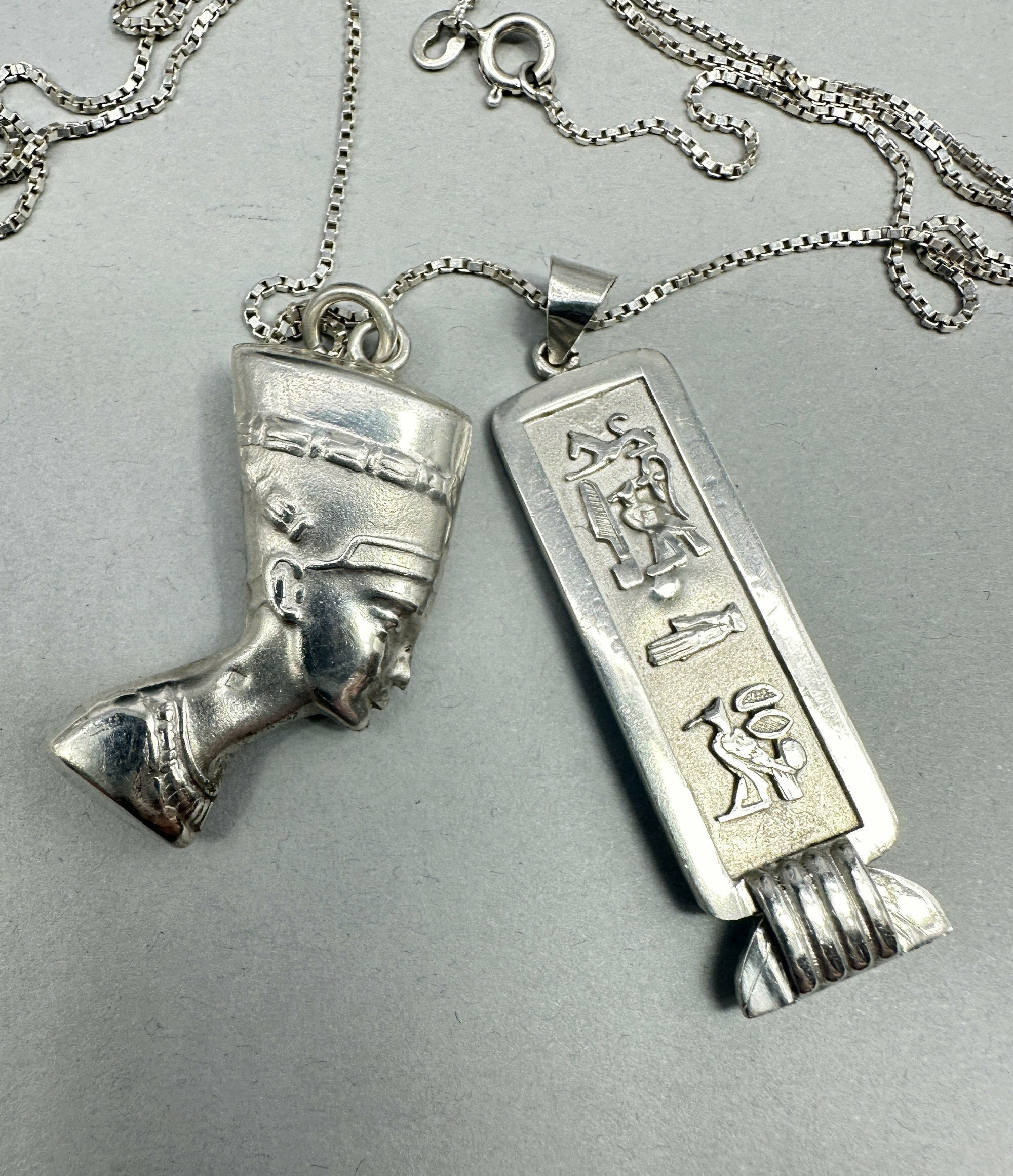
Egyptian Nefertiti and Talisman necklace on long chain c1970
Price: £95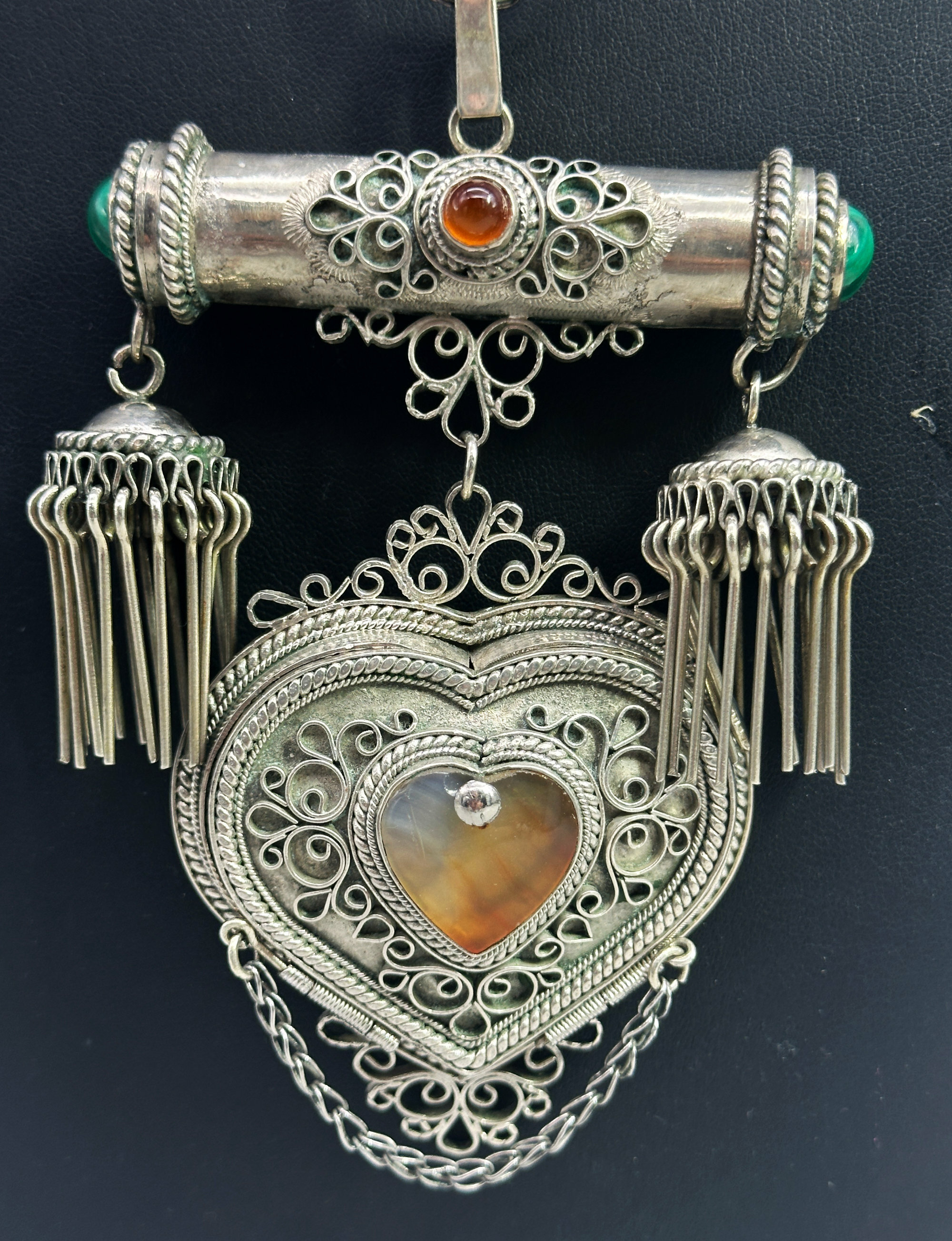
Large Islamic silver necklace with heart shaped box c1920
Price: £85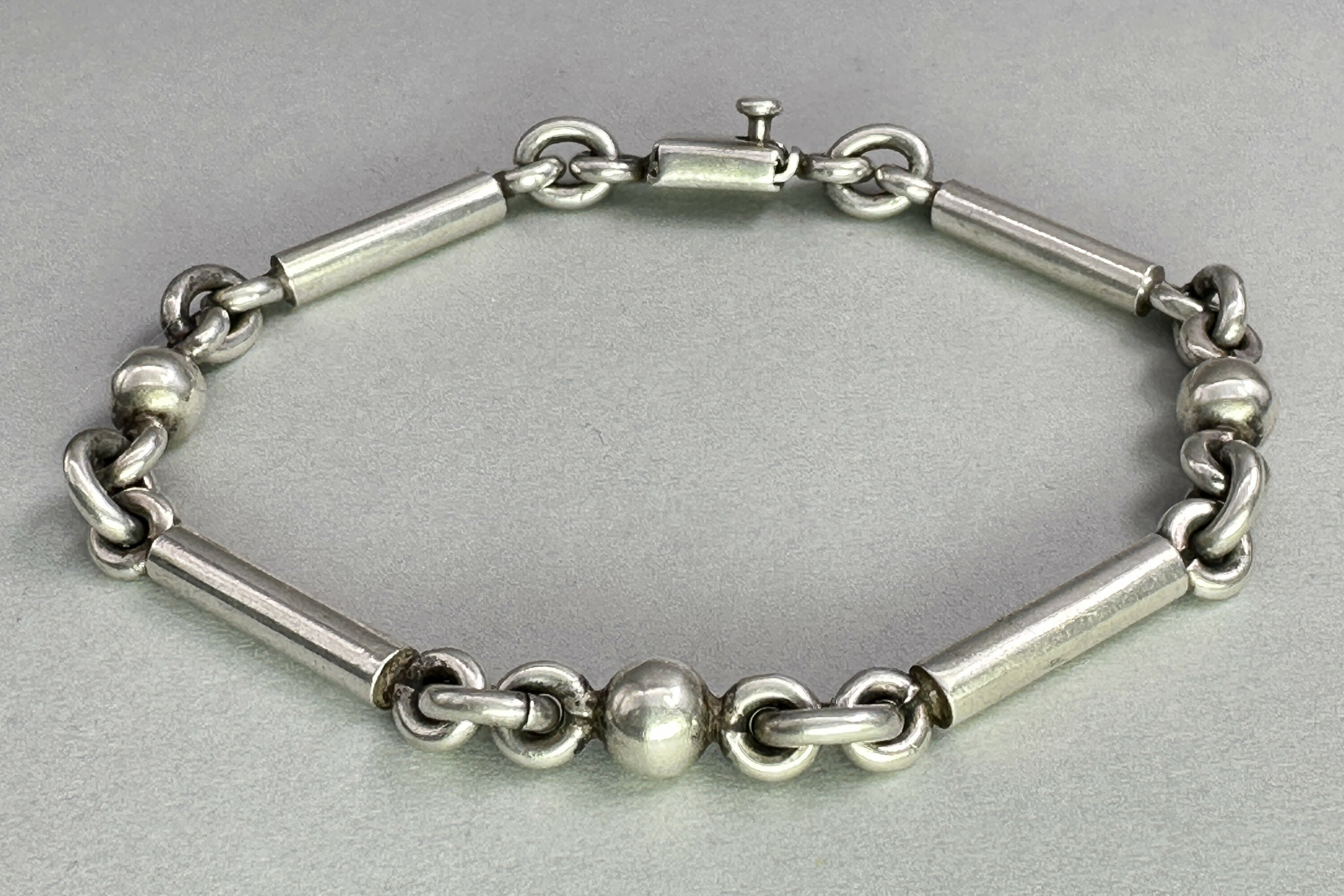
Taxco silver bracelet, c1980
Price: £50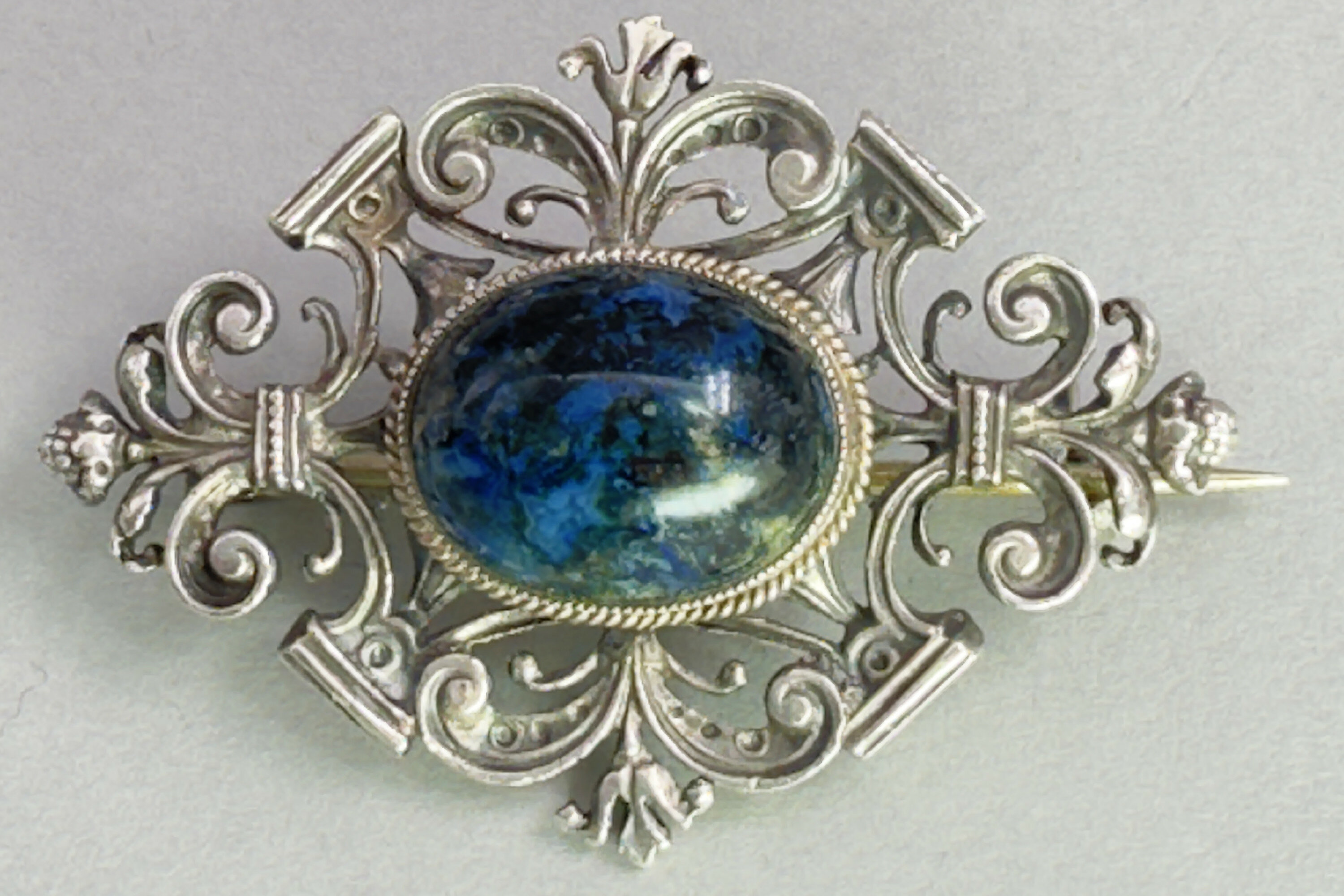
Florentine style lapis and silver brooch c1900
Price: £35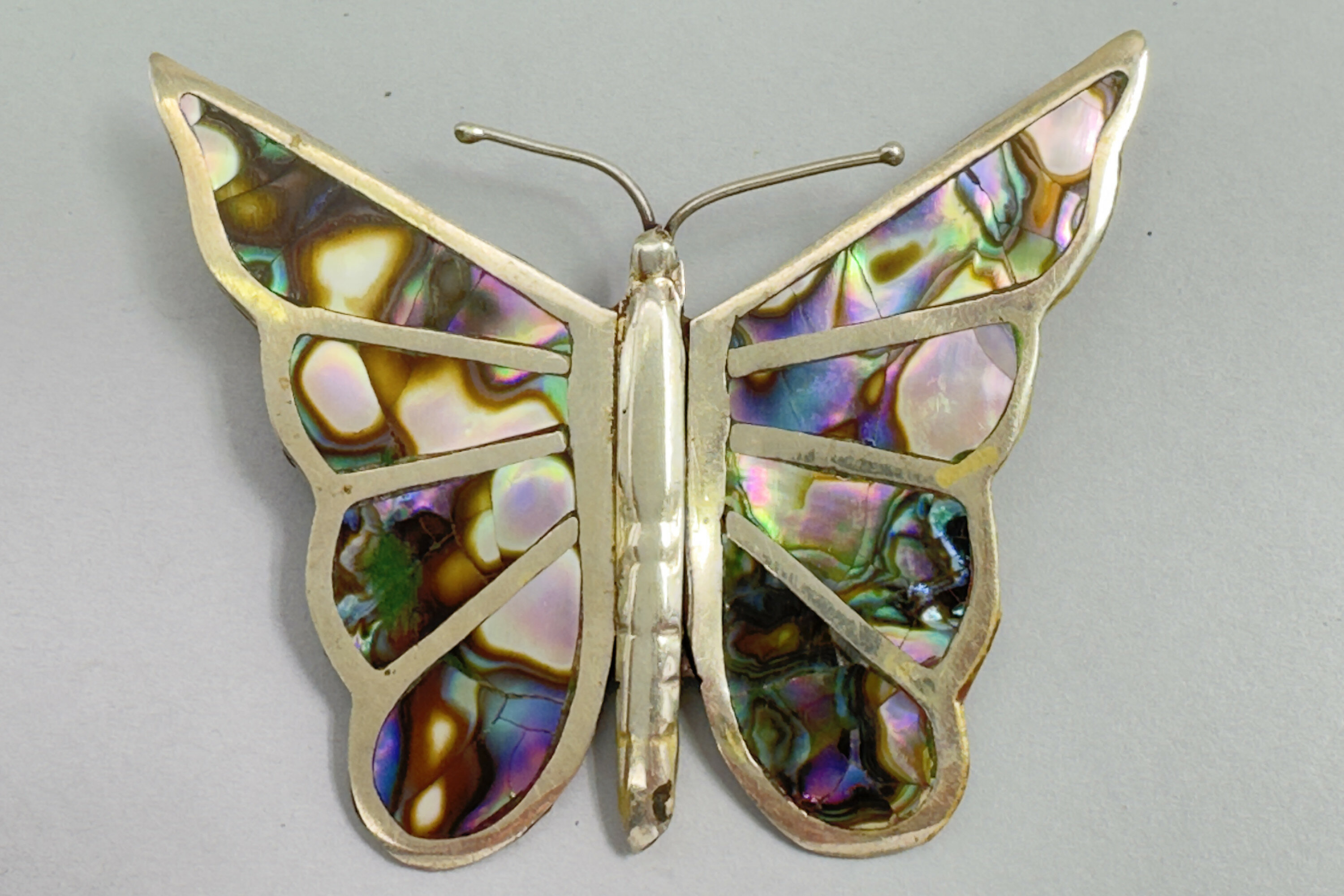
Taxco butterfly brooch with abalone, makers mark EL 1960s
Price: £55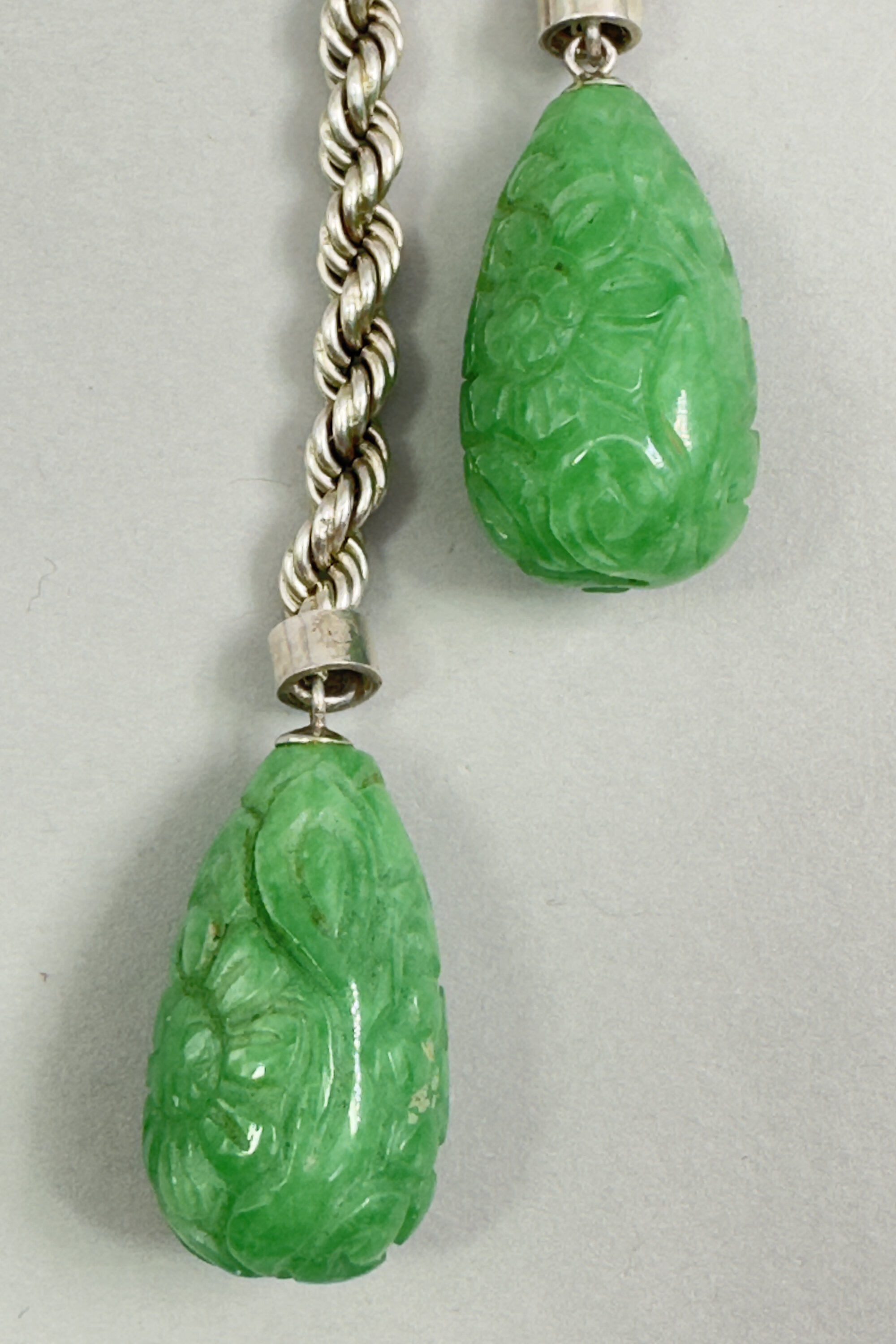
Stunning jade and silver lariat necklace, 20th century
Price: £150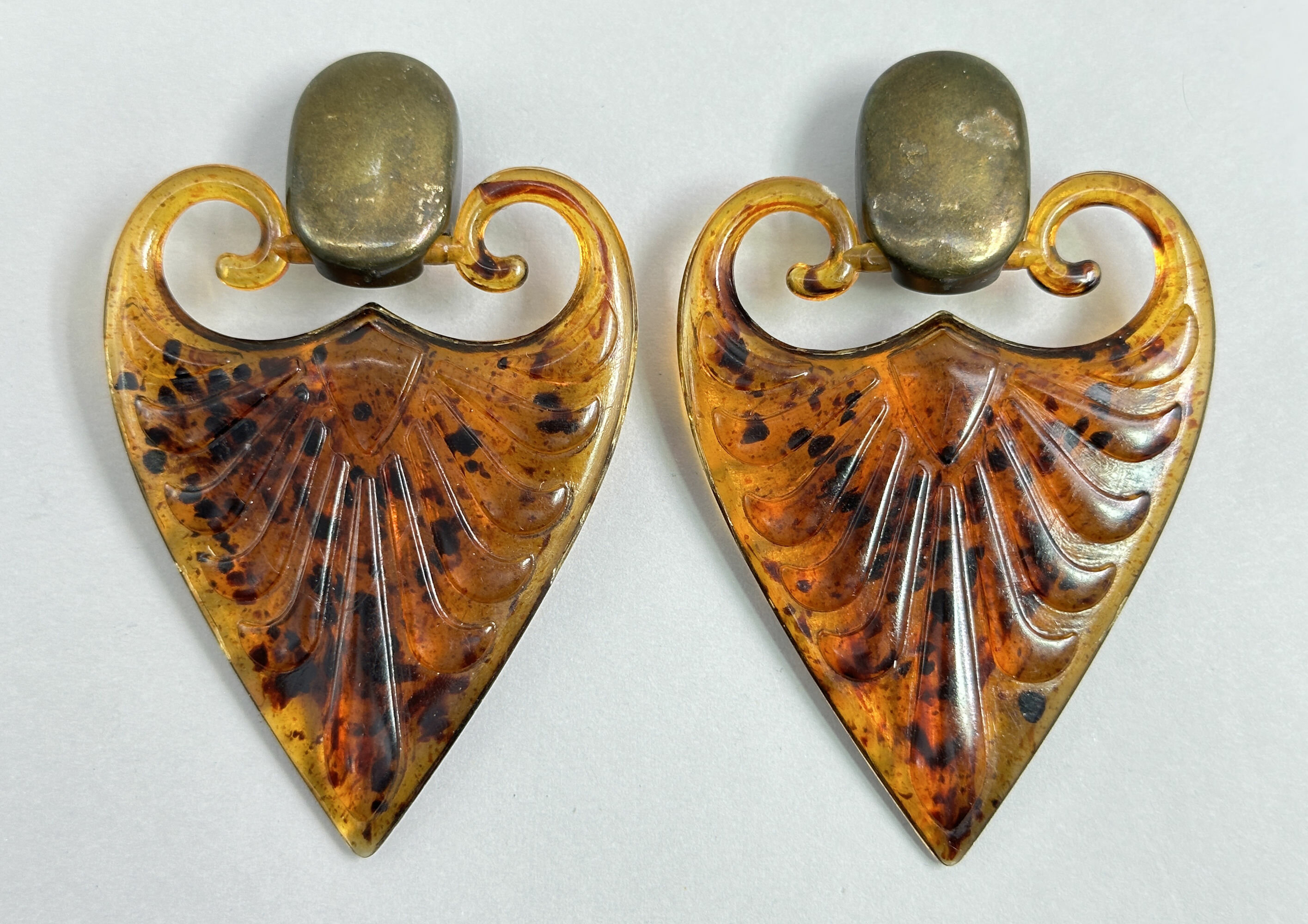
Pair of Italian faux tortoiseshell earrings, 1980s
Price: £15PLEASE NOTE THAT THERE IS FREE UK SHIPPING ON THIS ITEM. For international buyers the shipping cost will be reduced by the UK shipping cost, so don't worry if you are outside the UK, you still receive this benefit!
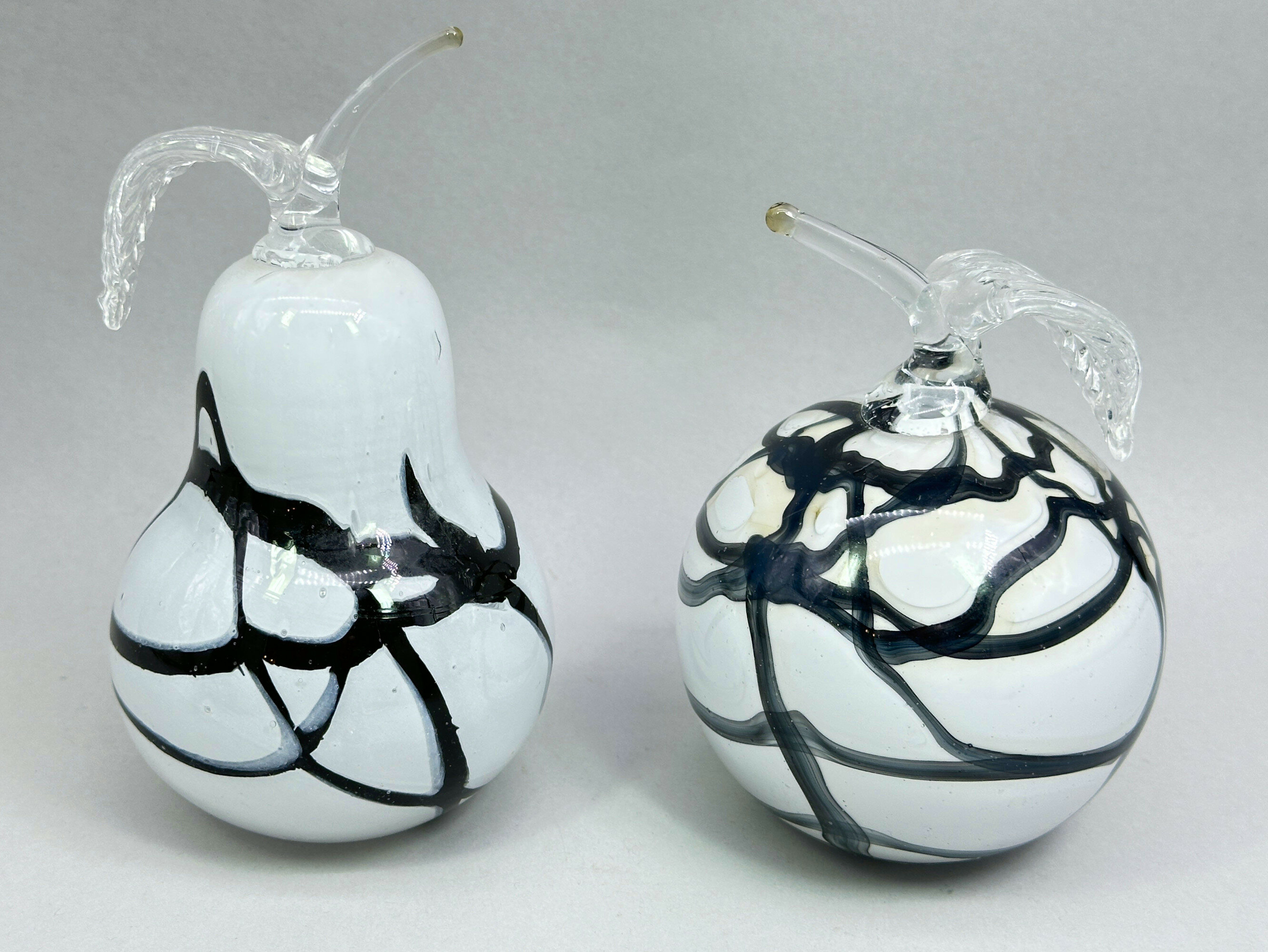
Two Amelia Art Glass Vases, Apple and Pear
Price: £30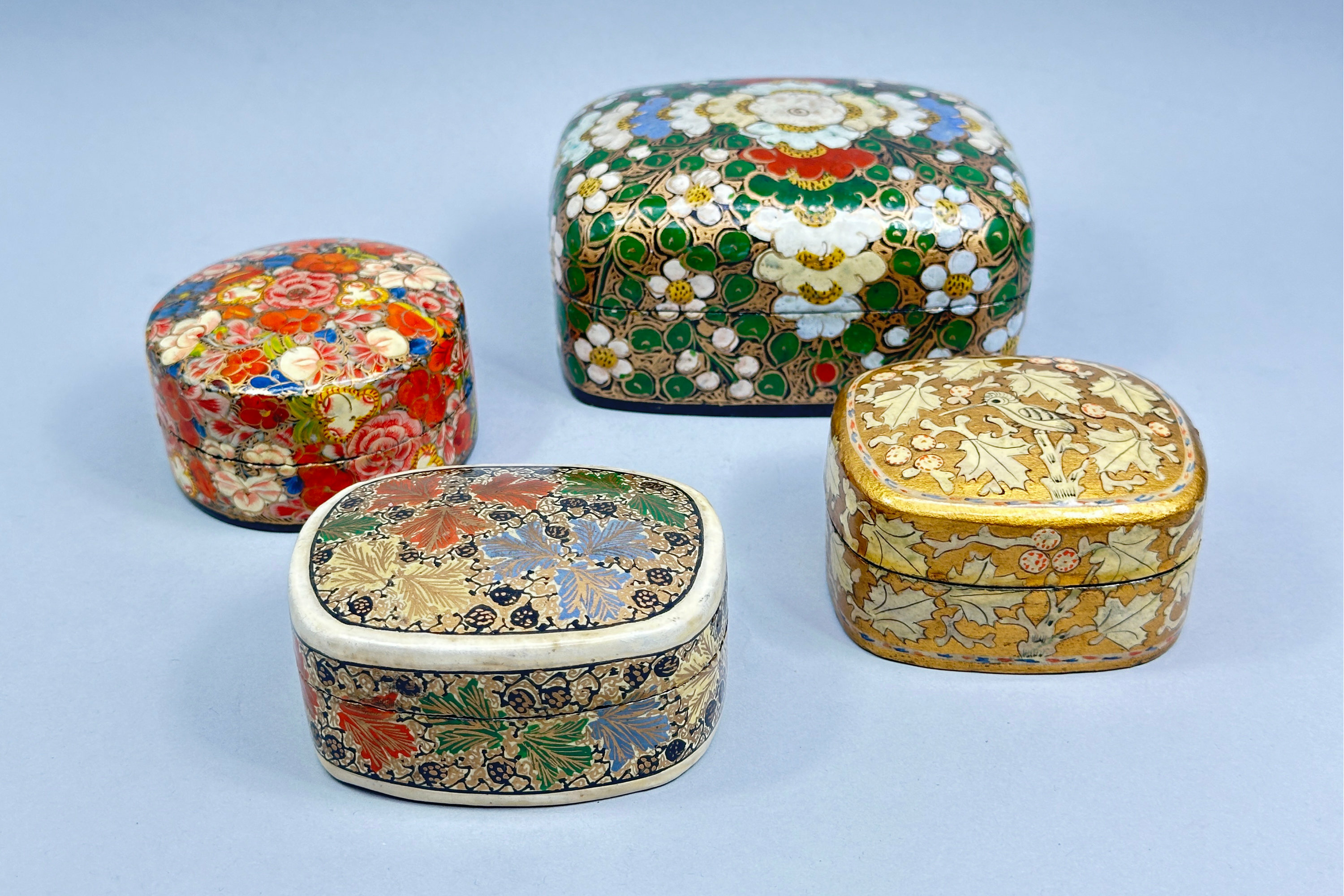
Four Papier-mâché Trinket Boxes, Kashmir, mid C20th
Price: £35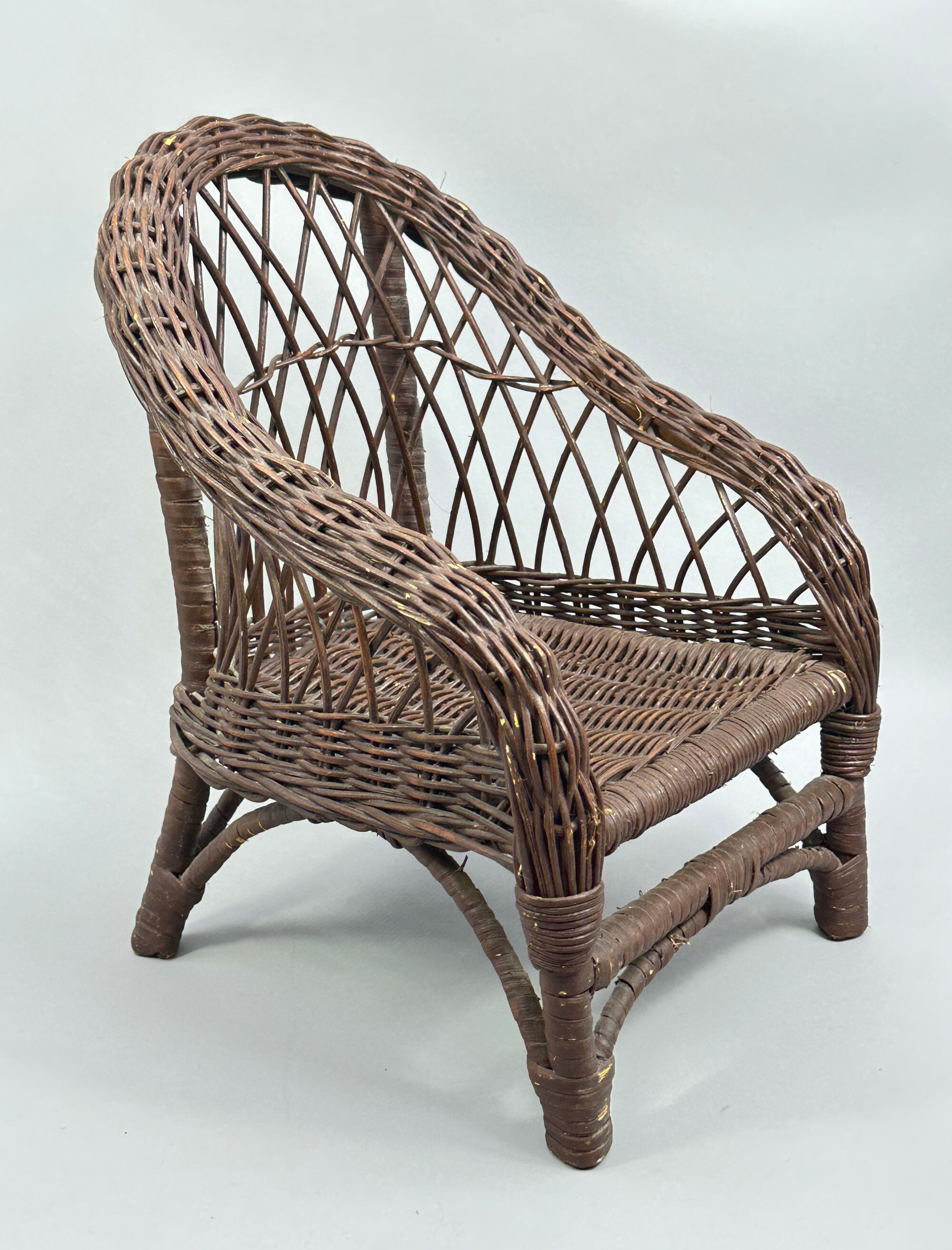
Toy Wicker Chair, mid C20th
Price: £35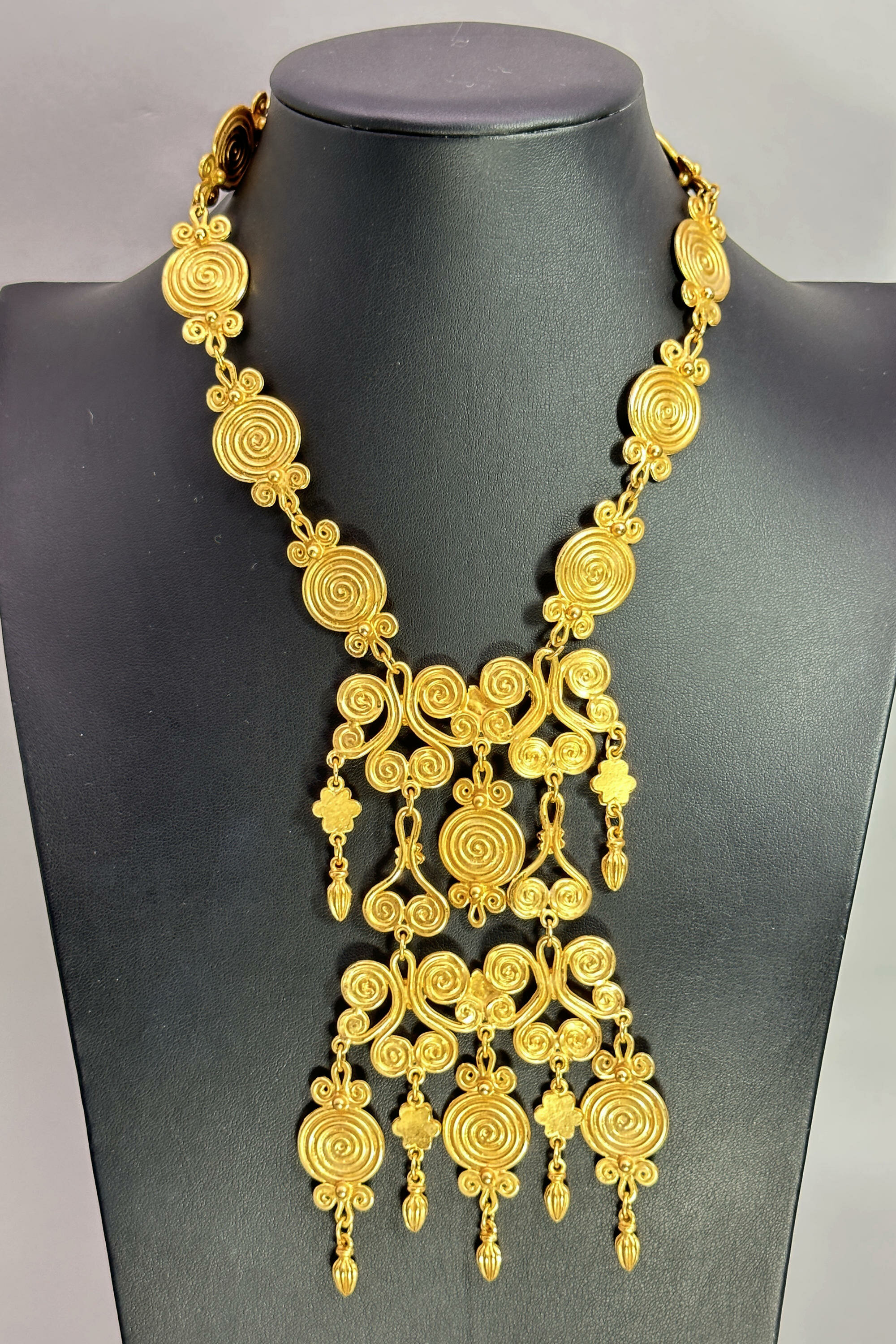
Statement necklace in the manner of Lalaounis c1990
Price: £75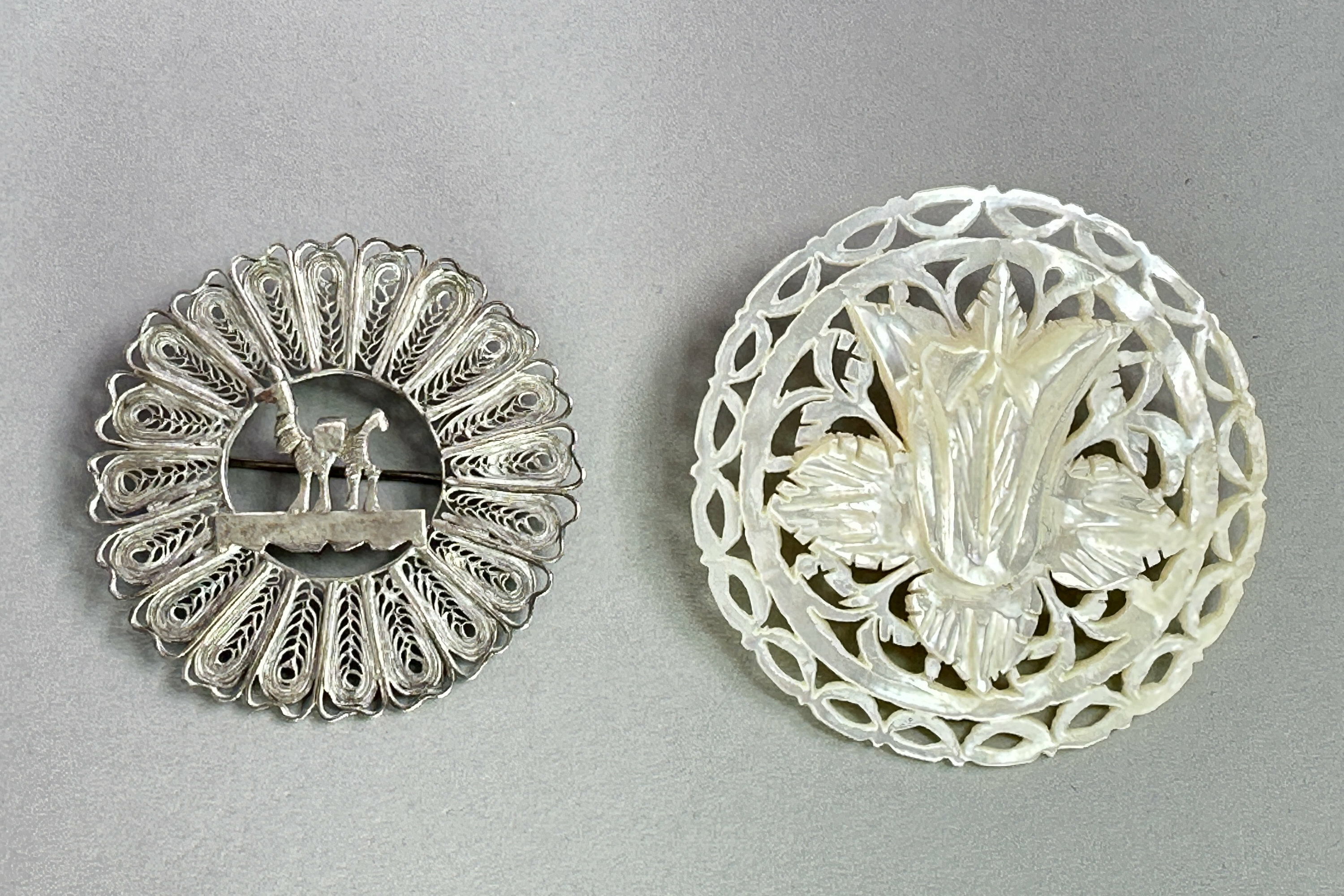
Two brooches - Jerusalem Mother of Pearl and Egyptian Silver, 1950s
Price: £15PLEASE NOTE THAT THERE IS FREE UK SHIPPING ON THIS ITEM. For international buyers the shipping cost will be reduced by the UK shipping cost, so don't worry if you are outside the UK, you still receive this benefit!

Two marcasite convertable dress clip brooches c1940
Price: £35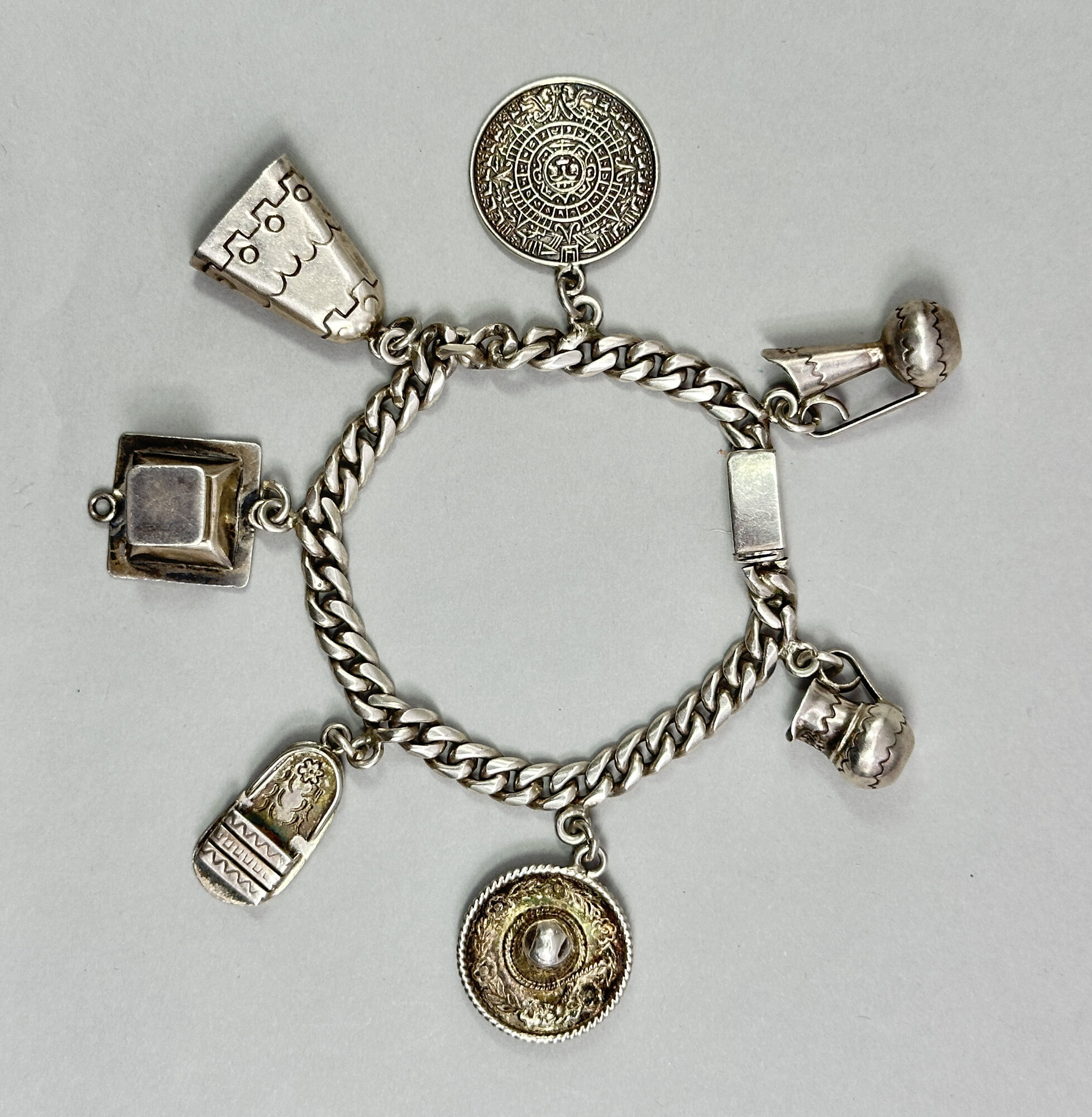
Taxco charm bracelet, makers mark Castelan, 1950s
Price: £85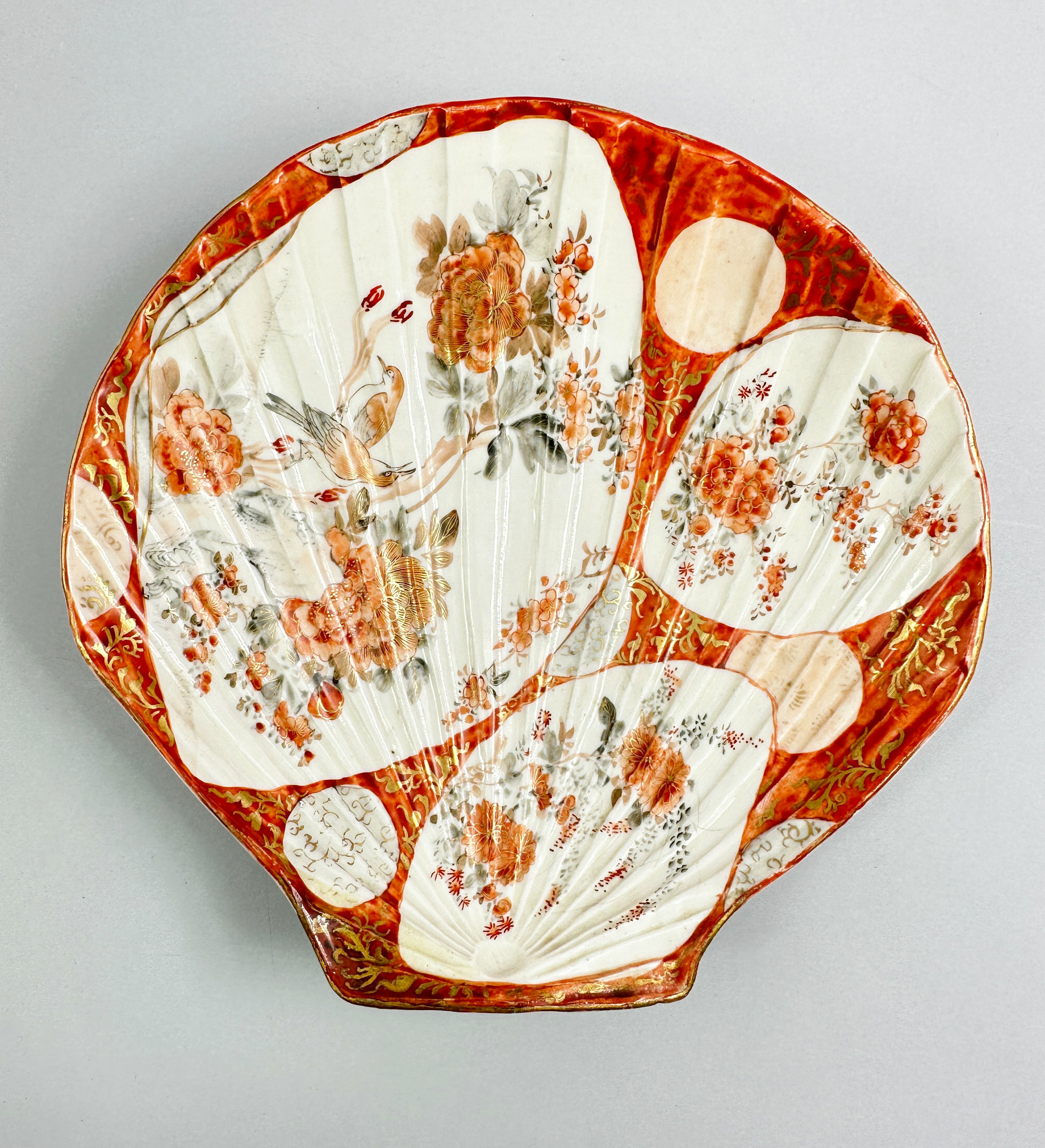
Japanese Kutani Shell Shape Dish, circa 1880
Price: £45Kutani (the word means 'nine valleys') porcelain was made at various factories in the former Kaga province of Japan. The earliest pieces were in a completely different style employing a palette of colours emphasising green, the so called 'Ko Kutani'. Production of this ceased around 1730, and manufacturing was not revived until the early nineteenth century when the more familiar colourings of iron red and gold were introduced. Many pieces were exported to the West in a variety of forms including vases and wall plates. This shell dish is more unusual; the shape is more normally found in Chinese ceramics. Perhaps one of an original pair, this dish, like its Chinese counterparts, was probably intended as a serving dish and could even be used as such today although it can well stand as a decorative item.
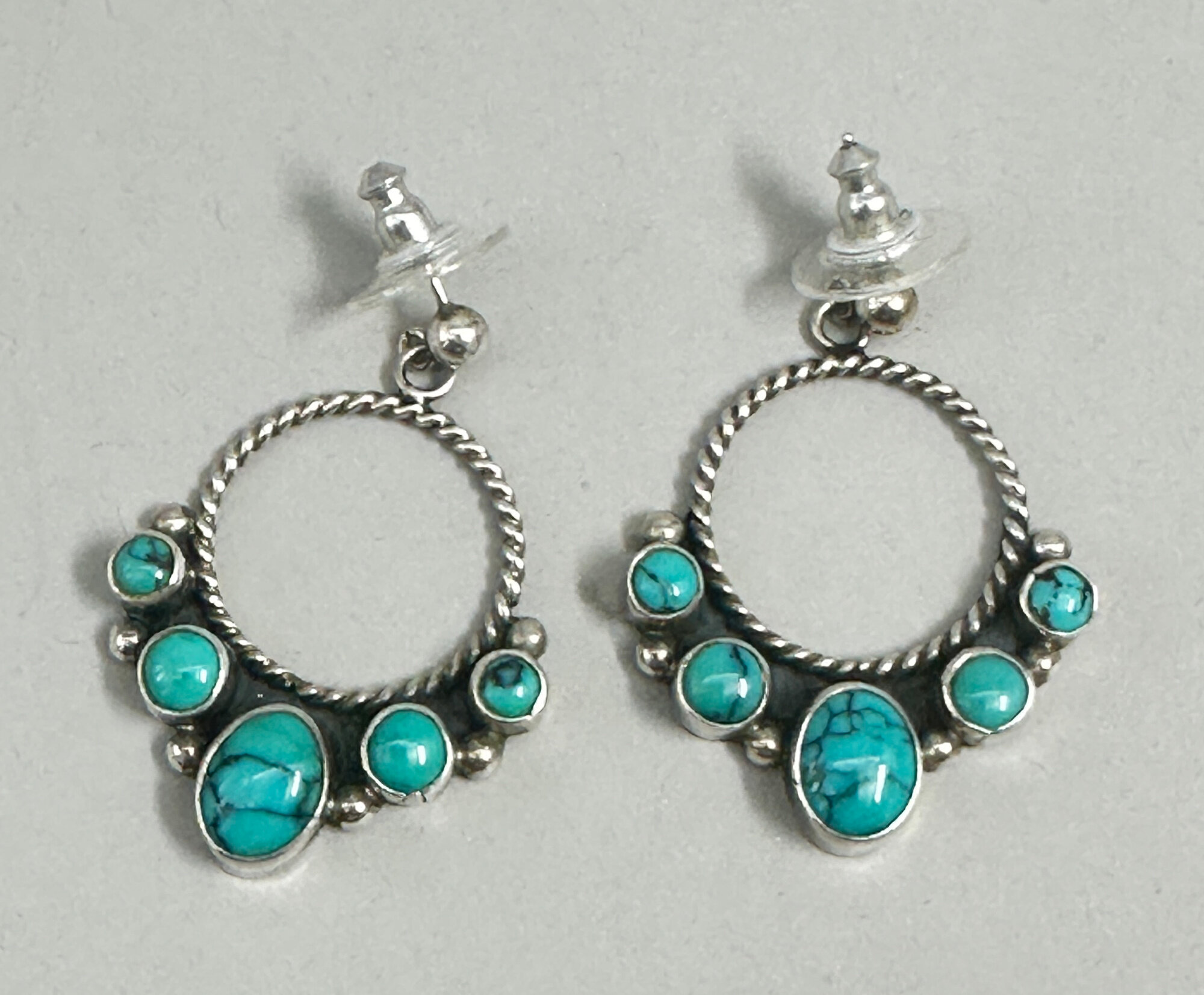
Pair of Navajo Kingman turquiose earrings, signed, 1970s
Estimate: £60 – 80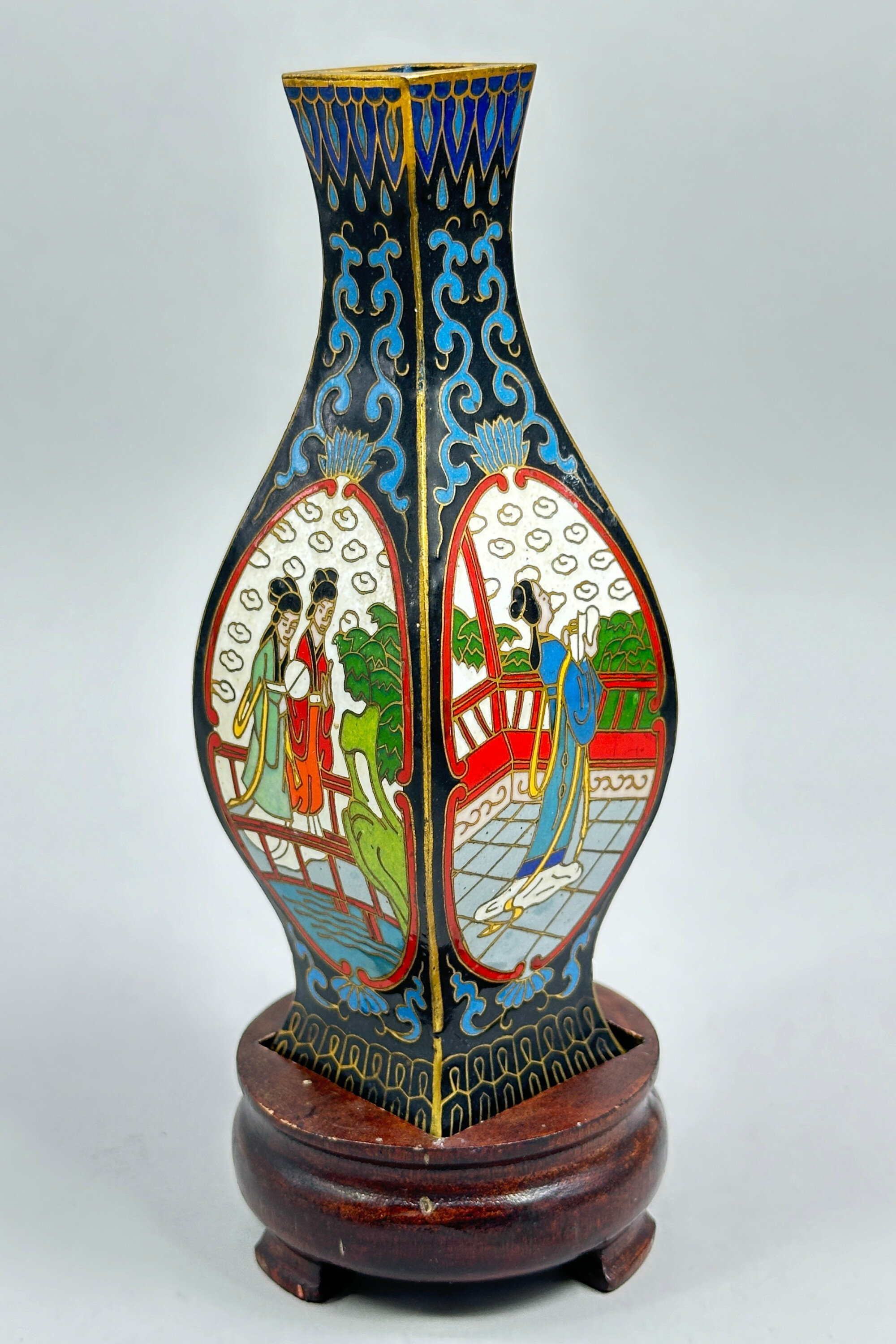
Chinese Cloisonné Square Vase on Stand, C20th
Price: £25The cloisonné technique, in which glass derived enamels were set in wire outlines (the so called ‘cloisons’ from the French word), was developed in China in the early Ming dynasty (1368-1644) and then used throughout, right up until the C20th, indeed pieces are still produced today. The style of enamelling here with fairly bold outlines to the decoration and the use of bright enamel colours suggests a dating here to the mid twentieth century which corresponds to the probable date of the accompanying wood stand. Perhaps intended as a desk ornament or possibly a flower vase, this piece could certainly find a home in a contemporary setting.
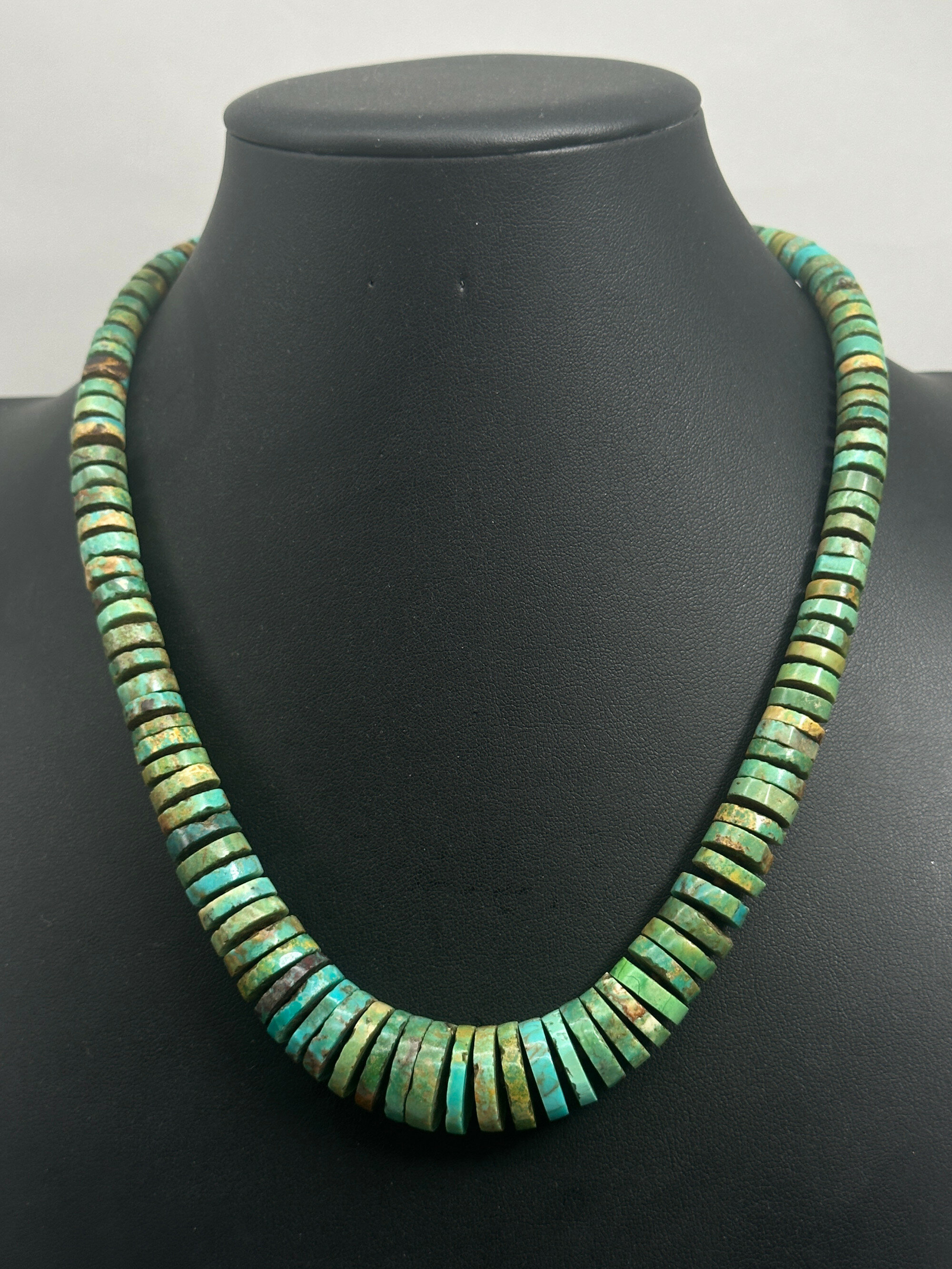
Native American turquoise bead necklace with original clasp c1960
Estimate: £400 – 500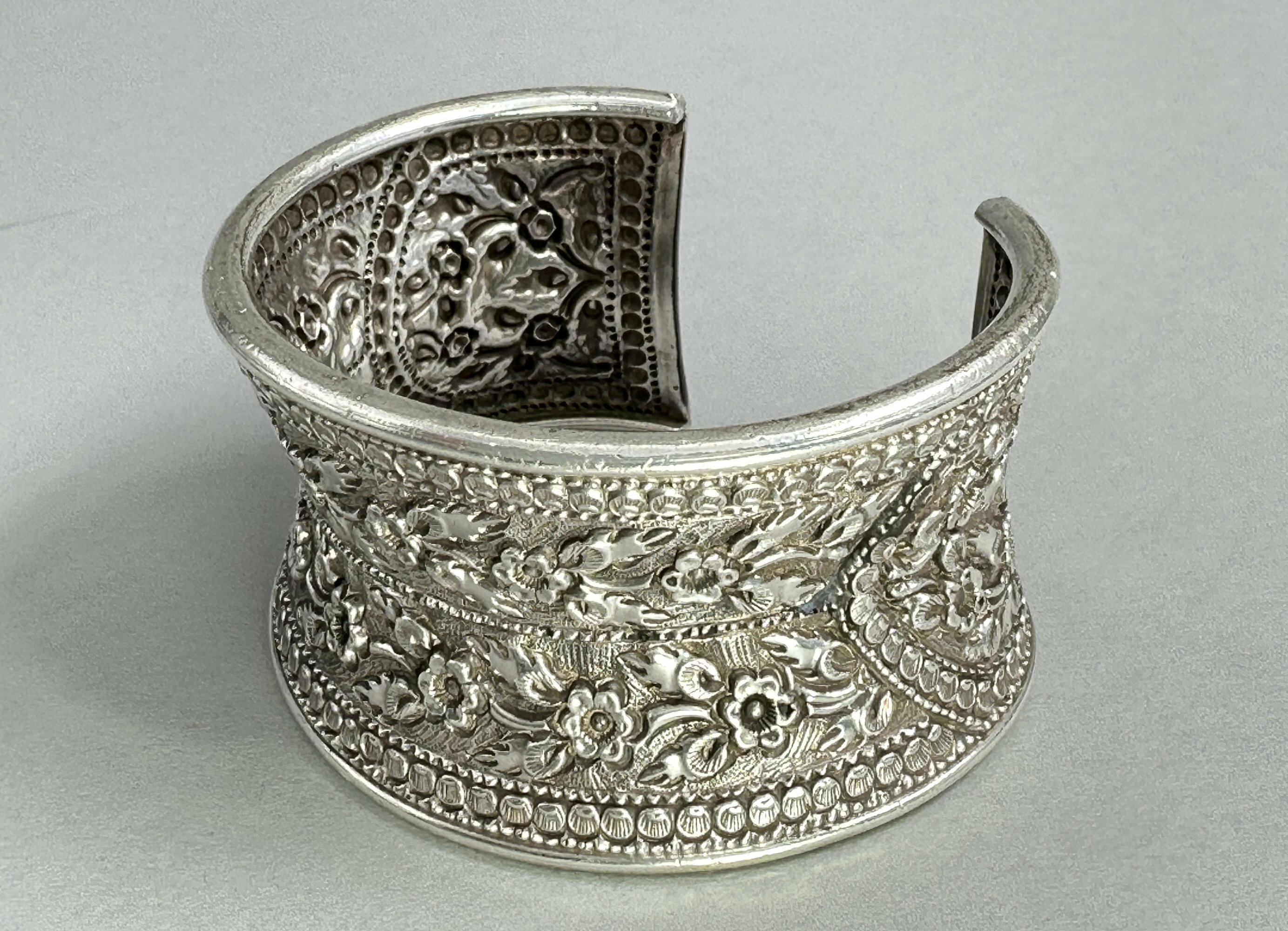
Indian silver repousse cuff bracelet, c1920
Price: £85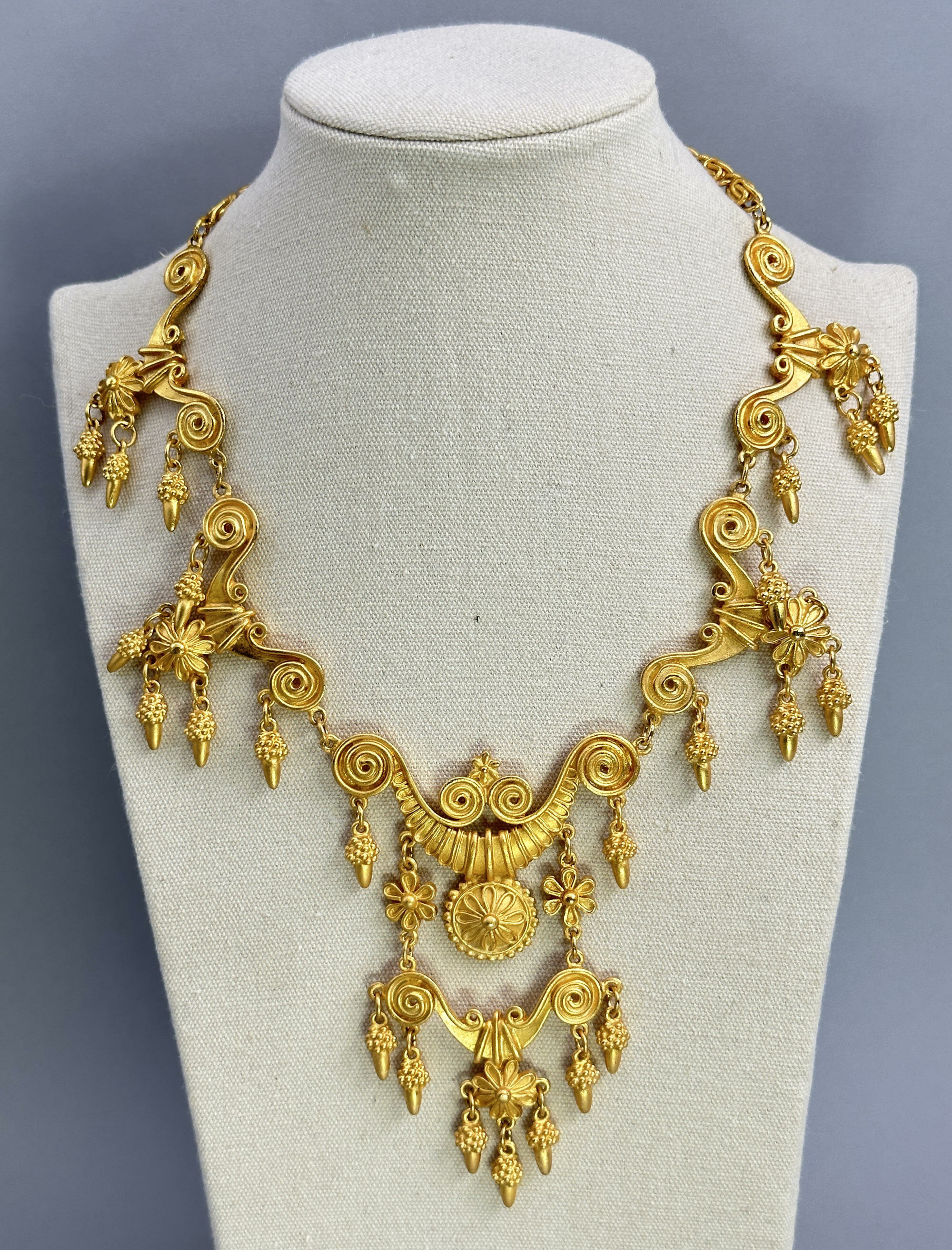
Estruscan style necklace in the manner of Lalaounis c1990
Price: £75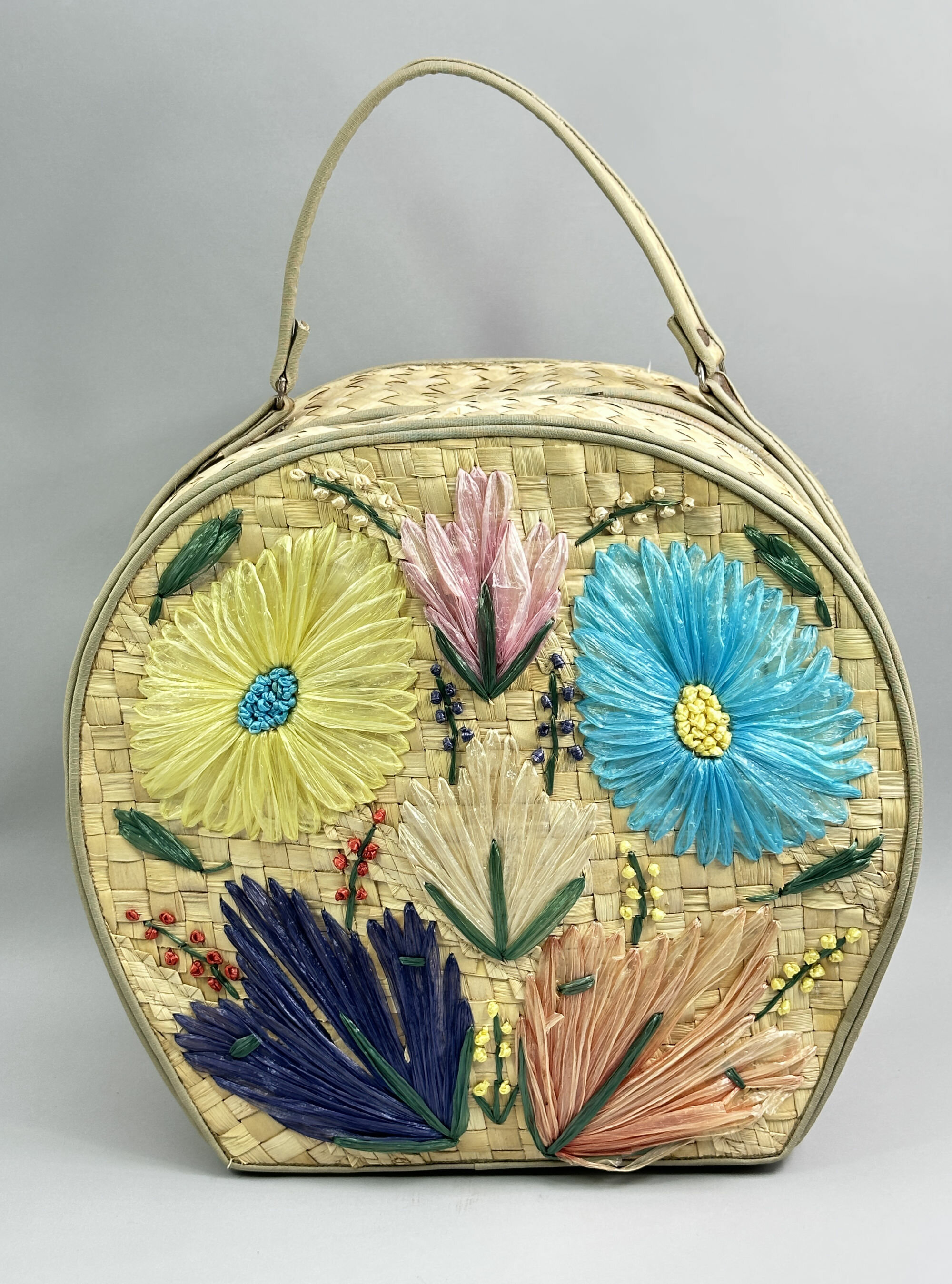
Vintage Woven Straw and Raffia Beach Bag, 1950s
Price: £65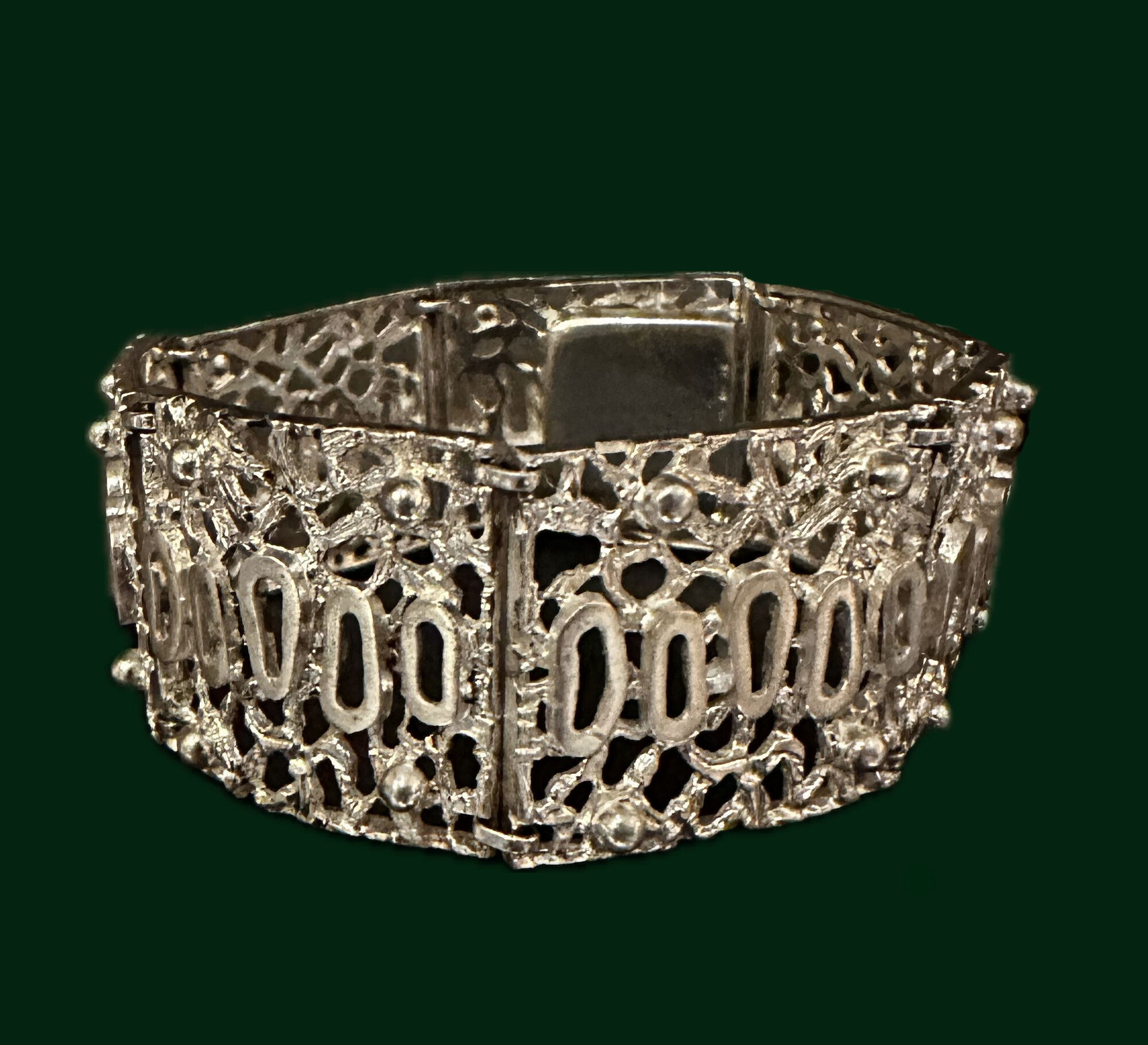
Striking continental silver modernist bracelet c1960
Price: £55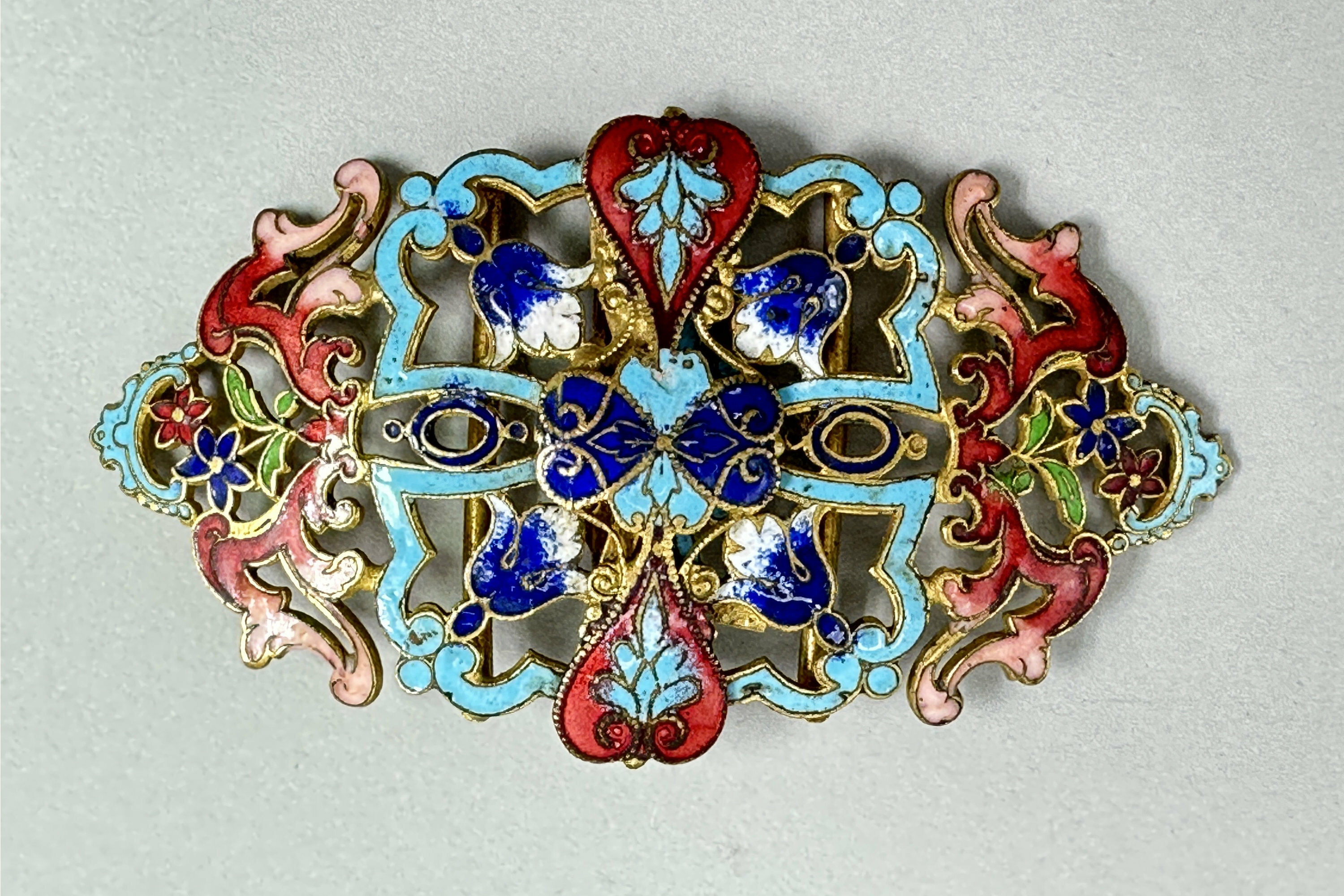
Victorian enamel buckle c1900
Price: £45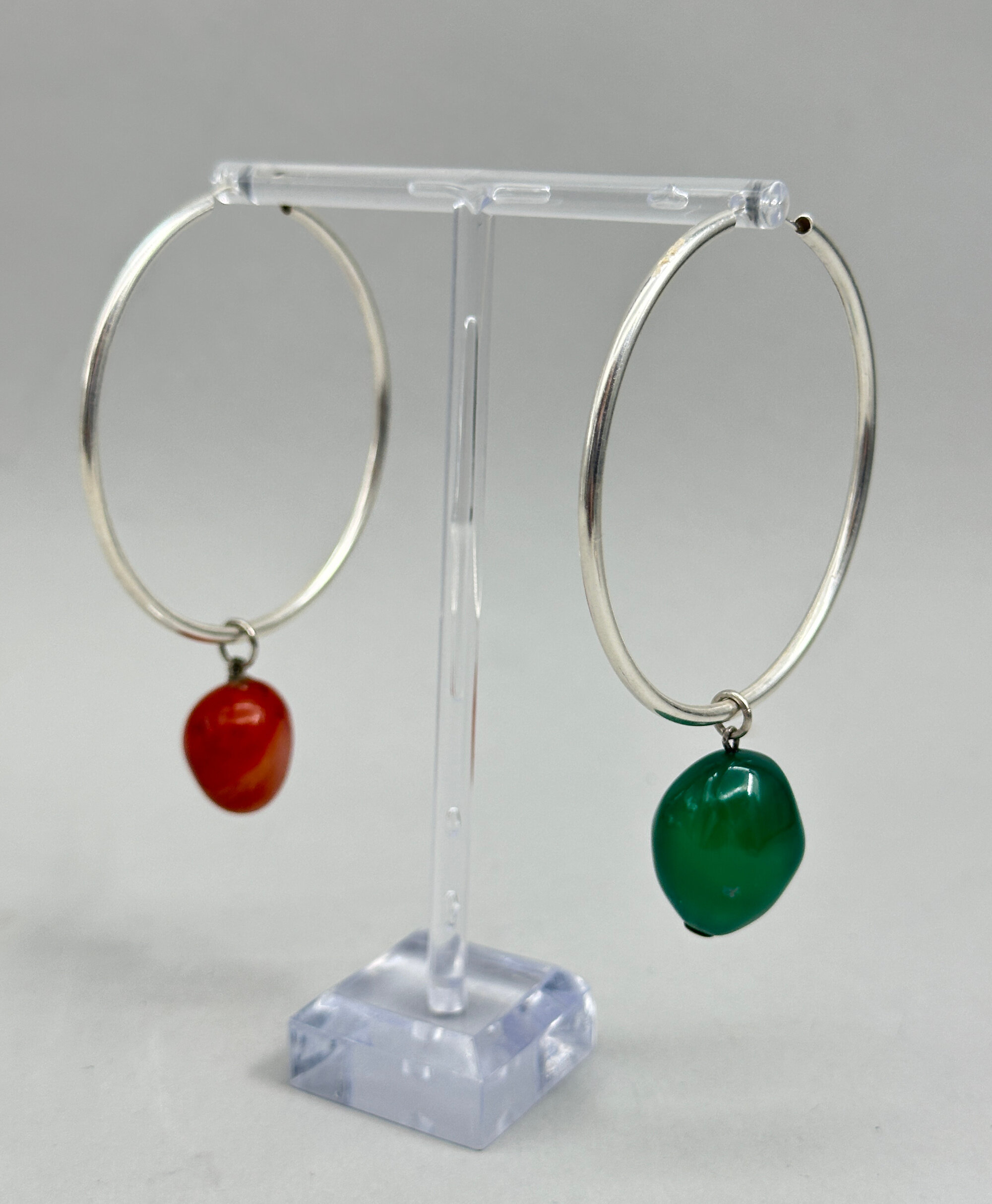
Pair of large hoop earrings with stone drops
Price: £45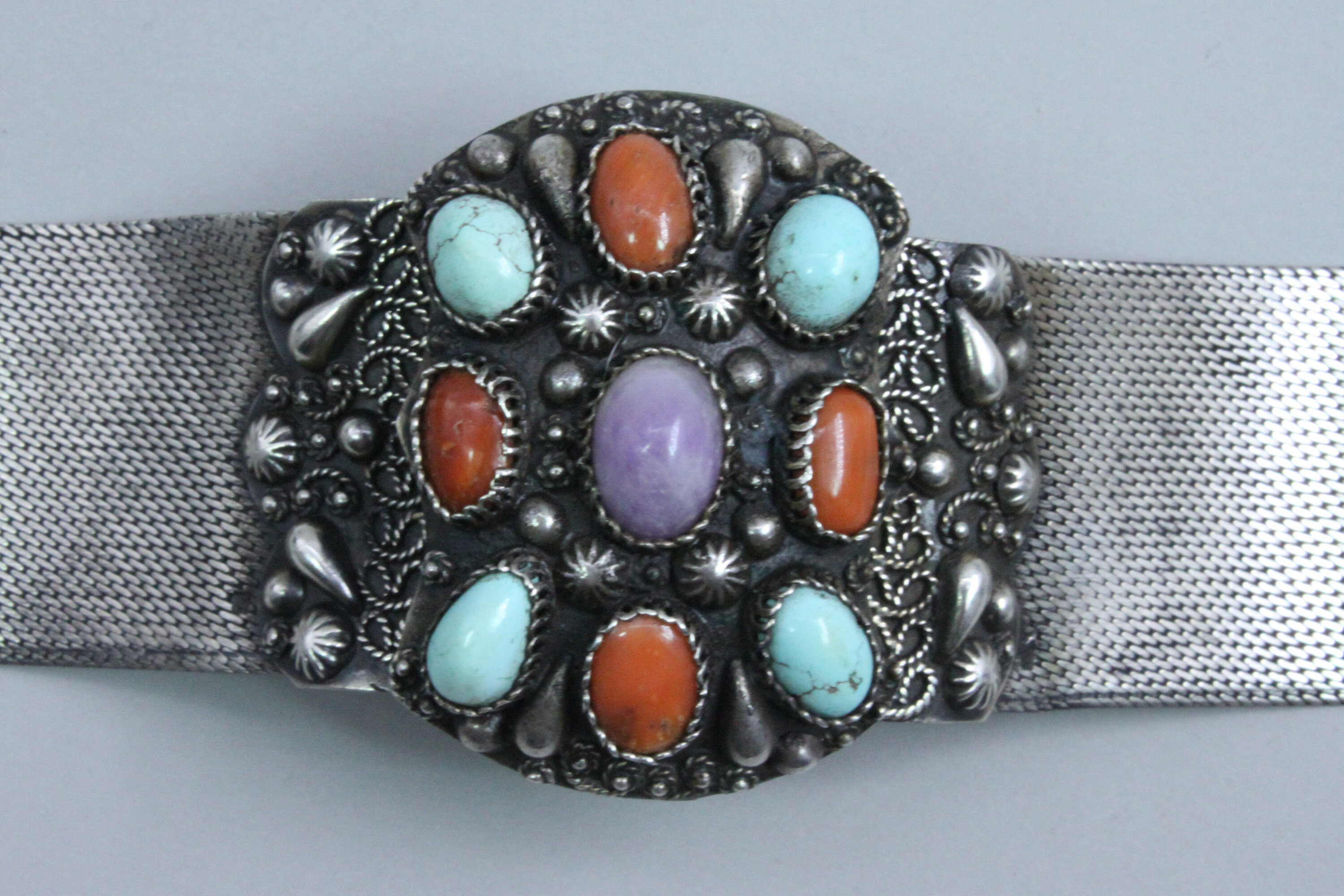
Art Deco Islamic silver bracelet with inset stones
Price: £195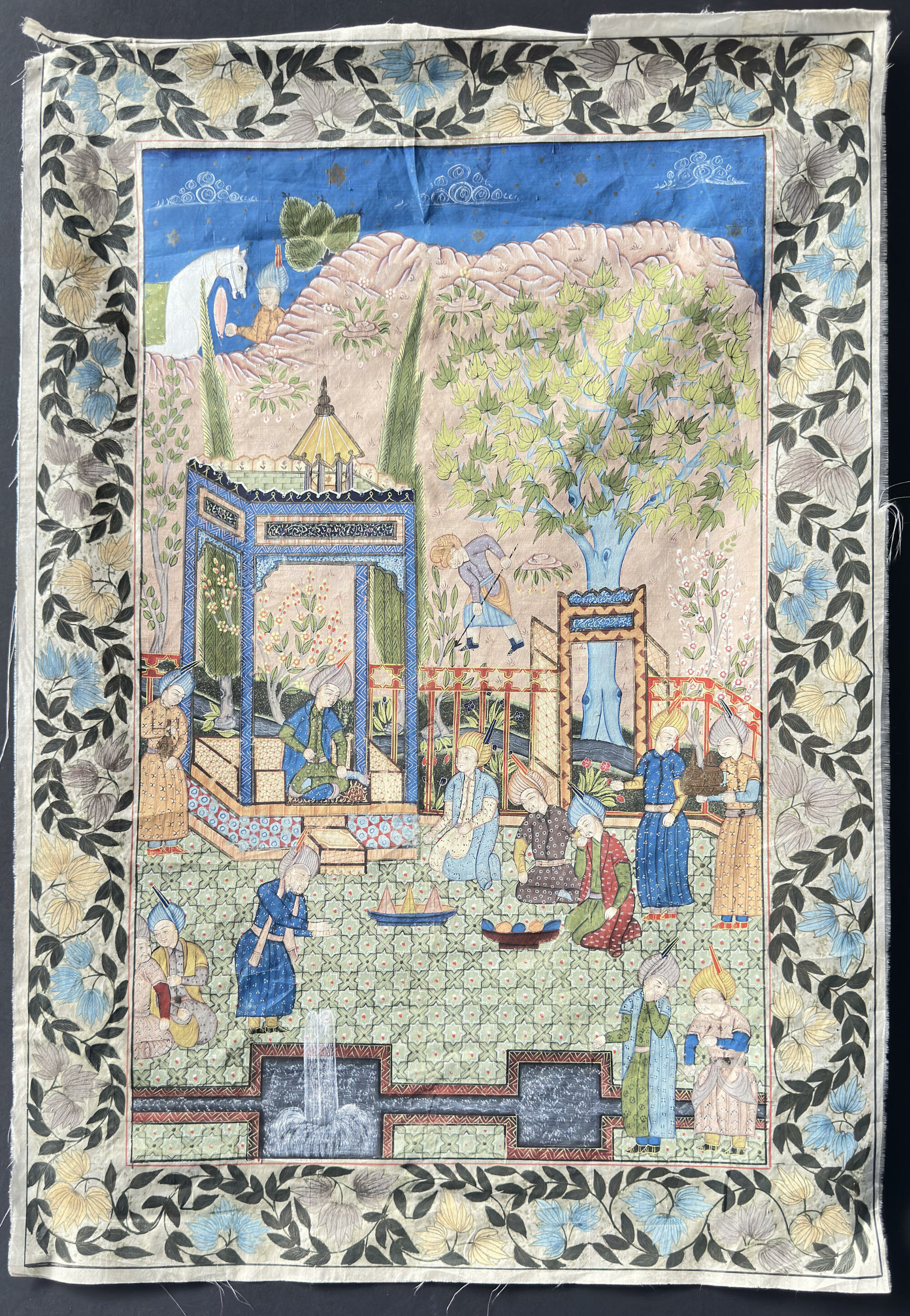
Persian Painting on Silk depicting Courtiers in a Palace Scene, C19th/C20th
Price: £75The ‘Khamsa’ (Quintet or Quinary) is the best known work of Nizami Ghanjavi (c1141 – 1209) considered the greatest romantic epic poet in Persian literature. It comprises five long narrative poems the first of which is ‘Makhzan-ol-Asrar’ (The Treasury or Storehouse of Mysteries) and contains an episode where two physicians agree to fight each other with poison: each would give the other a poison and the doctors would then attempt, by their skill, to provide an antidote. One doctor succeeds but the other has less luck and in the version of the scene mentioned above is depicted lying ill on the ground.
The Khamsa was a popular subject for lavish manuscripts illustrated with painted miniatures at the Persian and Mughal courts in later centuries. The British Museum picture mentioned above, for example, comes from a manuscript created for the Mughal Emperor Akbar in the 1590s. Scenes from these works were then copied or adapted in turn by Persian artists in the late nineteenth and early twentieth centuries which is what we have here. The quality of the execution remains high producing a highly decorative example of the best Persian work.
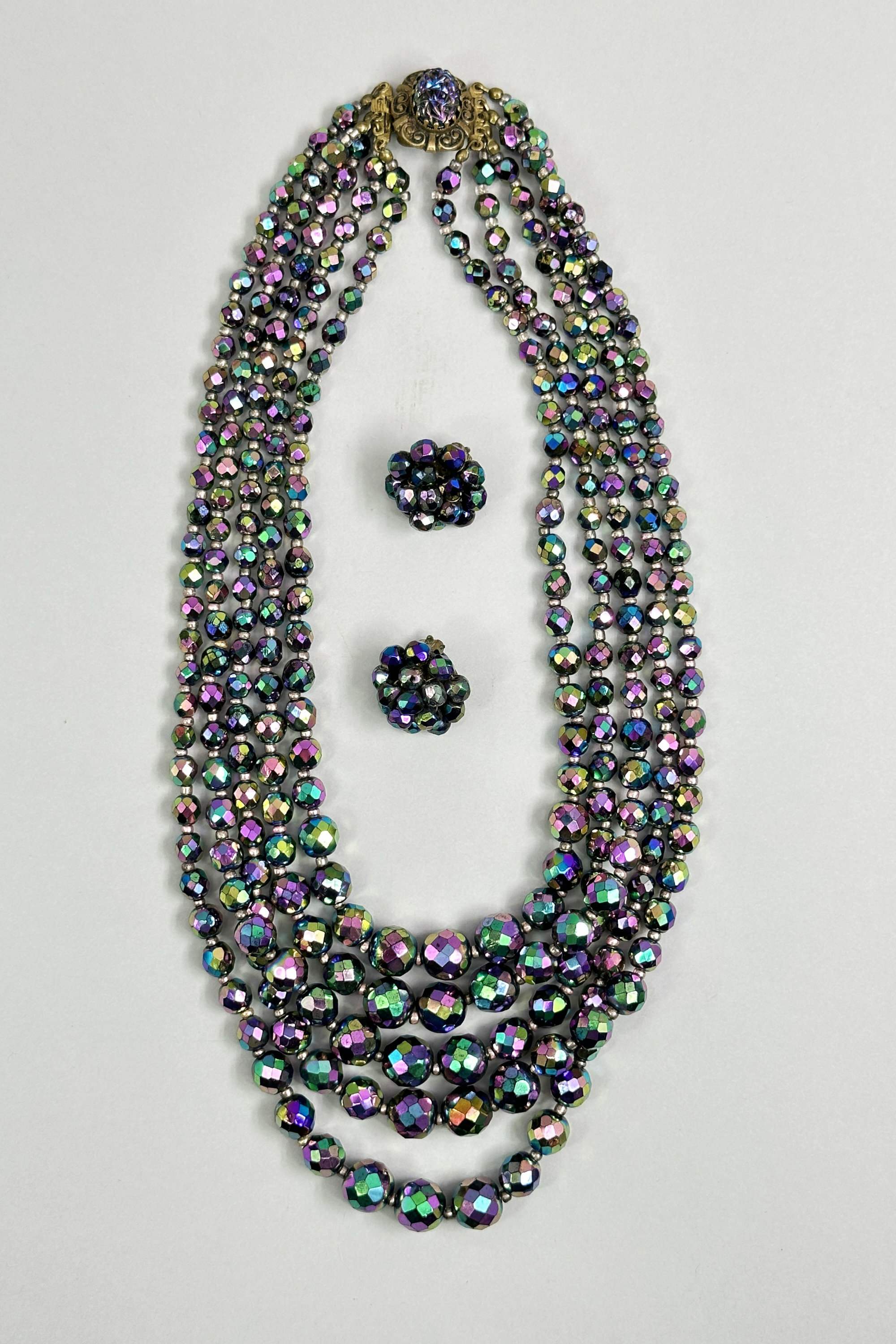
Show stopping suite of necklace and earrings c1960
Price: £85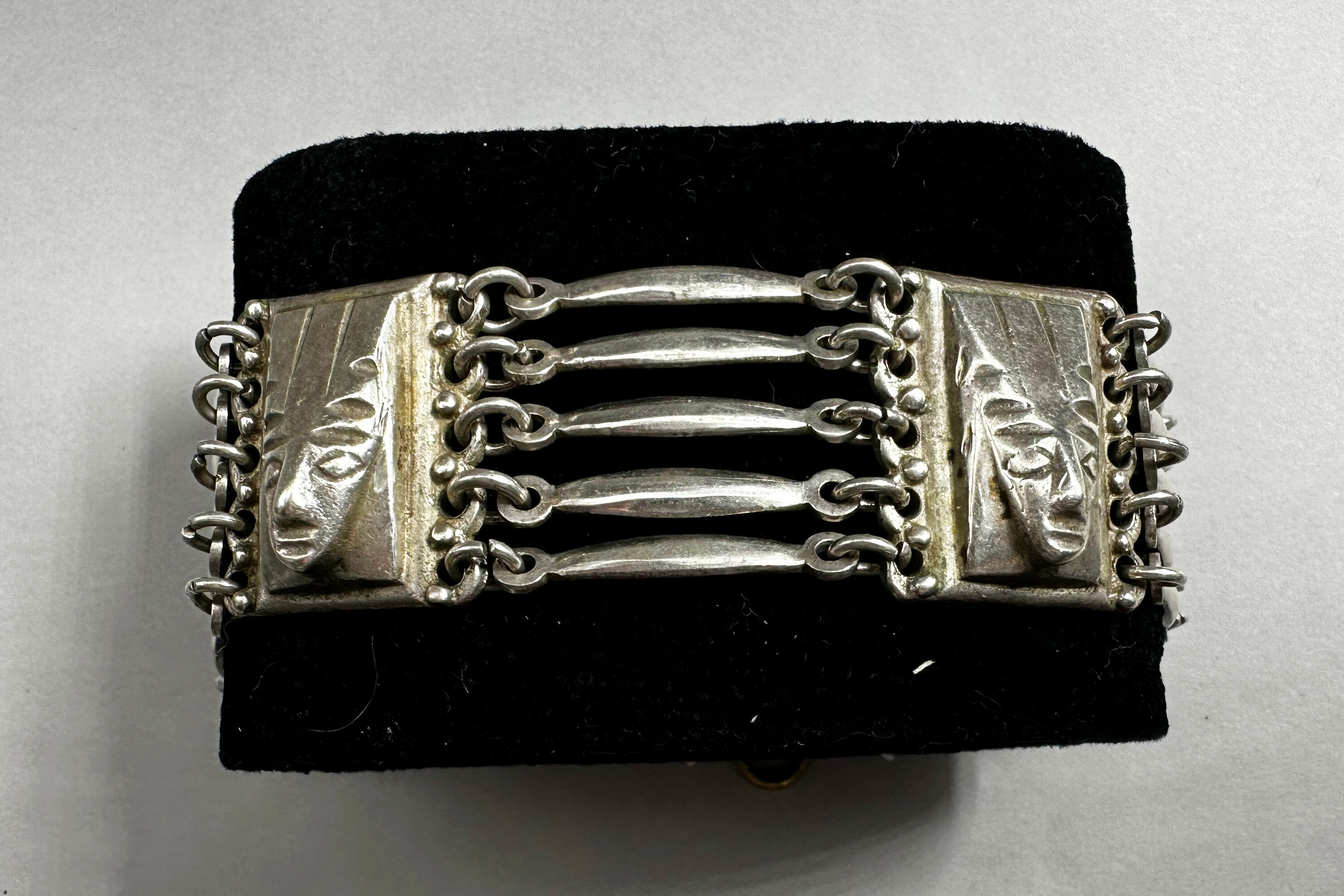
Taxco bracelet with Aztec mask motif, 1940s
Price: £65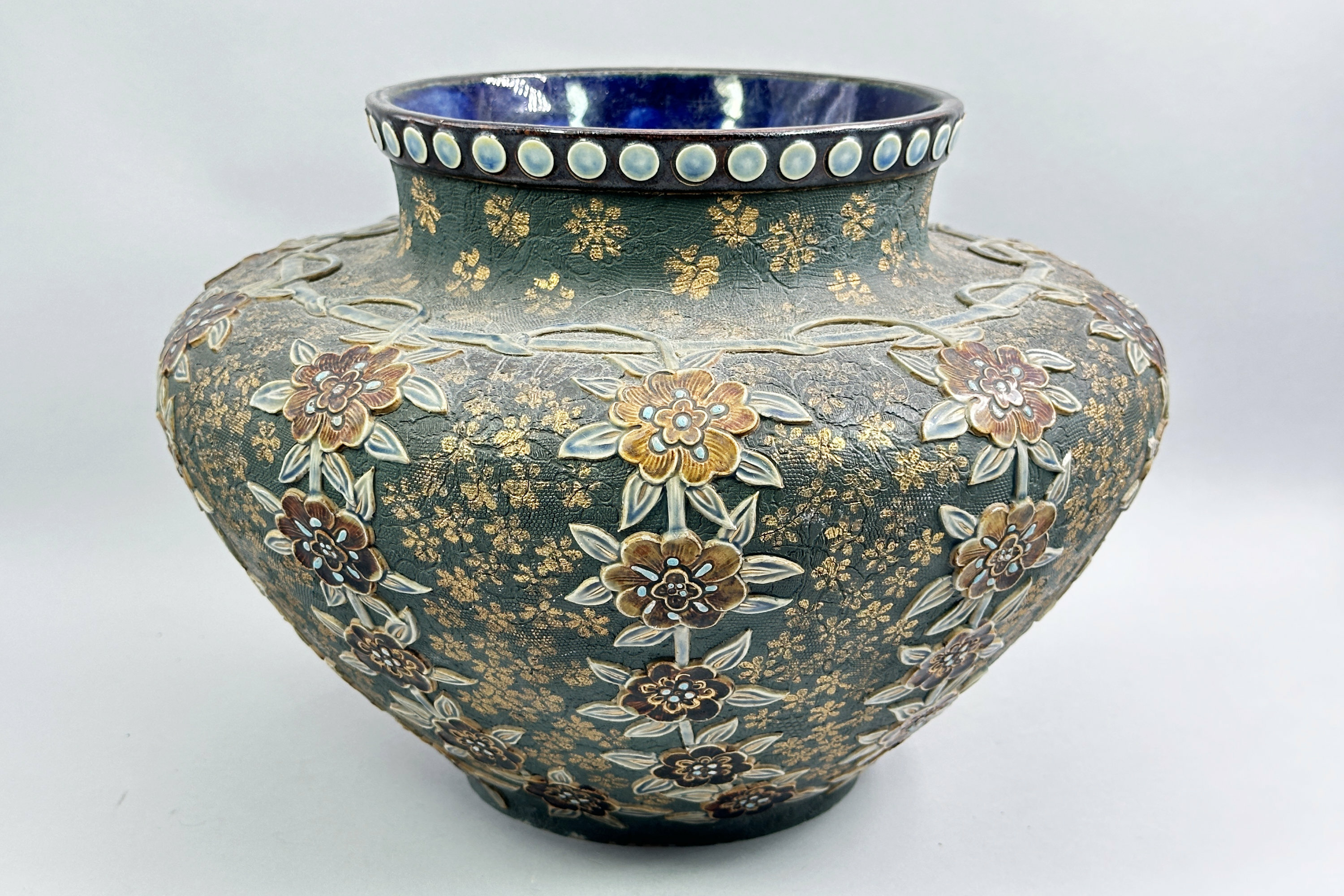
Doulton and Slaters Patent Jardiniere circa 1890
Price: £750The Doulton factory began production in 1815, first at Vauxhall and later moving to Lambeth. In 1882 it opened an additional factory at Burslem, Stoke on Trent in the centre of the English pottery. Known at first mainly for utilitarian works it began to develop decorative wares more extensively in the 1860s and soon gained a reputation for its distinctive designs. As the mark indicates, this piece was made at the Lambeth factory and the absence of ‘England’ in the Doulton mark, which has the typical design of interlocking ‘D’ at its centre, indicates that it dates to before 1891. The decorative technique, employing impressed designs was known as ‘Chine’ ware and protected by the patent ‘Doulton and Slaters Patent’ which is clearly marked underneath. Pieces of linen, lace, net or other fabrics were pressed onto the unfired soft clay shortly after potting, leaving a corresponding pattern behind. This piece has elaborately modelled lotus strands in addition as well as gilt flower heads, an unusual combination which does not seem to often occur. On the base are found stamped numbers and letters which should indicate the pattern number and artist decorator but it has not been possible to identify these accurately. Dating though is confirmed and this was clearly a deluxe item amongst the range of pieces produced at that time.
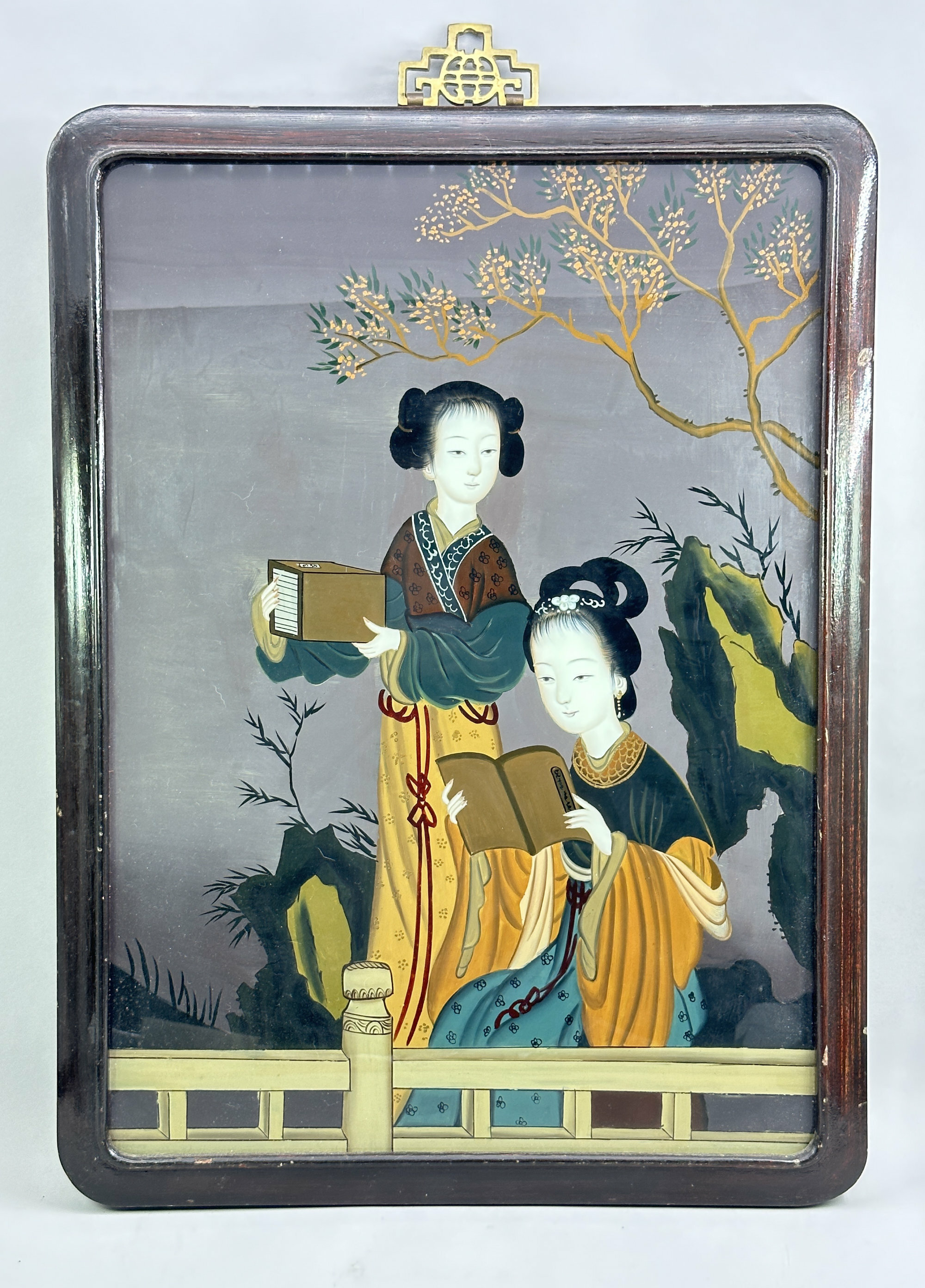
Chinese Reverse Glass Painting of Two Ladies on a Garden Terrace, first half C20th
Price: £240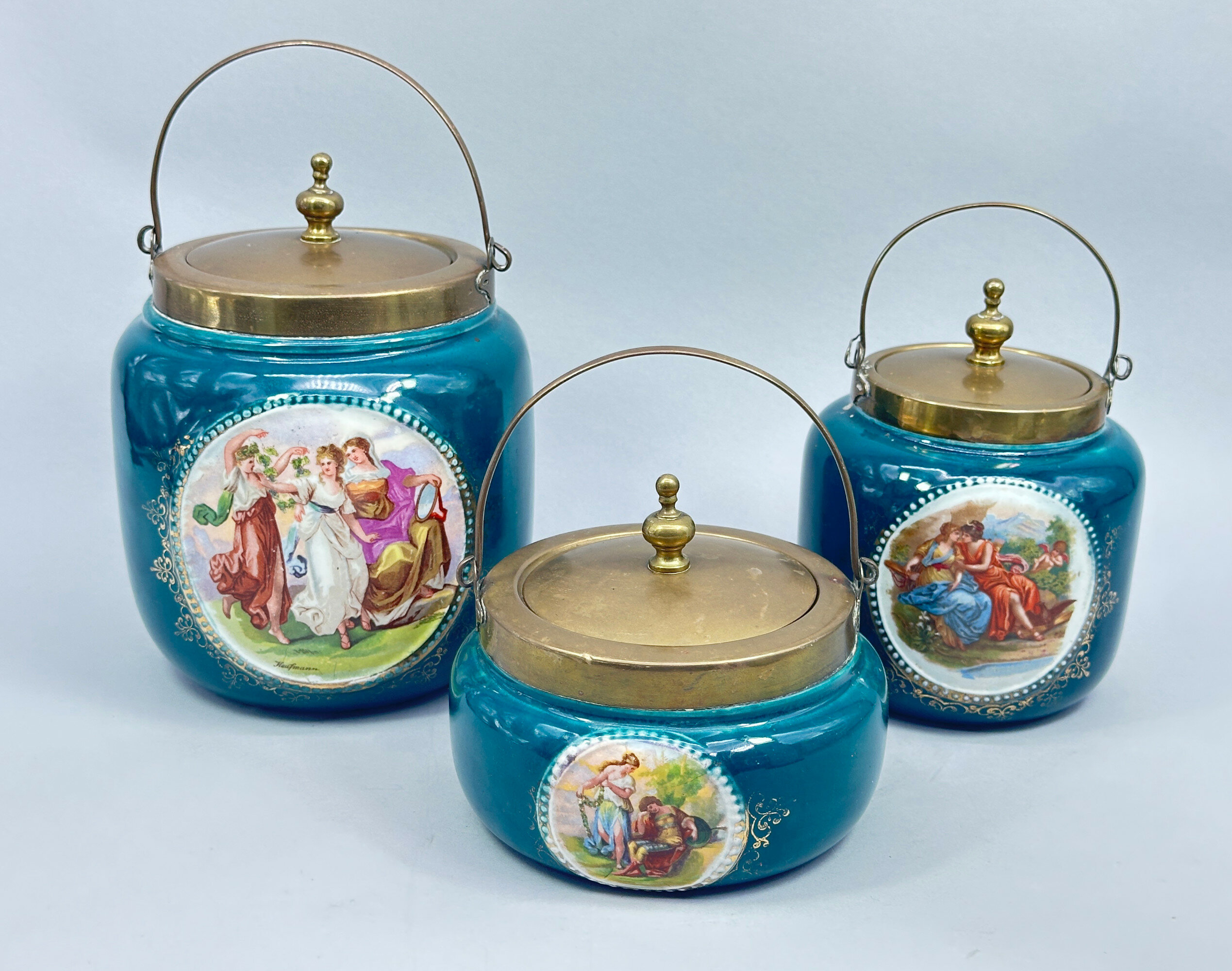
Set of Three Empire Porcelain Company Biscuit Jars circa 1900
Price: £120The Empire Porcelain Company was established in 1896 at the Empire Works in Stoke Road, Hanley, Stoke on Trent. A wide range of pottery and porcelain was subsequently produced until the factory’s closure in 1967. The various marks include the initials EPC, EP or the word Empire. The form of the mark seen here occurs on the earliest pieces made between 1896 and 1912. Blue ground pieces with mythological scenes were produced in a variety of forms during this period, some decorative, such as ornamental vases, and some more practical, as here : modest but graceful accessories for the Edwardian drawing room.
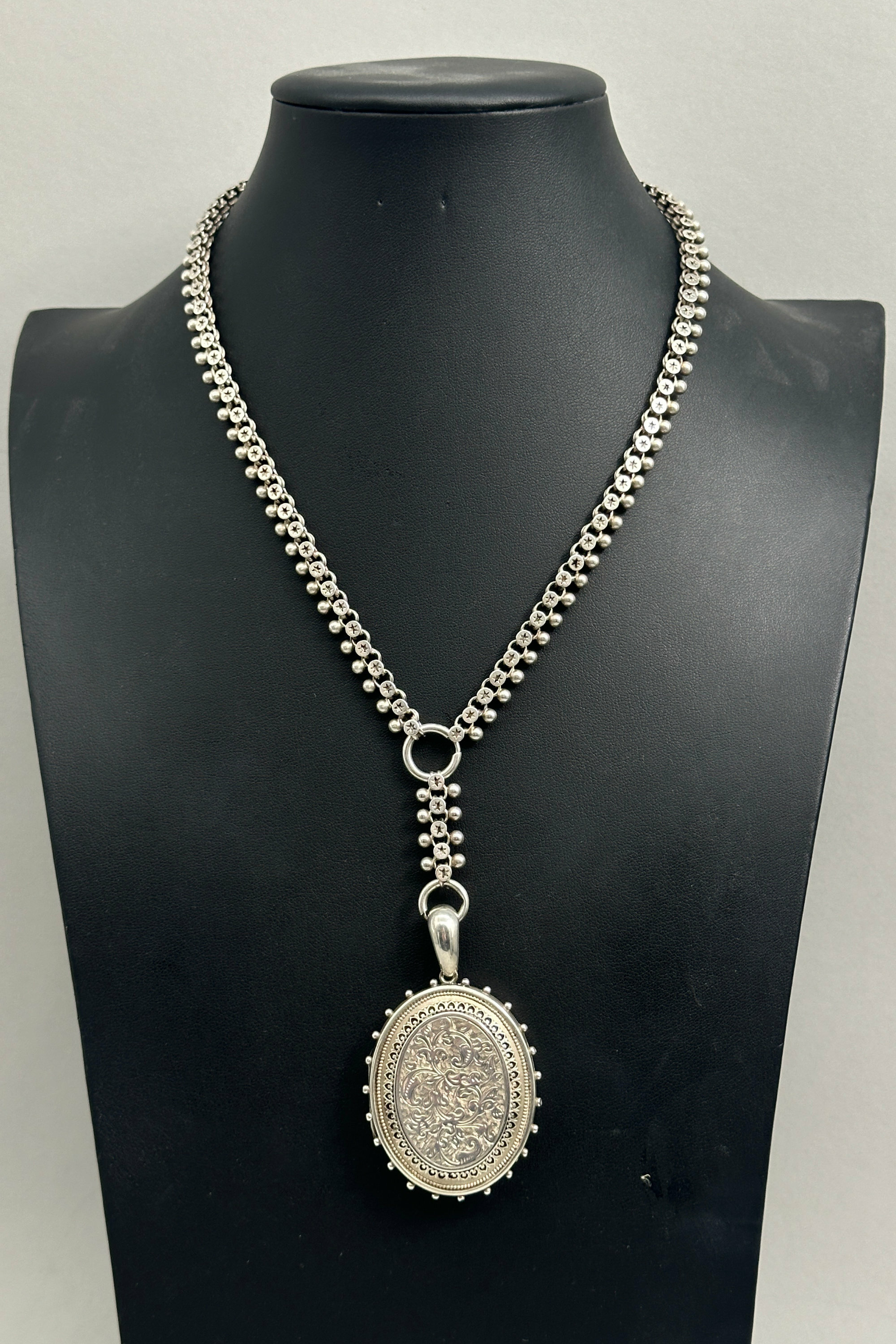
Victorian book chain with locket c1900
Price: £350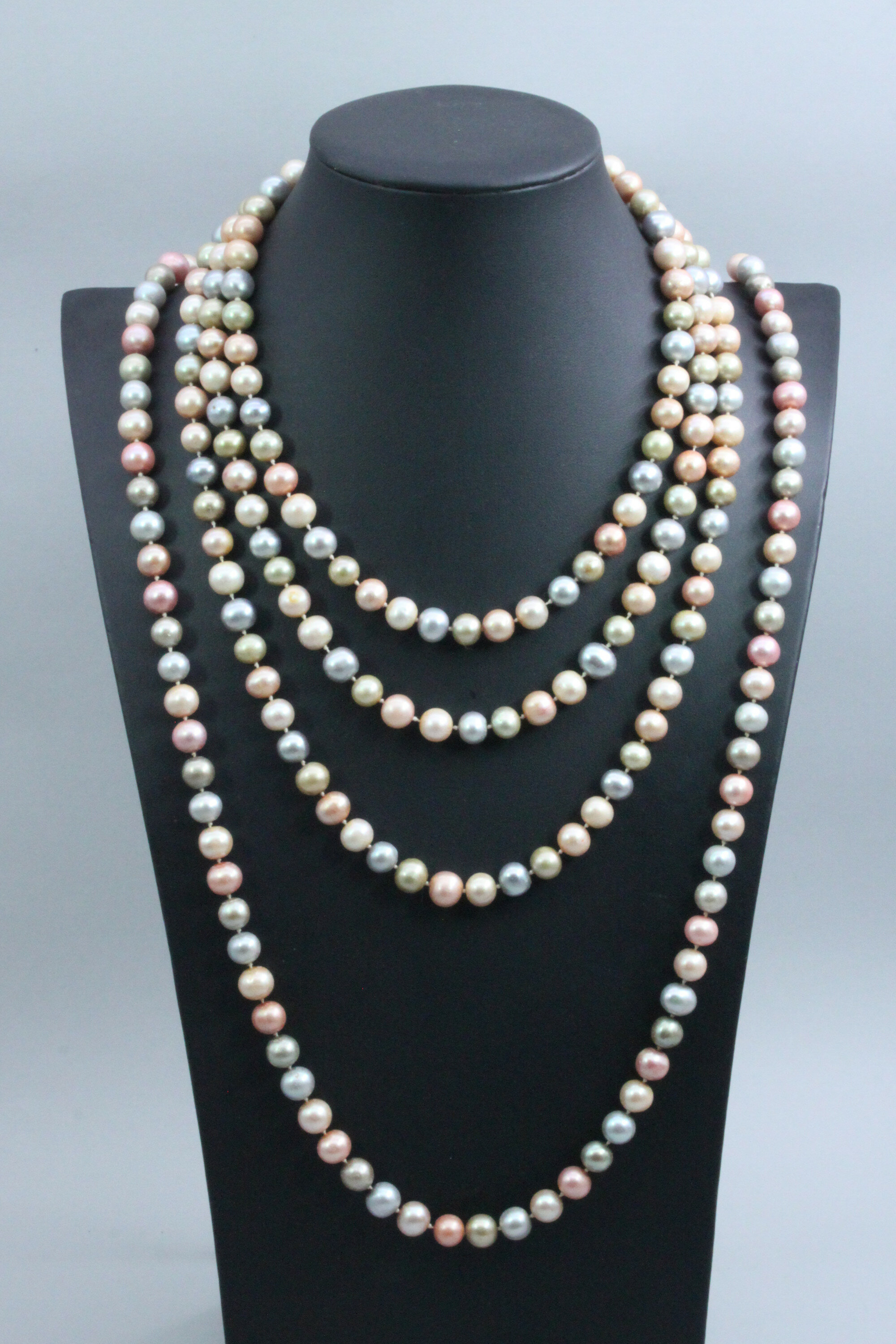
Two long infinity strands of cultured pearls
Price: £45
Vintage Carved wood figure of a seated Man, Bali, Indonesia, second half C20th
Price: £75
Vintage Carved wood figure of a seated Man, Bali, Indonesia, second half C20th
Price: £75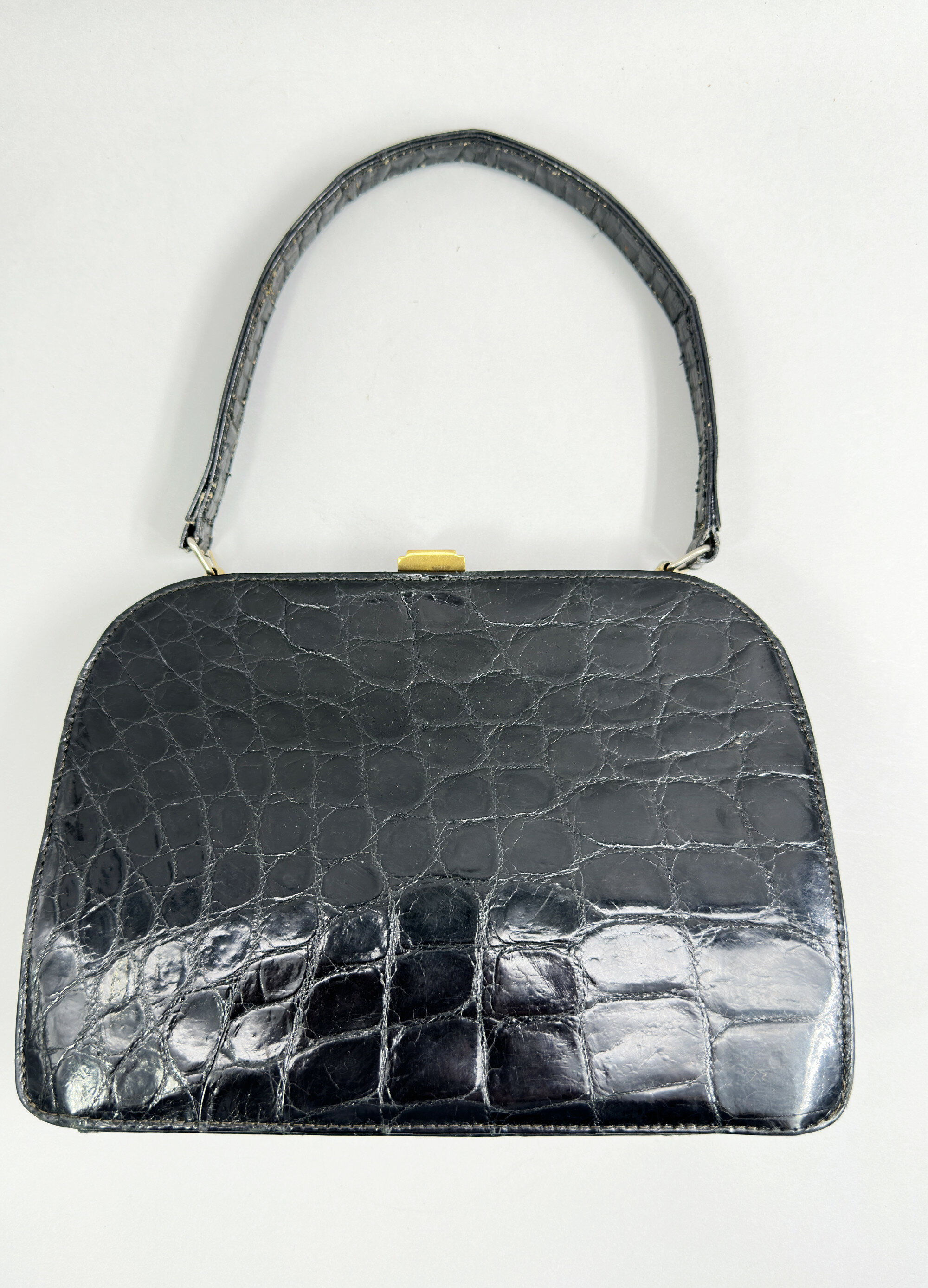
Classic black crocodile handbag 1940s
Price: £75
Vintage Brass Pocket Case with a lid, probably a Vesta case for Matches, circa 1900
Price: £55
Vintage Brass Vesta Case in the form of a Violin, circa 1900
Price: £55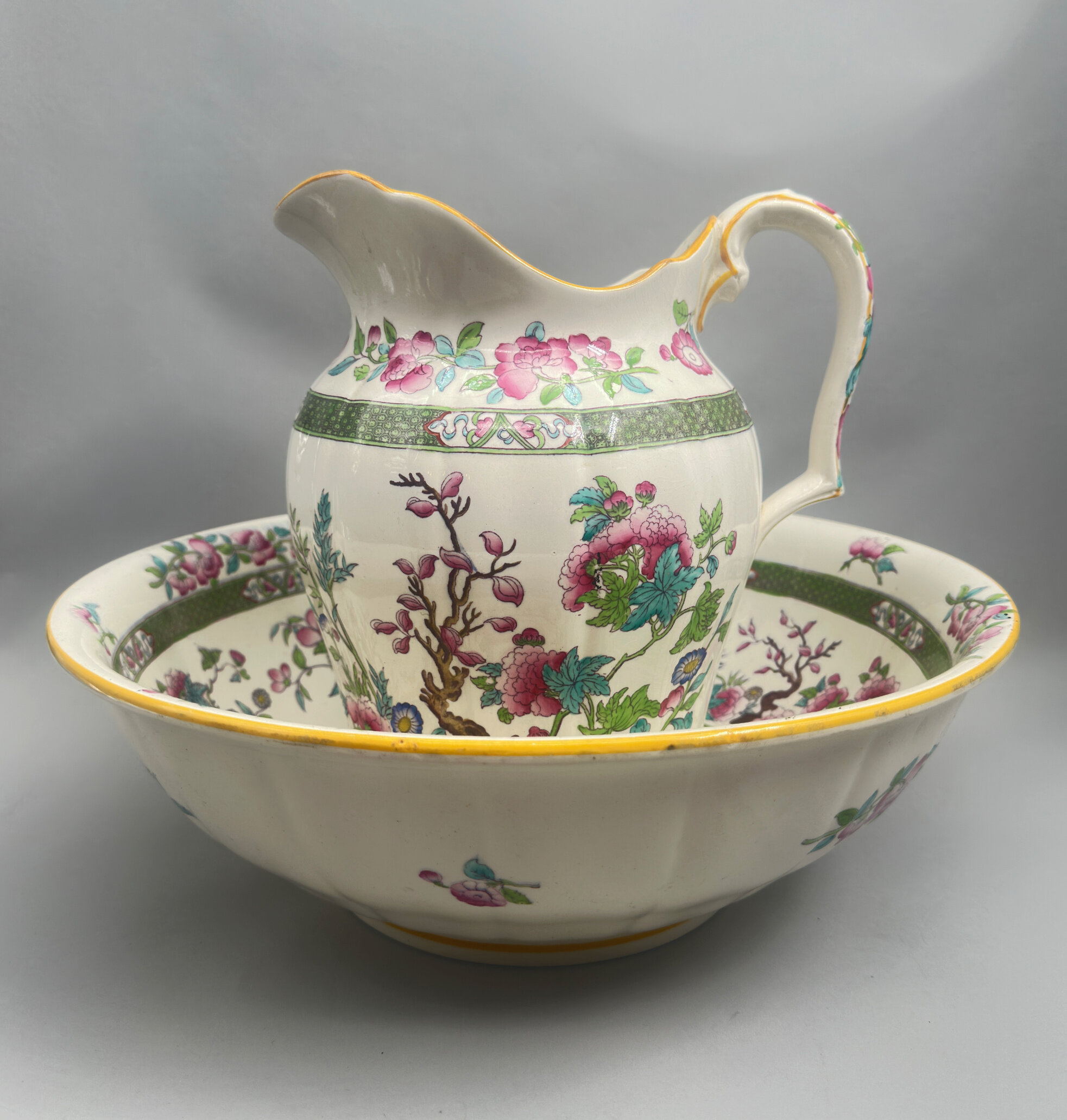
Minton Indian Tree Pattern Pitcher and Basin circa 1900
Price: £350………………………………………………………………………………………………….................................................................................
The celebrated firm of Mintons was founded by in 1793 by Thomas Minton (1765–1836) at Stoke-upon-Trent, Staffordshire, England as ‘Thomas Minton and Sons’, producing earthenware. The initial ranges were standard tablewares in blue transfer-printed or painted earthenware, including the ever-popular Willow pattern. By the mid nineteenth century and in partnership with Michael Hollins, Mintons began the production of decorative finishes for the interior and in particular floor tiles which enjoyed enormous demand and were the subject of numerous prestigious commissions including a contract for the flooring of the American Capitol. This was followed by the introduction of the plain white glazed ‘Parian’ wares and then the Italian inspired ‘majolica’ pieces with their richly coloured lead glazes. Mintons continued to follow popular trends, working with Christopher Dresser, recruiting Louis Solon from Sevres who had developed pâte-sur-pâte wares and finally contributing to Art Nouveau ceramics with a speciality in secessionist wares.
But the manufacture of tableware continued alongside all these other developments and Mintons adopted and adapted the popular ‘Indian Tree’ pattern which was first produced by Coalport in 1801. This design fused elements from Indian textiles and Chinese ceramics into an amalgam with immediate appeal. The pattern includes the crooked branch of a tree and a partial landscape including exotic flowers and leaves with a palette of colours emphasising green, blue, pink, and orange, resembling quite closely the Chinese export wares decorated in ‘Famille Rose’ enamels which had been exported to Europe in great quantities in the eighteenth century. Many of Coalport’s rivals, including Spode, Wedgwood and Royal Worcester produced their own versions of the design, but Mintons’ interpretation was held to be one of the most successful.
It was used by Mintons to decorate a variety of shapes, mainly dinner and tea wares, but the toilet pitcher and matching basin are seldom found in this pattern. Both the forms are extremely elegant, the pitcher with light fluting, a scalloped rim and a complementary handle, while the basin, also lightly fluted, employs simple lines with a turnover rim which follow the shape of a Chinese original. All the standard elements of the pattern can be seen, in particular the twisted tree, and the diaper work borders again reflect Chinese originals.
Both pieces are marked with the pattern number ‘T 216’ and a Minton stamp, the form of which allows fairly accurate dating. The globe topped by a crown with the banner ‘Mintons’ was used from 1873-1912 but ‘England’ was only added after 1891, giving a circa date in the late nineteenth or early twentieth century, probably around 1900. The original toilet set, which would have included the pitcher and basin along with, probably, a chamber pot, a soap dish, candlesticks and other accessories, was clearly a ‘deluxe’ item at the time and its quality is still apparent today when it can be enjoyed simply for its decorative appeal and as a reminder of a past era of grandeur.
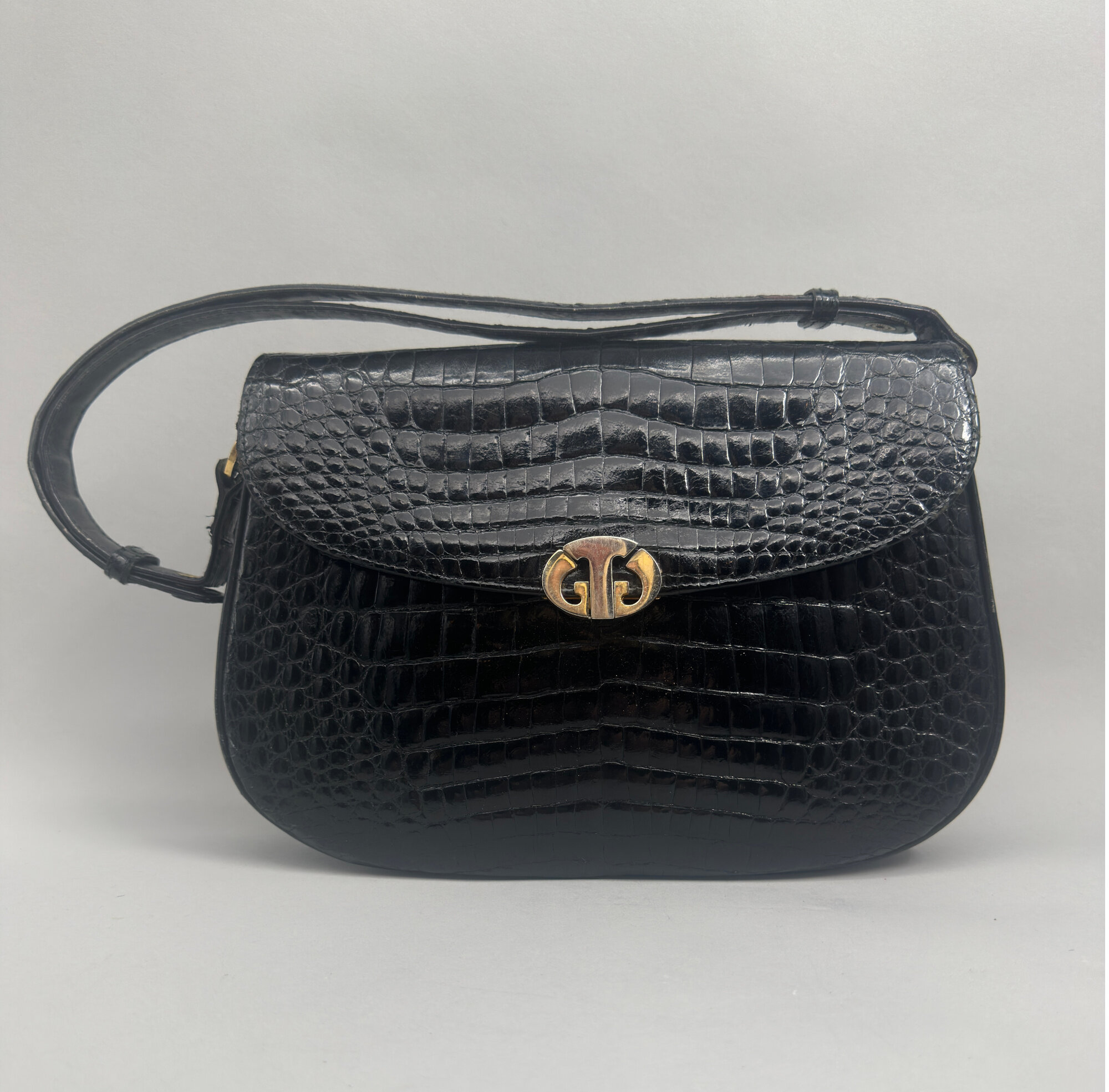
Vintage black crocodile Handbag, Italian, 1980s
Price: £150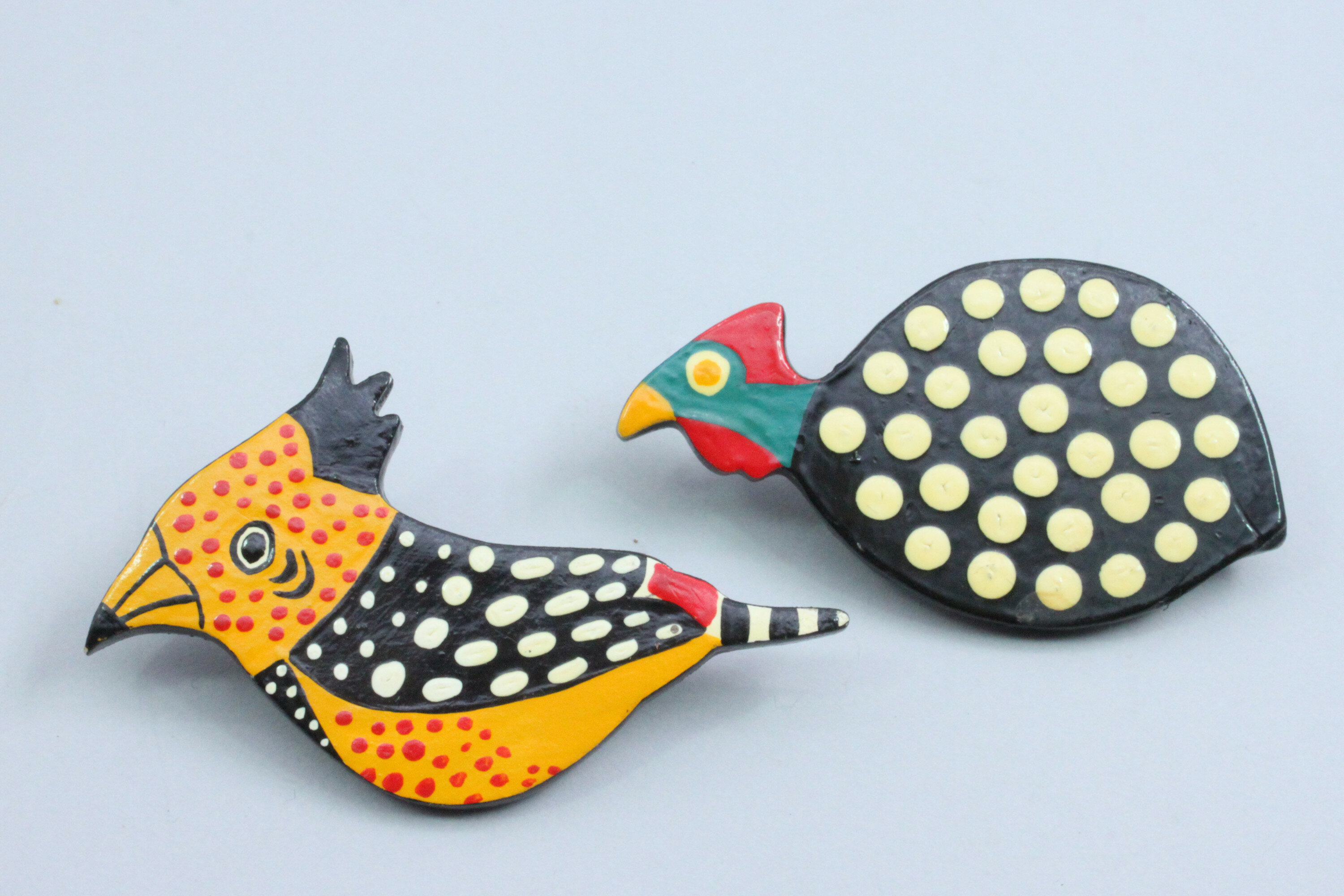
Two lacquer bird brooches 1980s
Price: £15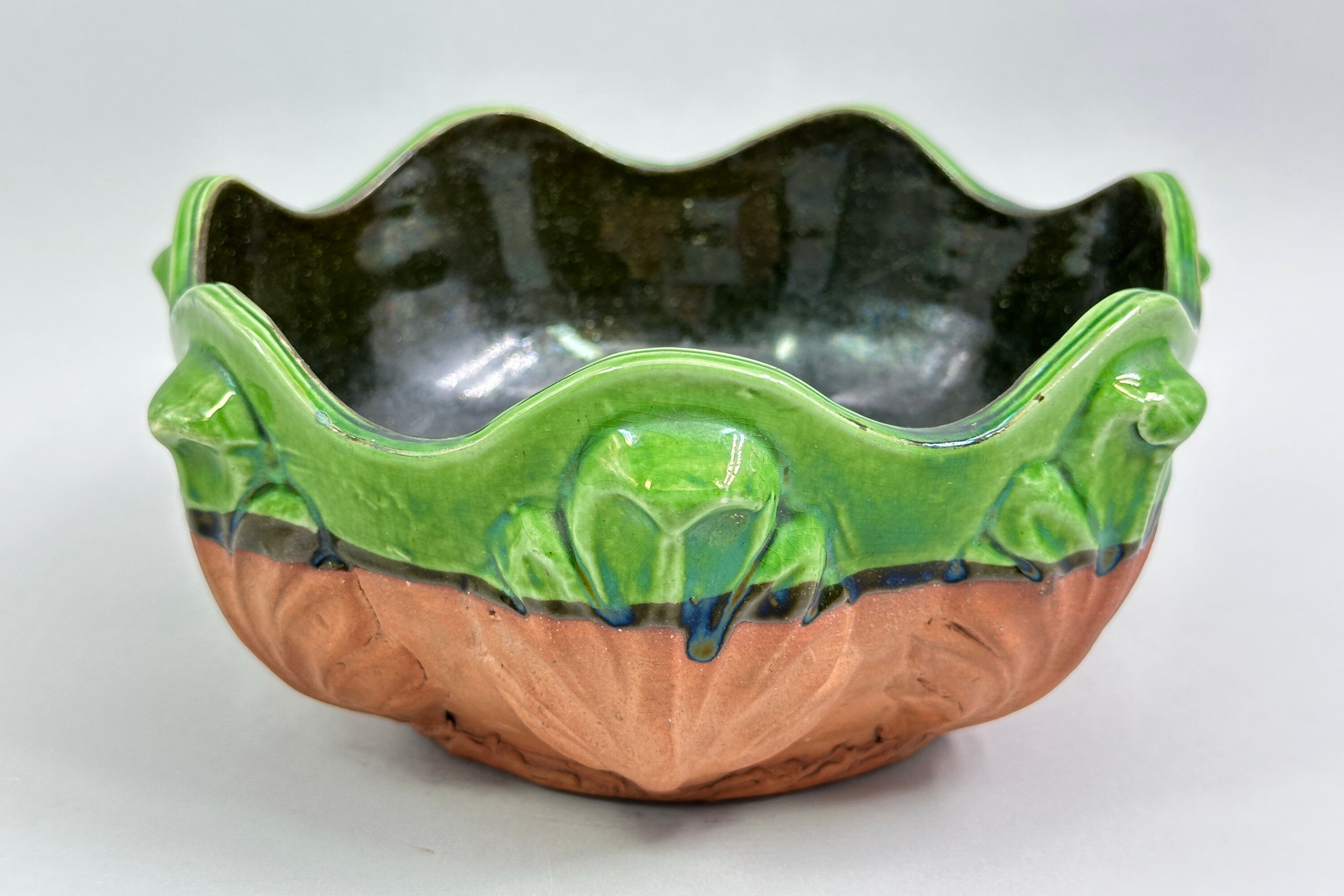
A Brannam Bowl, Barum ware, Terracotta and Glaze, marked C.H.Brannam, circa 1900
Price: £45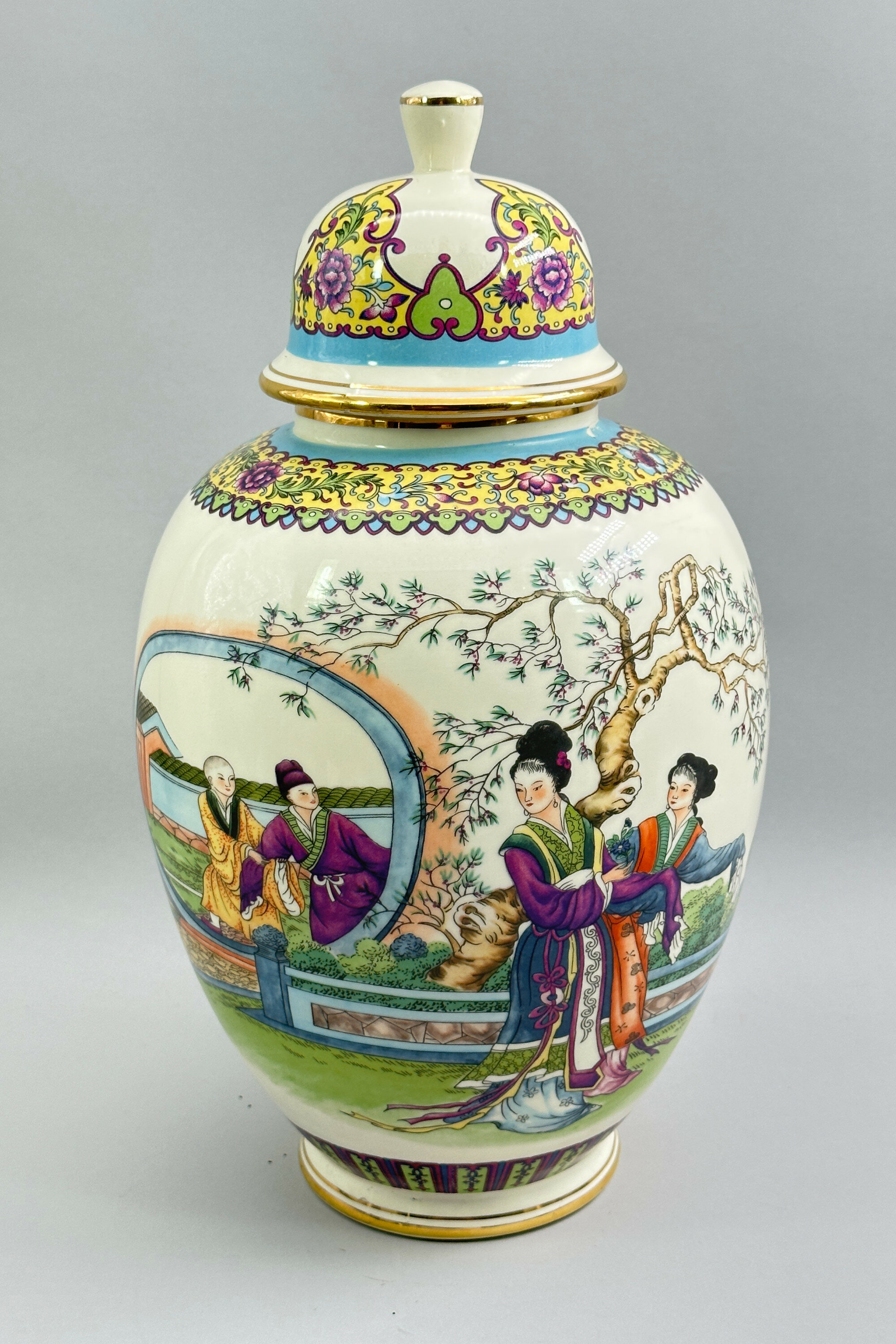
Chinese style Vase and Cover decorated with ladies and courtiers in a garden scene, C20th
Price: £55
Chinese style Vase and Cover decorated with ladies and courtiers in a garden scene, C20th
Price: £55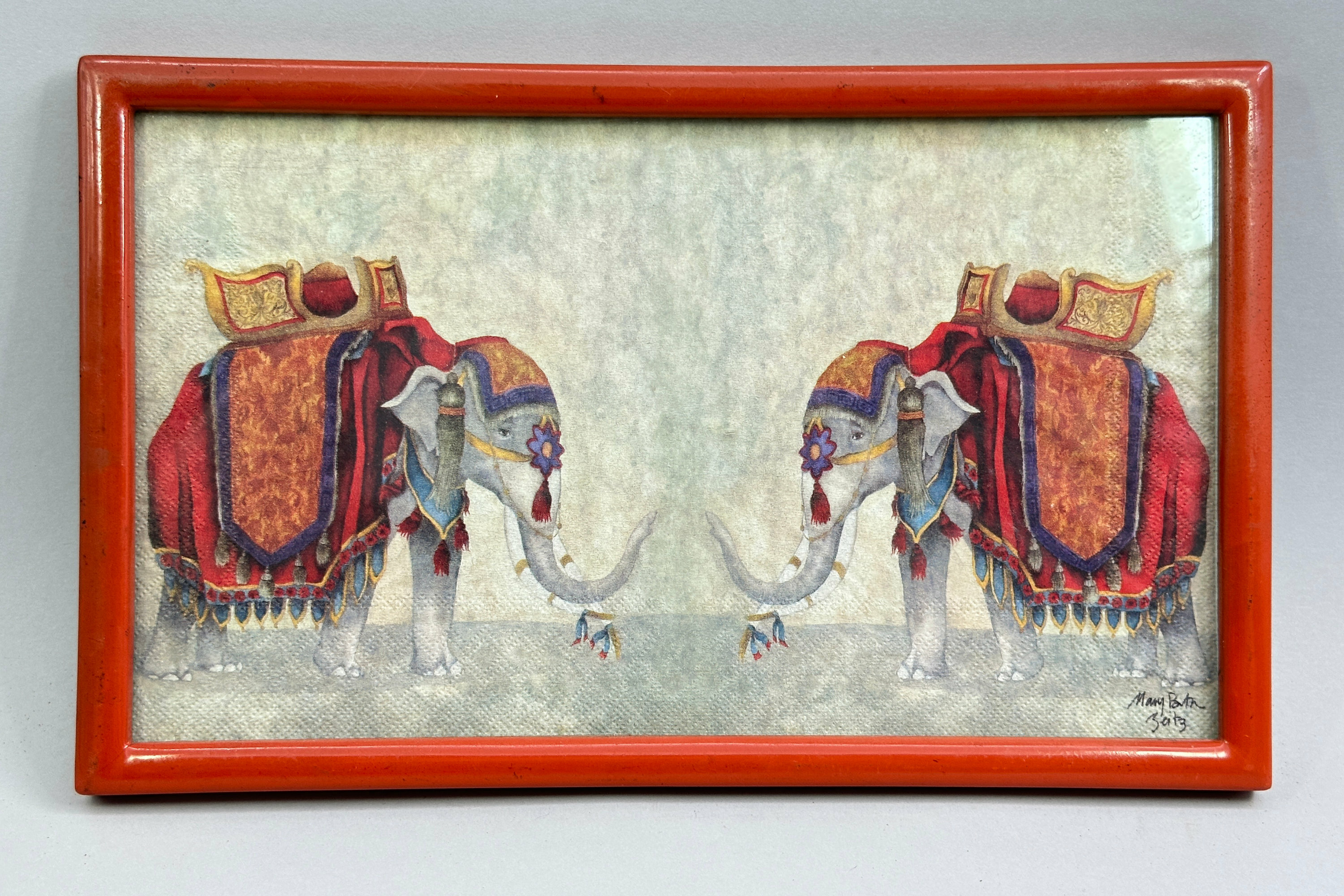
Framed Picture of Two Elephants signed Mary Beth Zeitz and dated 2003
Price: £25
Large python handbag with wood closure detail 1930s
Price: £125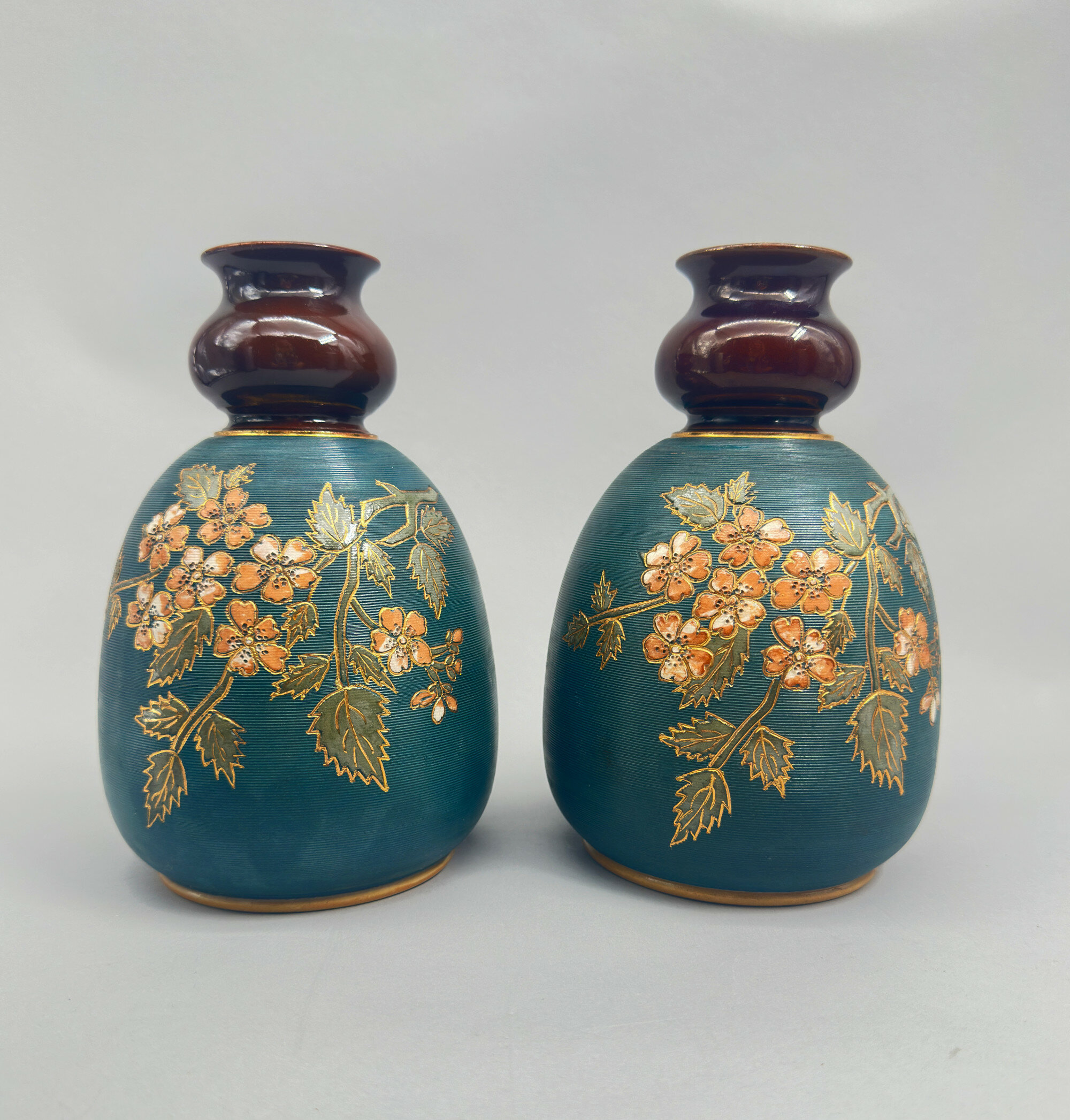
Pair of Lovatt and Lovatt Langley Mill Vases, early C20th
Price: £110The Langley Mill Pottery was located in Langley Mill, Derbyshire on the Derbyshire – Nottinghamshire border. From its establishment in 1865 to its final closure in 1982, it went through five distinct periods of ownership, producing a wide range of stoneware ranging from utilitarian items and to high quality art pottery. This pair of vases dates from the third company that traded there, Lovatt and Lovatt. The Lovatt family had entered into partnership with the owner of the founding business at Langley Mill, James Calvert. From 1895 the business was in sole control of the Lovatt family and traded as ‘Lovatt and Lovatt’ until 1935. The early years of the twentieth century proved to be something of a zenith for them and a wide range of art pottery pieces were made which enjoyed great popularity. Production techniques were streamlined without a reduction in quality and in 1905, leadless glazes were introduced. These are proudly announced on the base of this pair of vases which are an excellent example of the Lovatt and Lovatt style and probably date to 1912, indicated by the impressed numbers for that year.
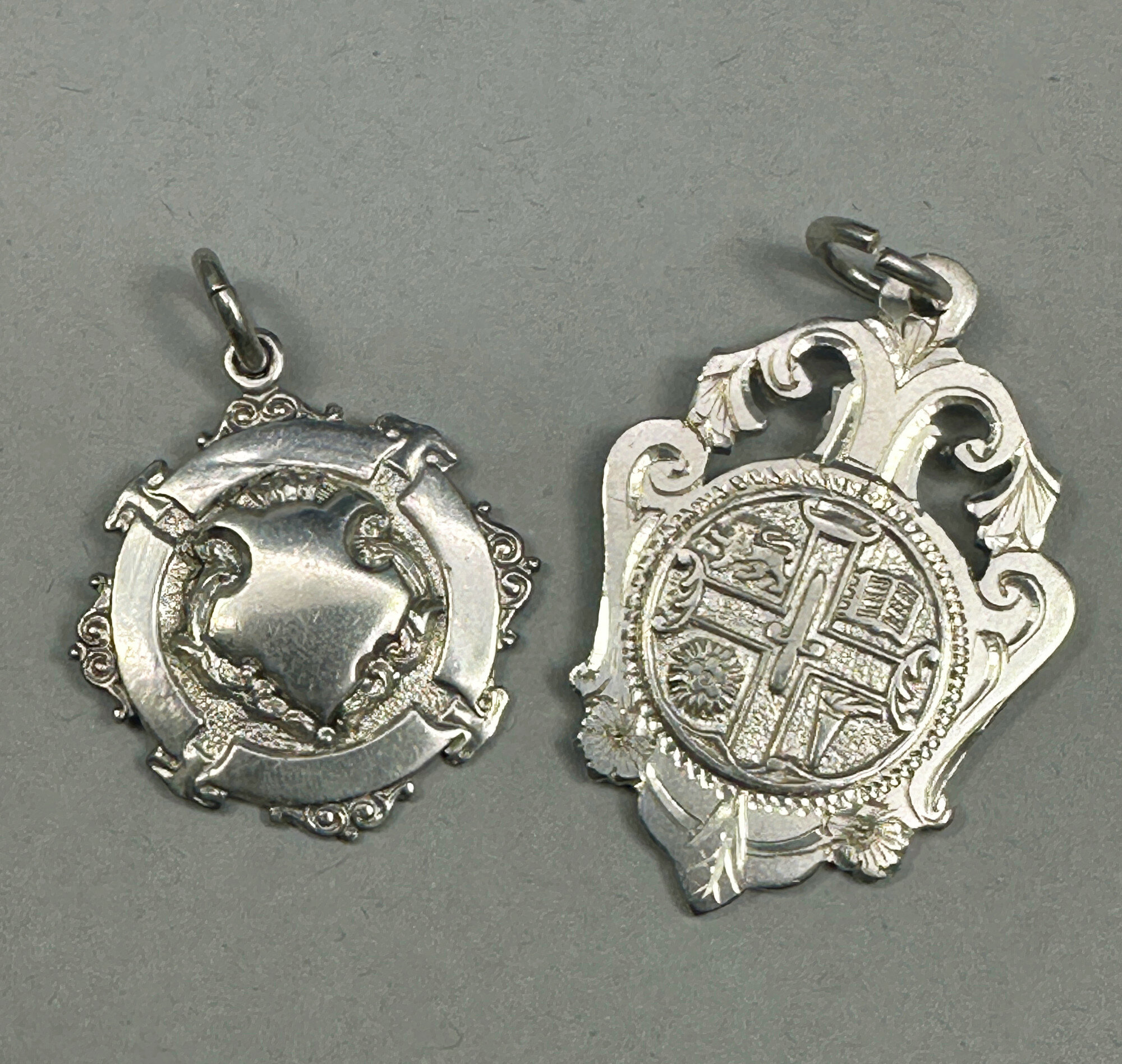
Two watch fobs 1912 and 1923
Price: £35
A Celtic or Pictish Brooch decorated with Horses, St Justin of Cornwall, circa 1980
Price: £10Inverurie is a town in Scotland where Pictish carved stones are found in the graveyard dating from the 7th Century. The Picts were a tribe of peoples living in the East and North of Scotland. Little is known of their origins but they were called 'Picts' by the Romans because of their painted and tattooed bodies. The Inverurie horse is the inspiration for this brooch. The actual design of the three horses was created by George Bain (1881-1968) the Scottish artist and teacher, famous for chronicling Celtic Art.
St Justin of Cornwall is well known for the production of 'craft' pieces in a variety of forms and materials. This piece probably dates to the 1980s and certainly cannot be found in their current catalogue.
PLEASE NOTE THAT THERE IS FREE UK SHIPPING ON THIS ITEM. For international buyers the shipping cost will be reduced by the UK shipping cost, so don't worry if you are outside the UK, you still receive this benefit!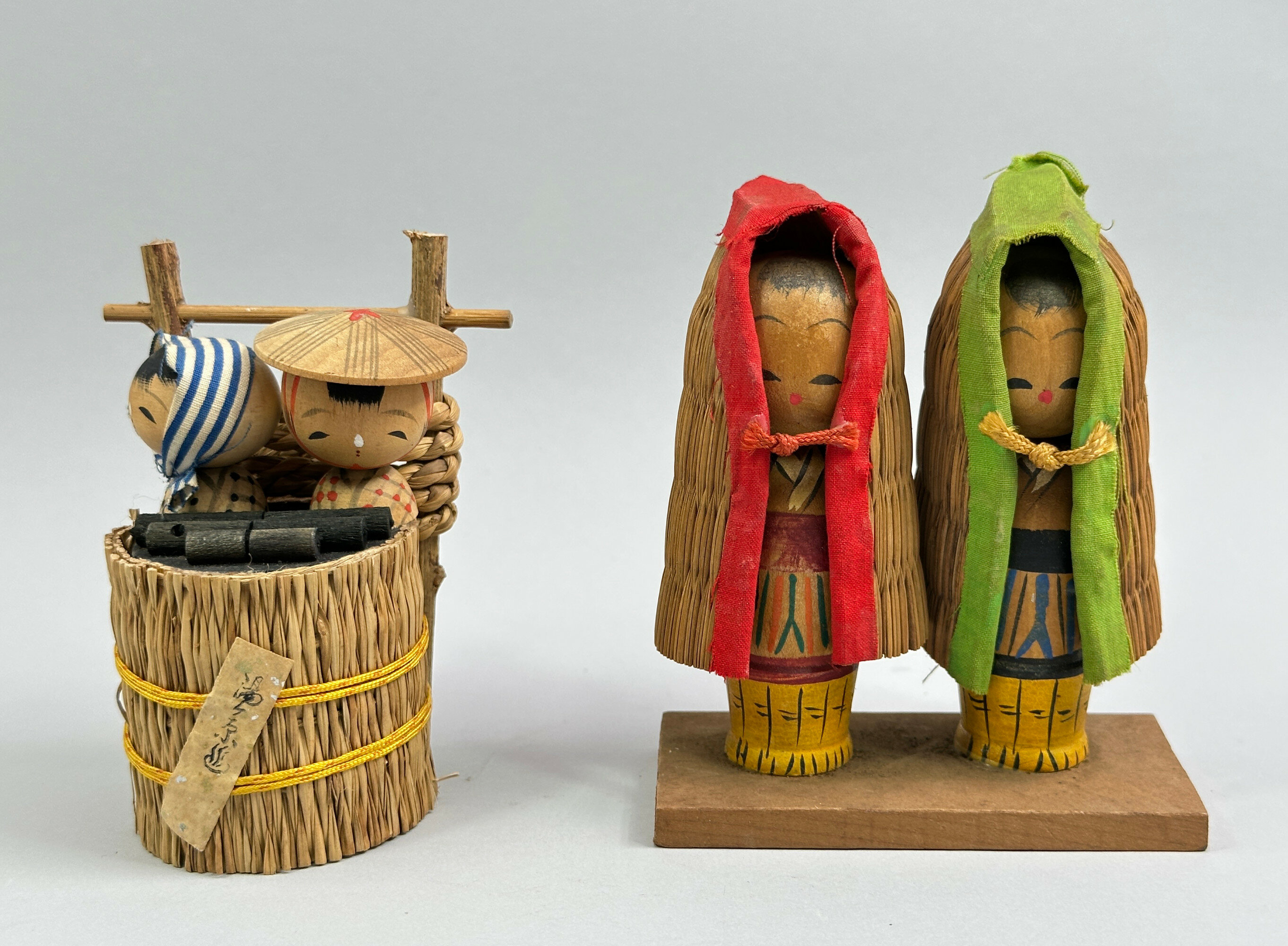
Two Vintage Japanese Kokeshi Doll Groups, C20th
Price: £25
Vintage hand carved Fossil Stone Trinket Box and Cover, C20th
Price: £25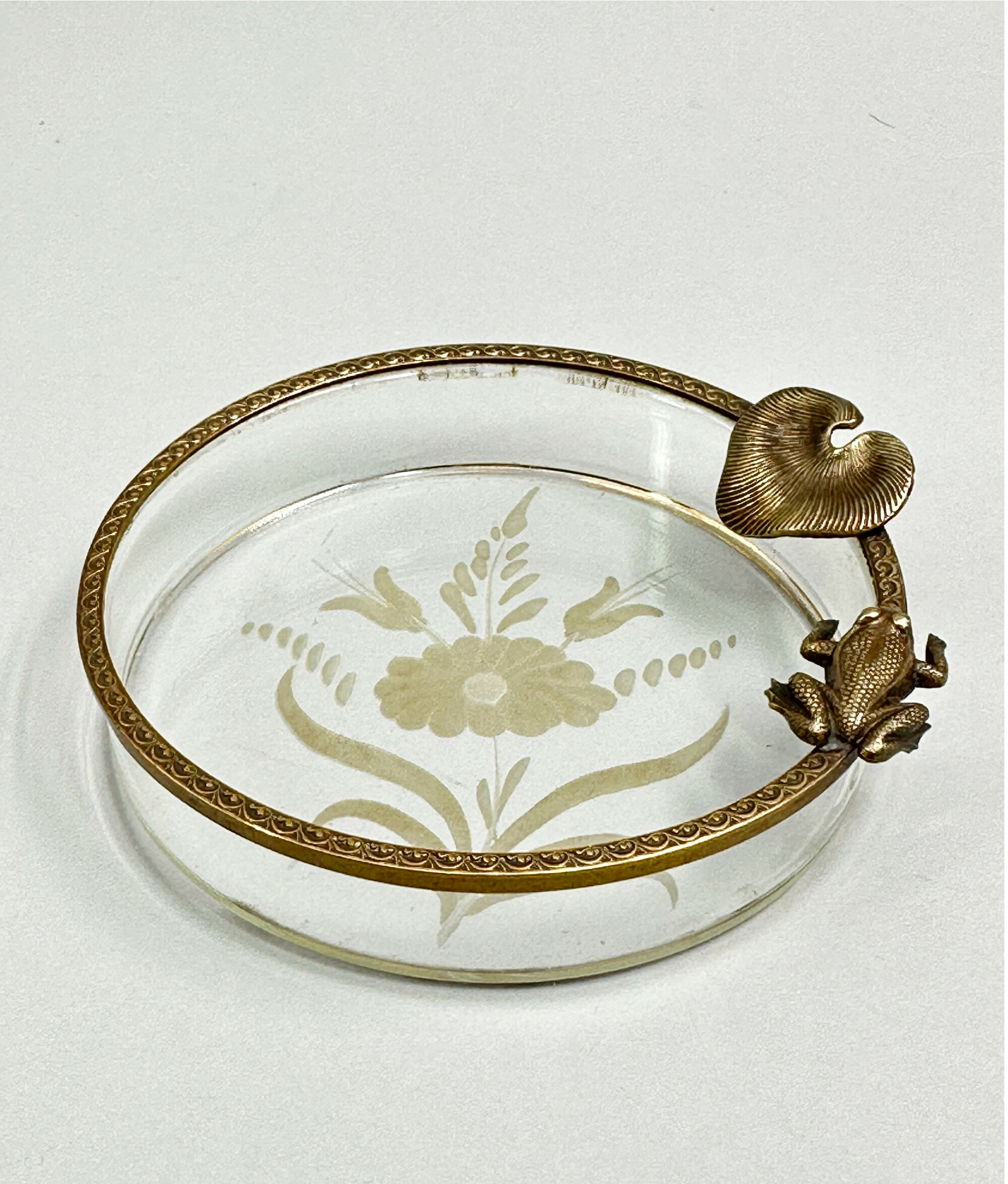
Fine Quality engraved French Glass Dish with naturalistic Ormolu Mounts, early C20th
Price: £25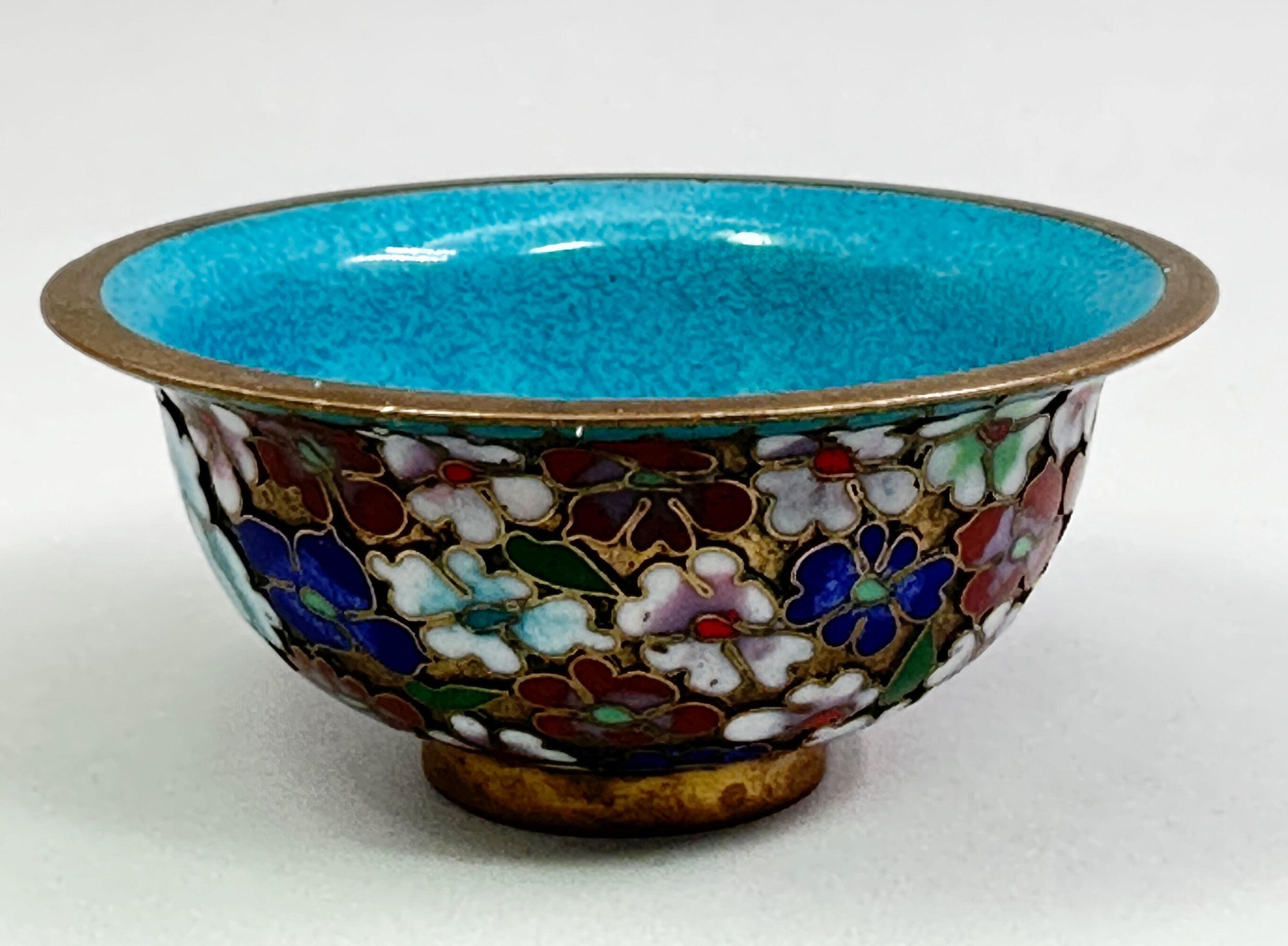
Small Chinese Gilt Ground Cloisonné Bowl, C20th
Price: £35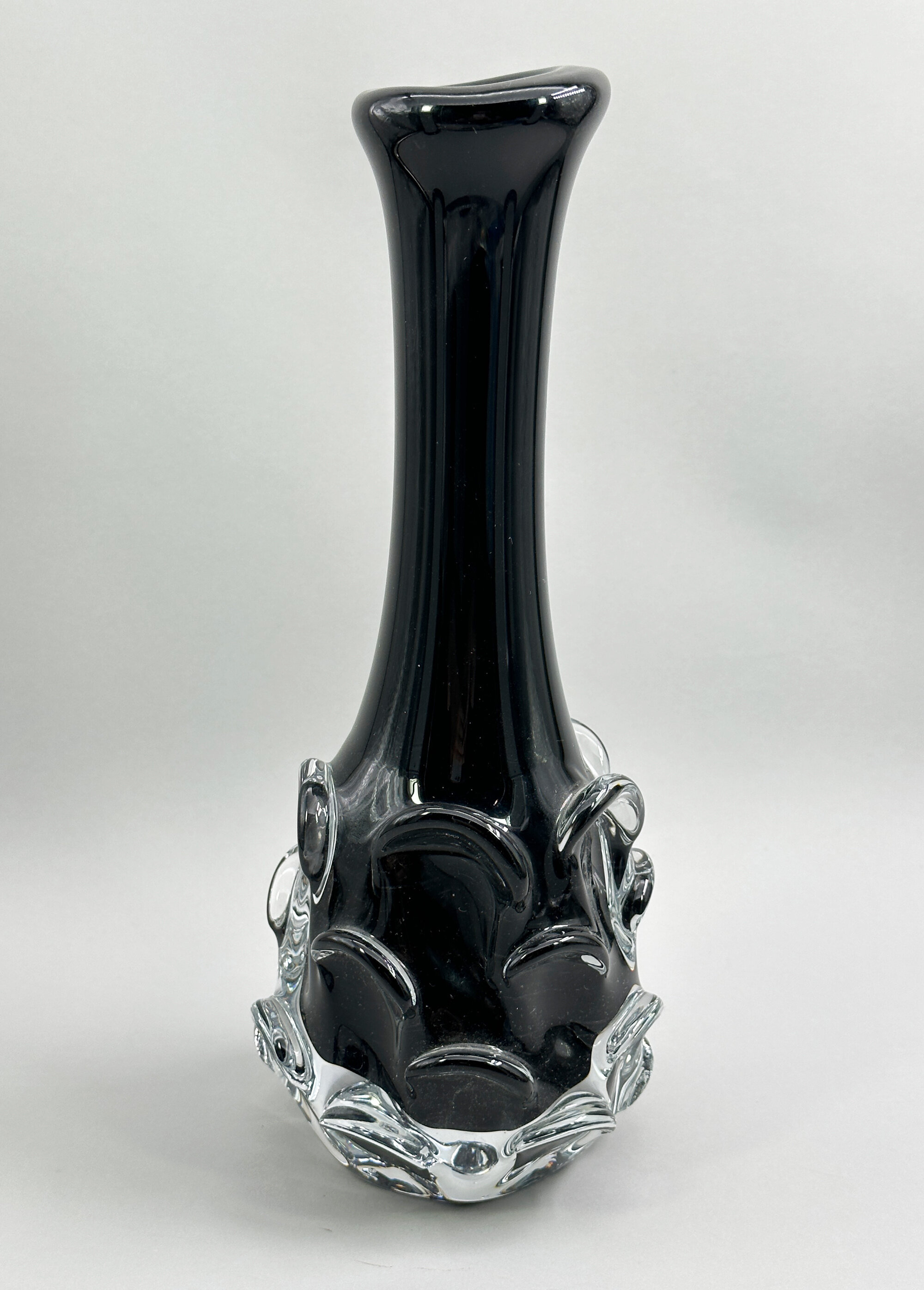
Aseda Glasbruk Art Glass Vase by Bo Borgstrom, Swedish, 1960s/1970s
Price: £75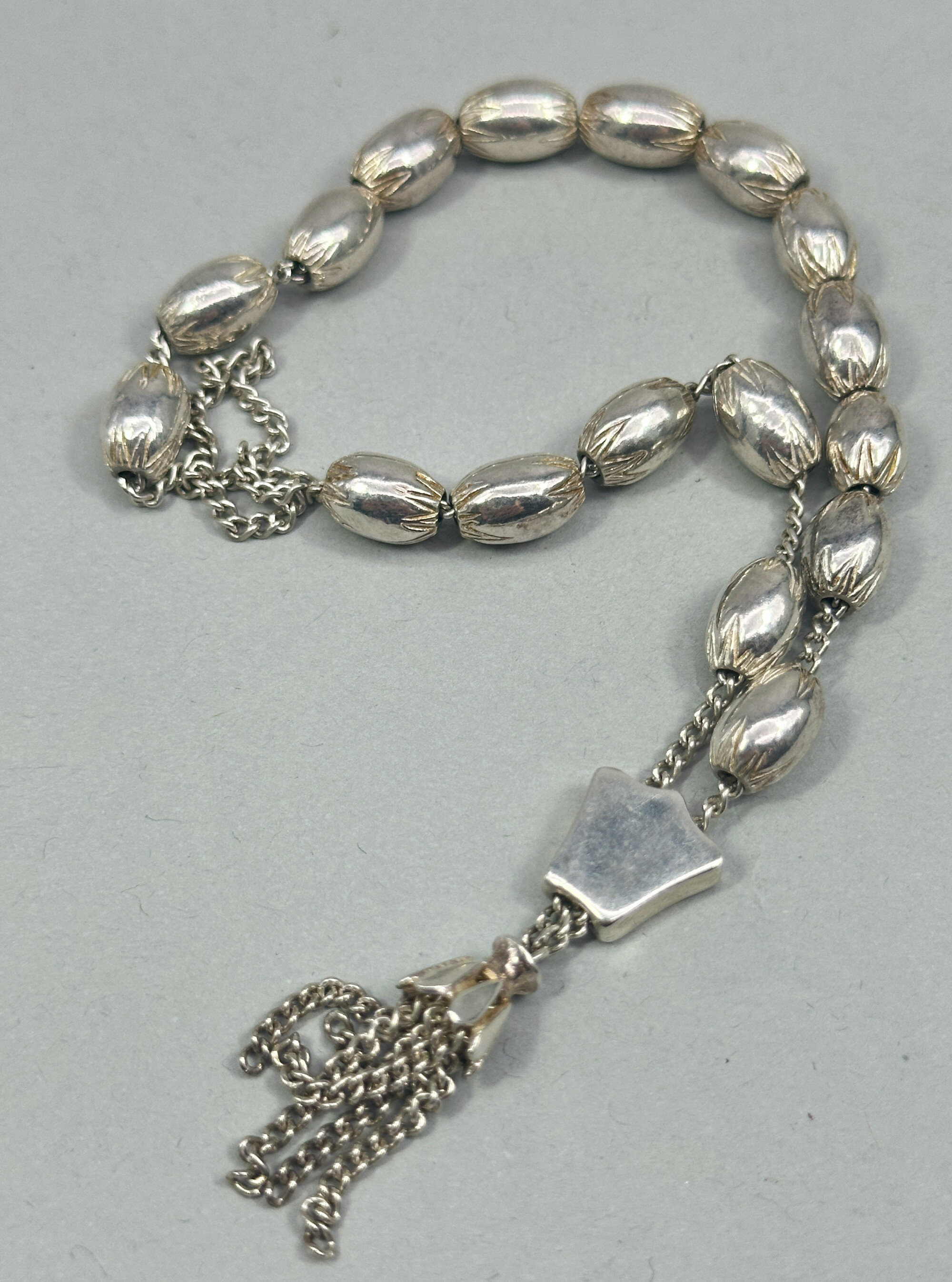
Silver prayer beads with seventeen Beads, 20th century
Price: £75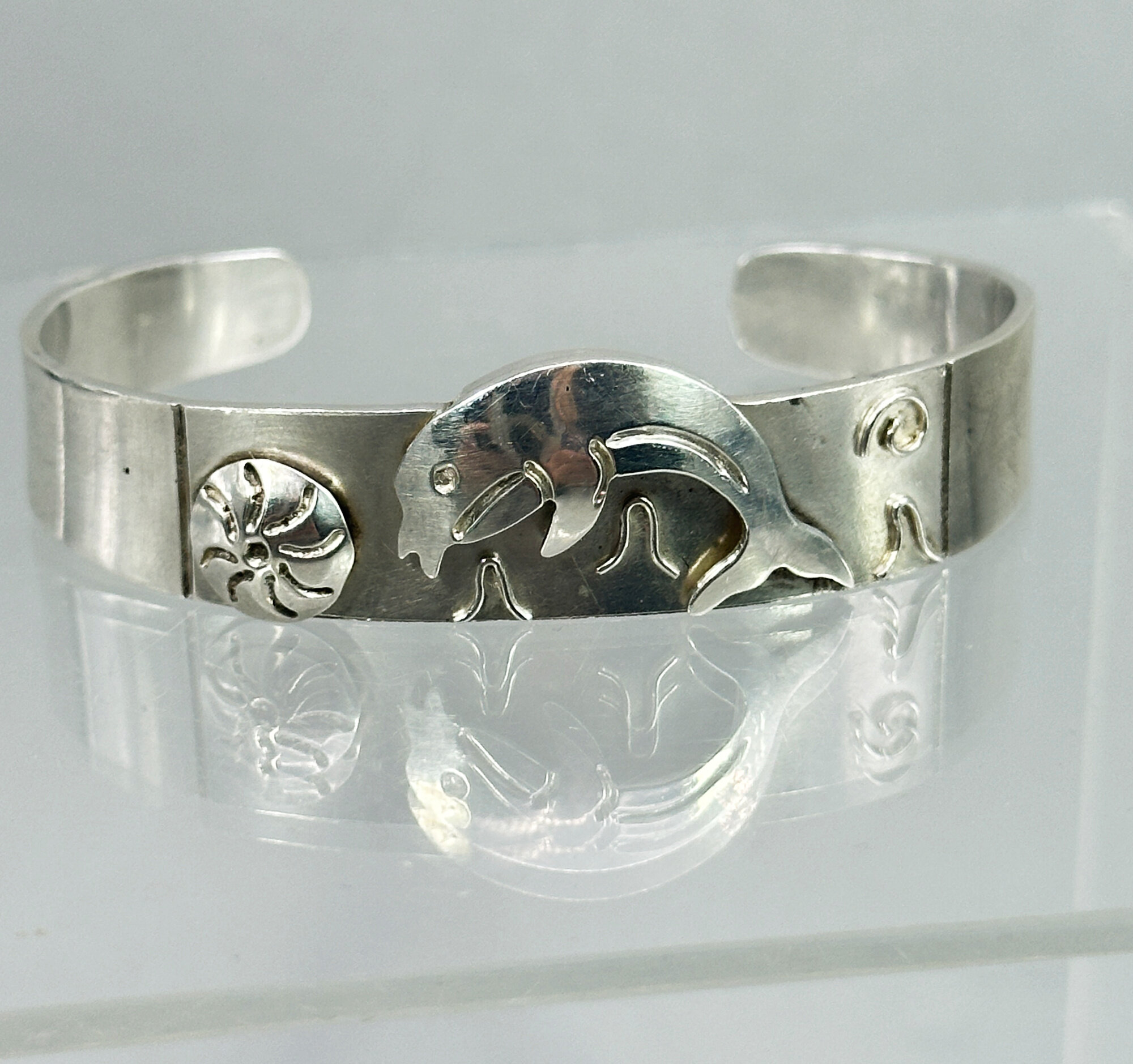
Mexican silver dolphin bangle bracelet c1990
Price: £65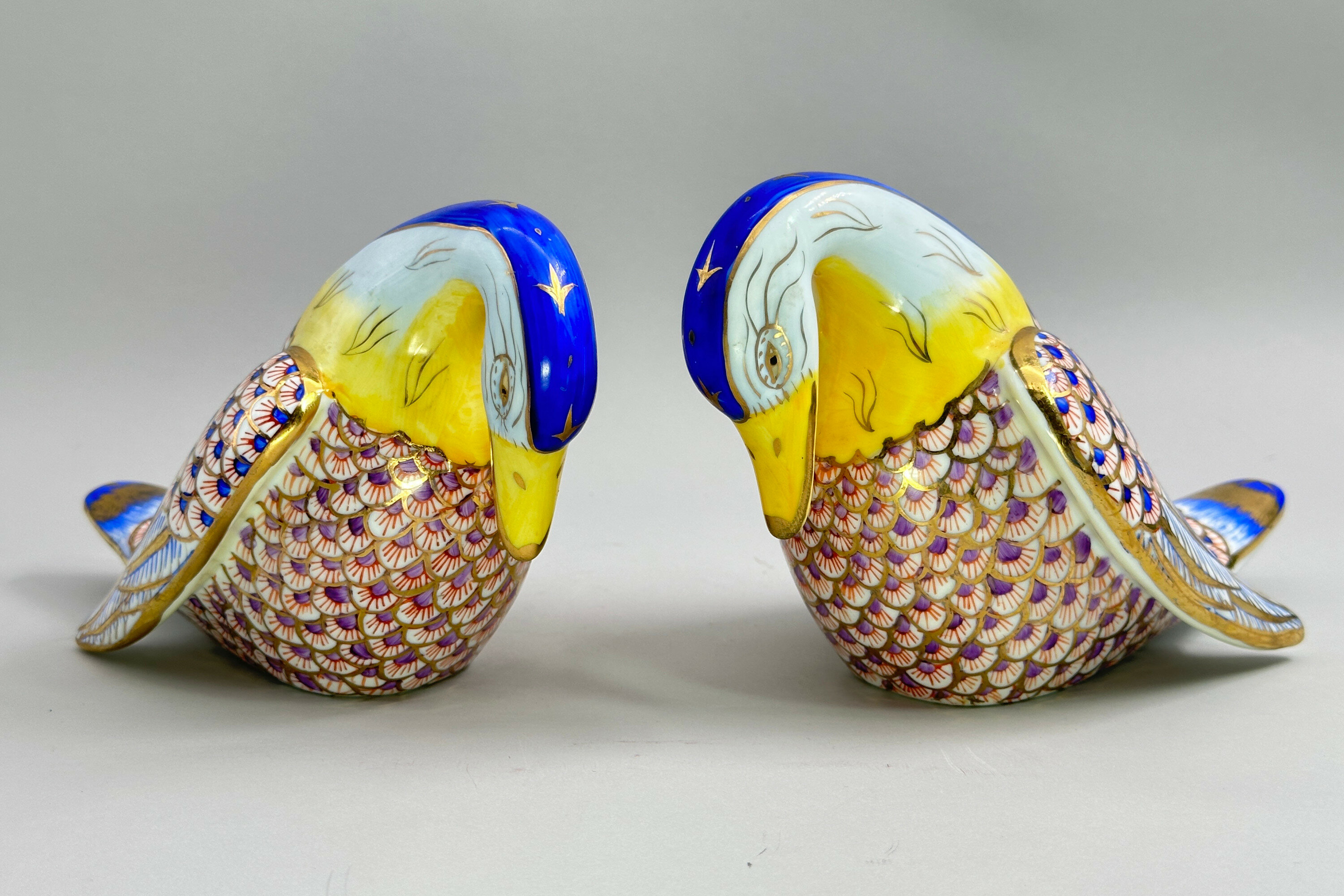
Pair of Ceramic Figures of Swans, probably continental, C20th
Price: £45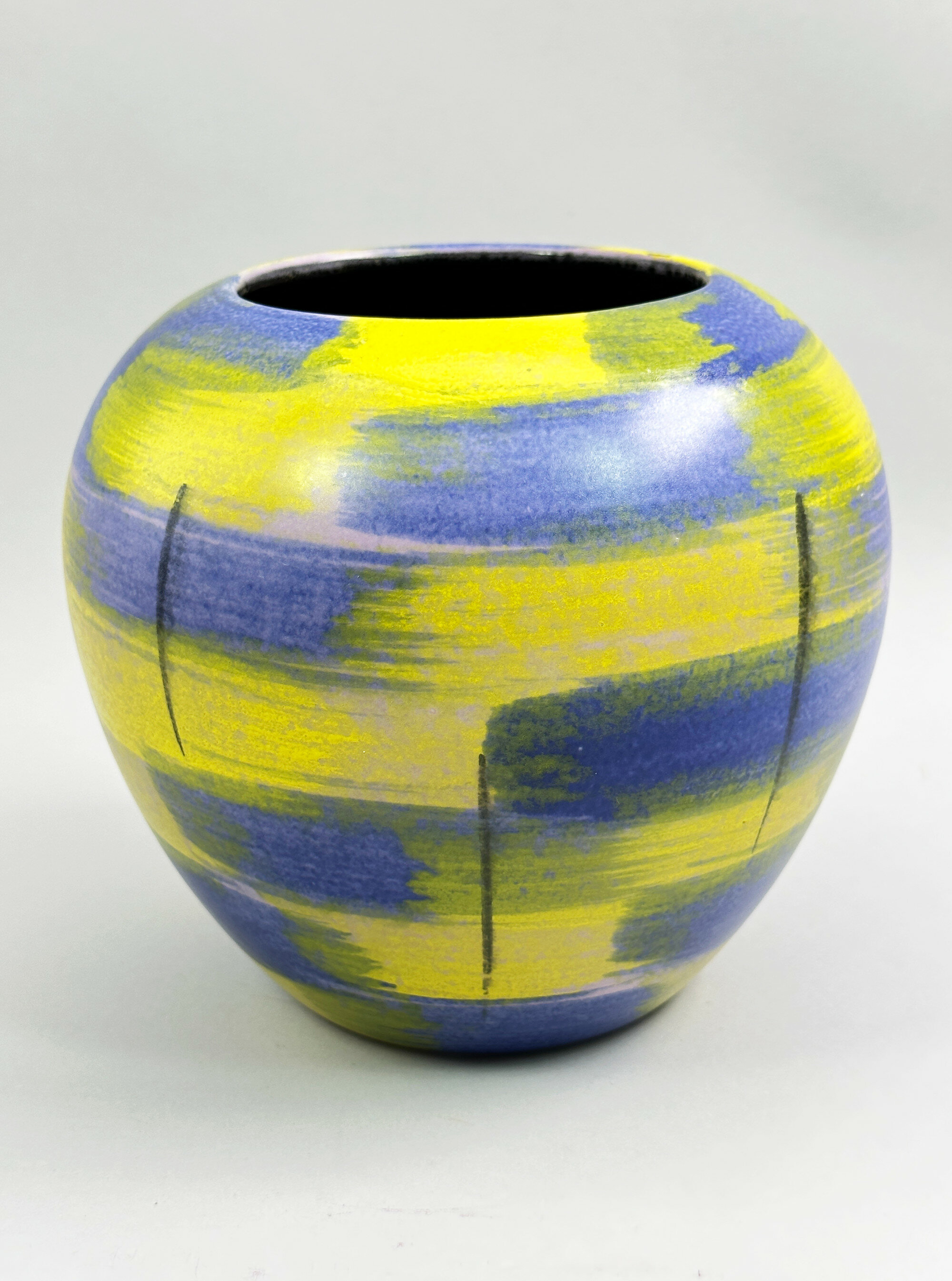
East German Ceramic Vase, VEB Haldensleben, 1950s
Price: £35The factory mark, a shallow dish superimposed over the letter 'H' inside a circle, is that of the East German pottery VEB Haldensleben. VEB stands for 'Volkseigener Betrieb', meaning a people-owned enterprise and used in relationship to the state owned workplaces in the GDR. Haldensleben is a town in Saxony-Anhalt, Germany and a ceramics factory was created there in 1945 with the nationalization of the Carstens Uffrecht plant that followed the division of Germany at the end of WWII. Halsdenleben focused primarily on the manufacture of vases. Its output tended to be of superior quality and employed more restrained glazes than those used by its West German counterparts. Upon the reunifucation of Germany in 1990, the factory was returned to its original owners, the Carstens family. The pattern number here is found on other pieces with the same shape but the abstract decoration used is quite individual and evocative of 1950s and early 1960s designs.
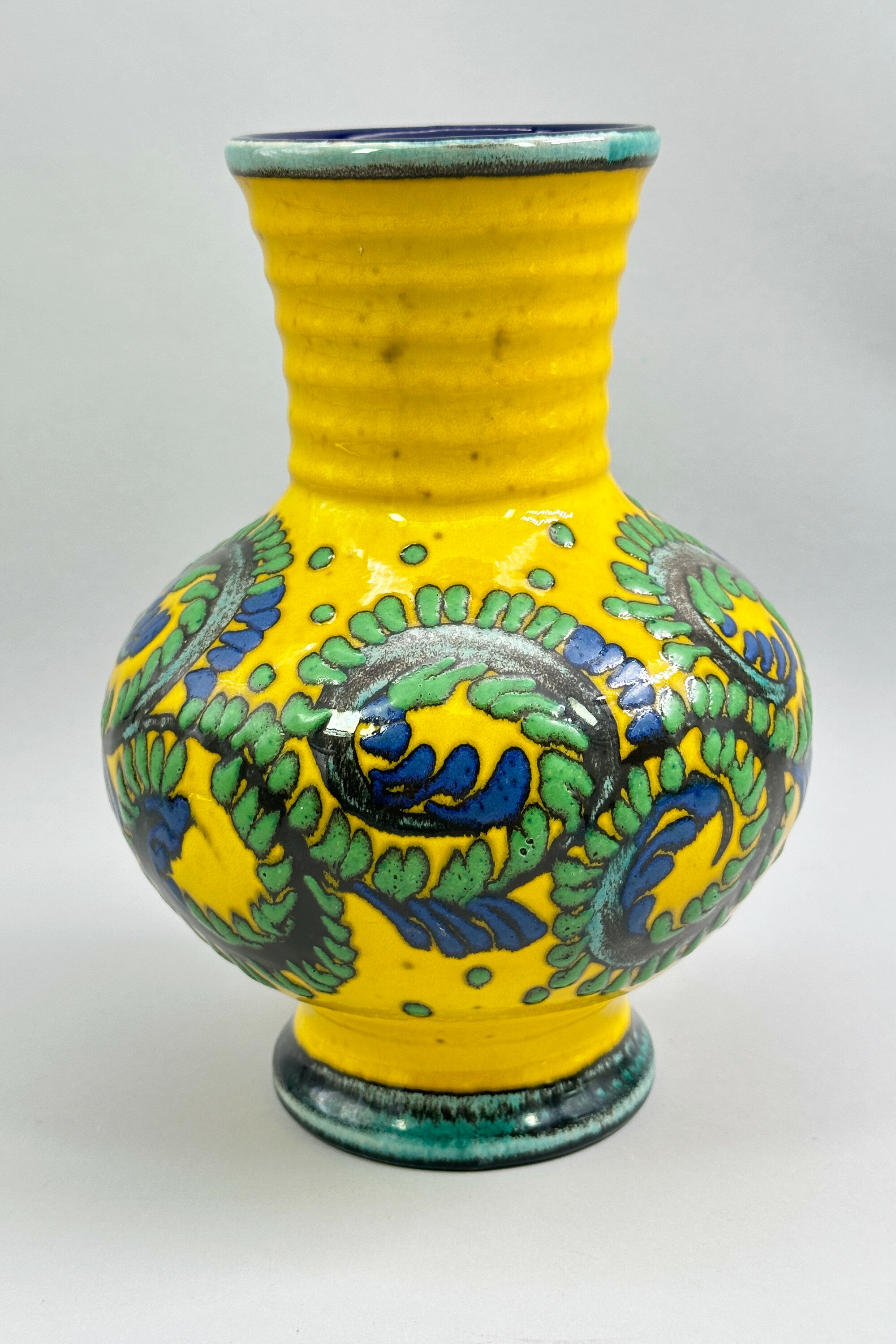
West German Ceramic Vase, Marei, 1970s
Price: £45While not stamped with a maker's mark, vases of this type are attributed to the West German Ceramics factory Marei which produced pieces from 1949 to 2016. Marei was the commonly used abbreviation for the firm's name which was Majolikafabrik Rheinbach Jean Fuss and Sohn. The pieces are distinguished by the use of a reddish clay but this was sometimes more brown or dark brown depending on the suppliers used. Marks are usually impressed into the base although these are often just pattern numbers, as here. Many pieces are unmarked and some are stamped 'MADE IN GERMANY' or 'W.GERMANY'. The pattern number here is '7104'and is found on similar pieces with the same shape but different decoration. This vase was probably made in the 1970s and is typical of the striking designs the firm produced.
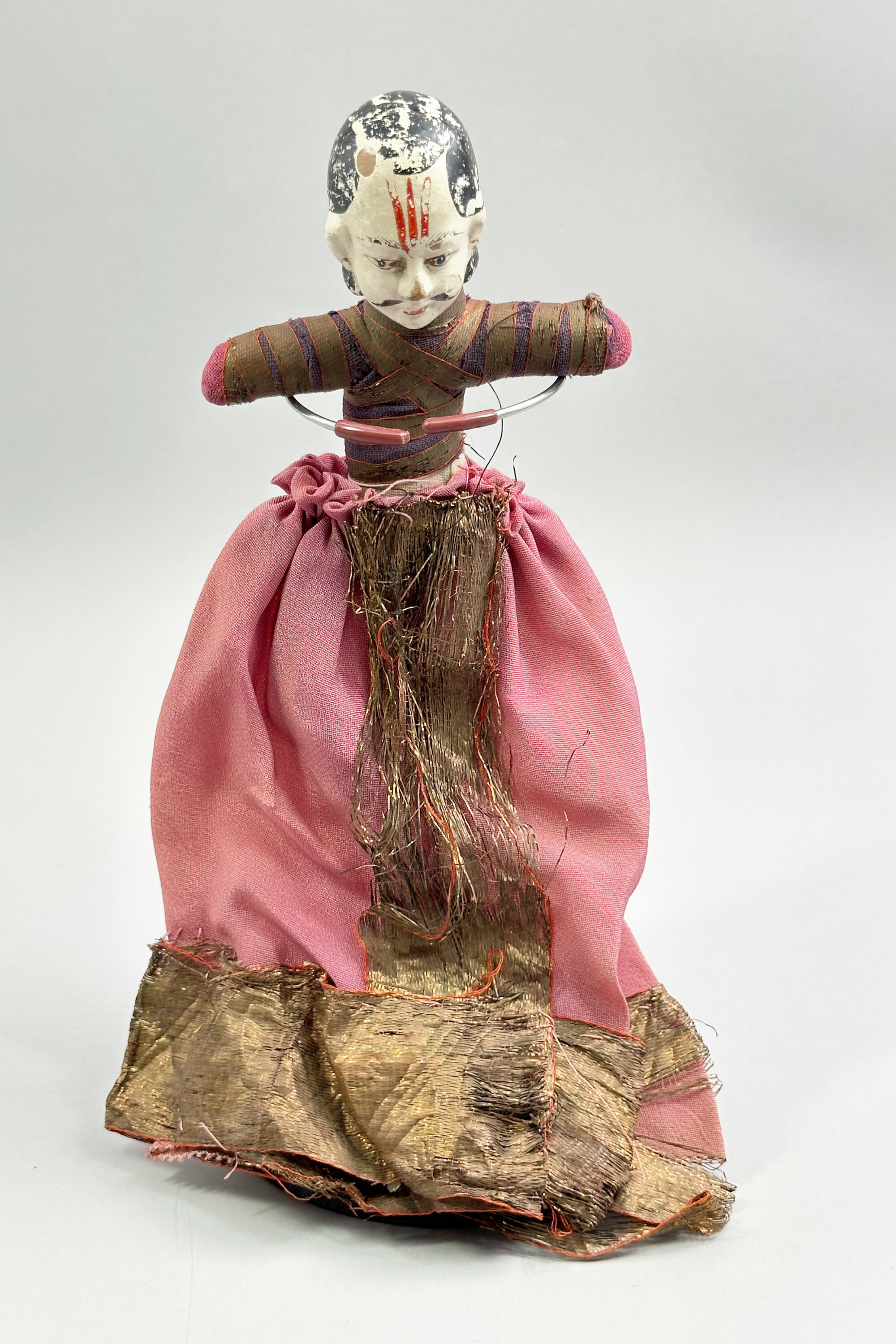
Burmese doll figure of a Priest, C20th
Price: £45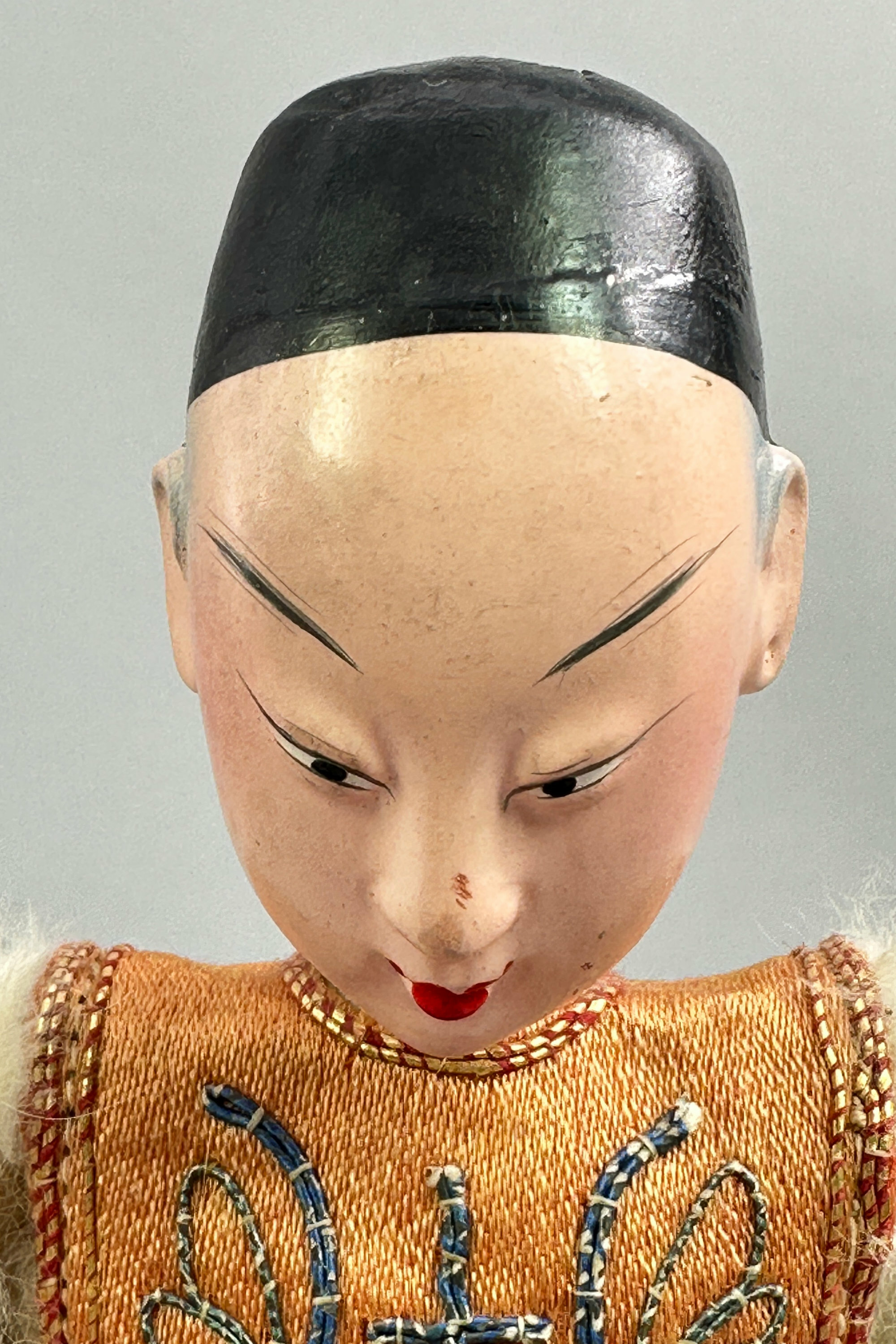
Chinese Doll of a man dressed in traditional costume, early C20th.
Price: £95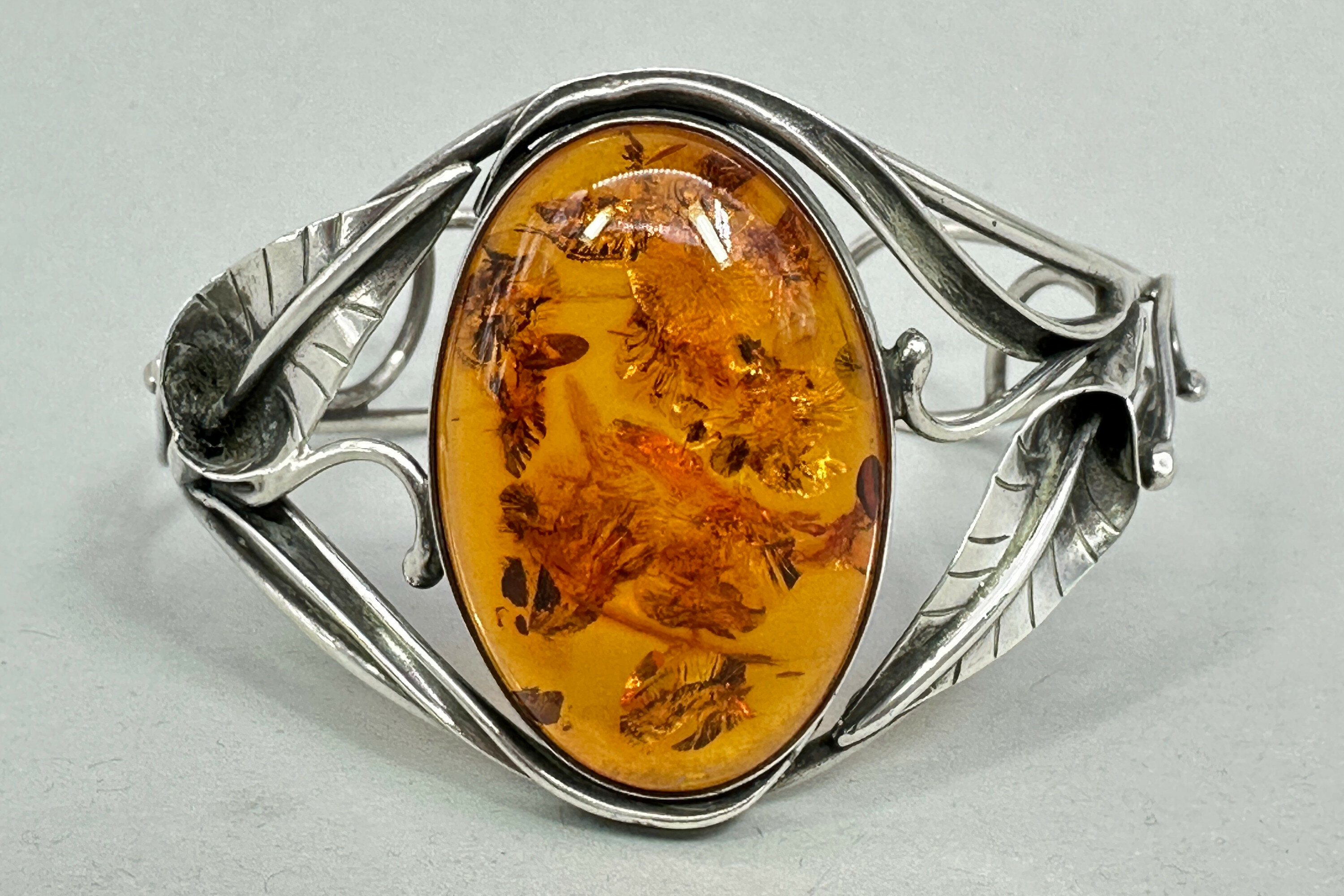
Large amber cabochon cuff Bracelet, c1970
Price: £95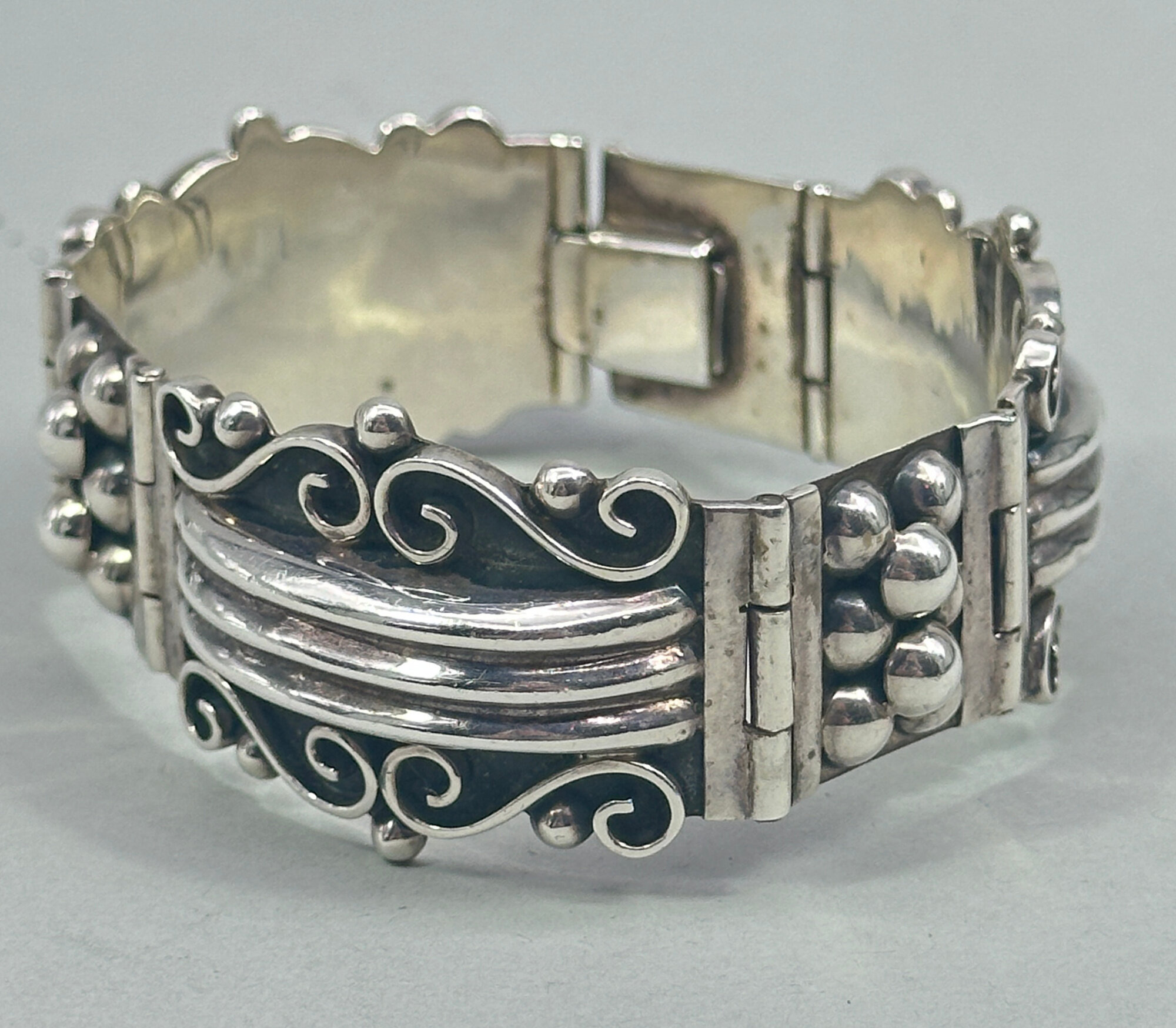
Outstanding Taxco silver bracelet c1960
Price: £295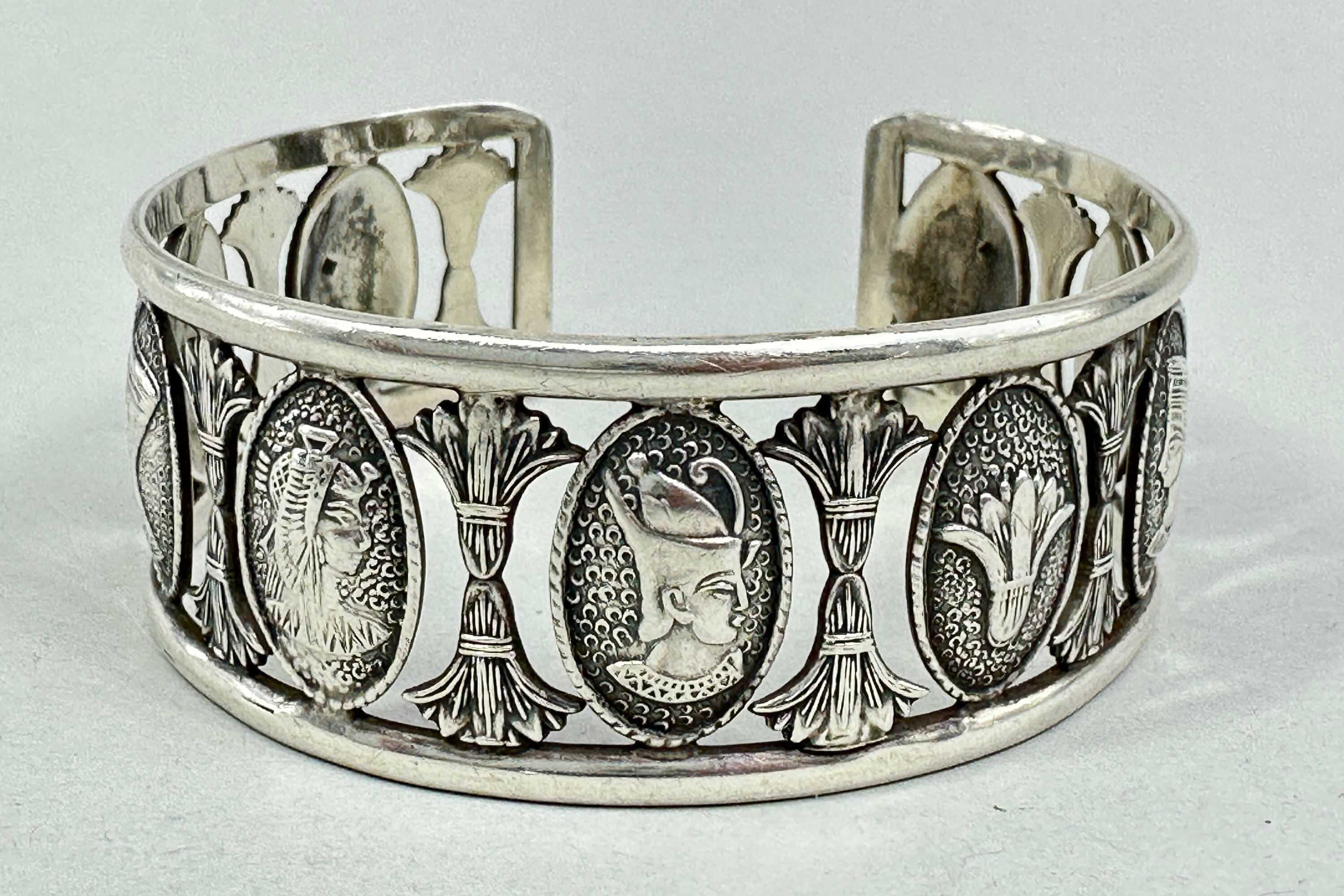
Egyptian silver cuff bangle with portait plaques of Pharoahs
Price: £85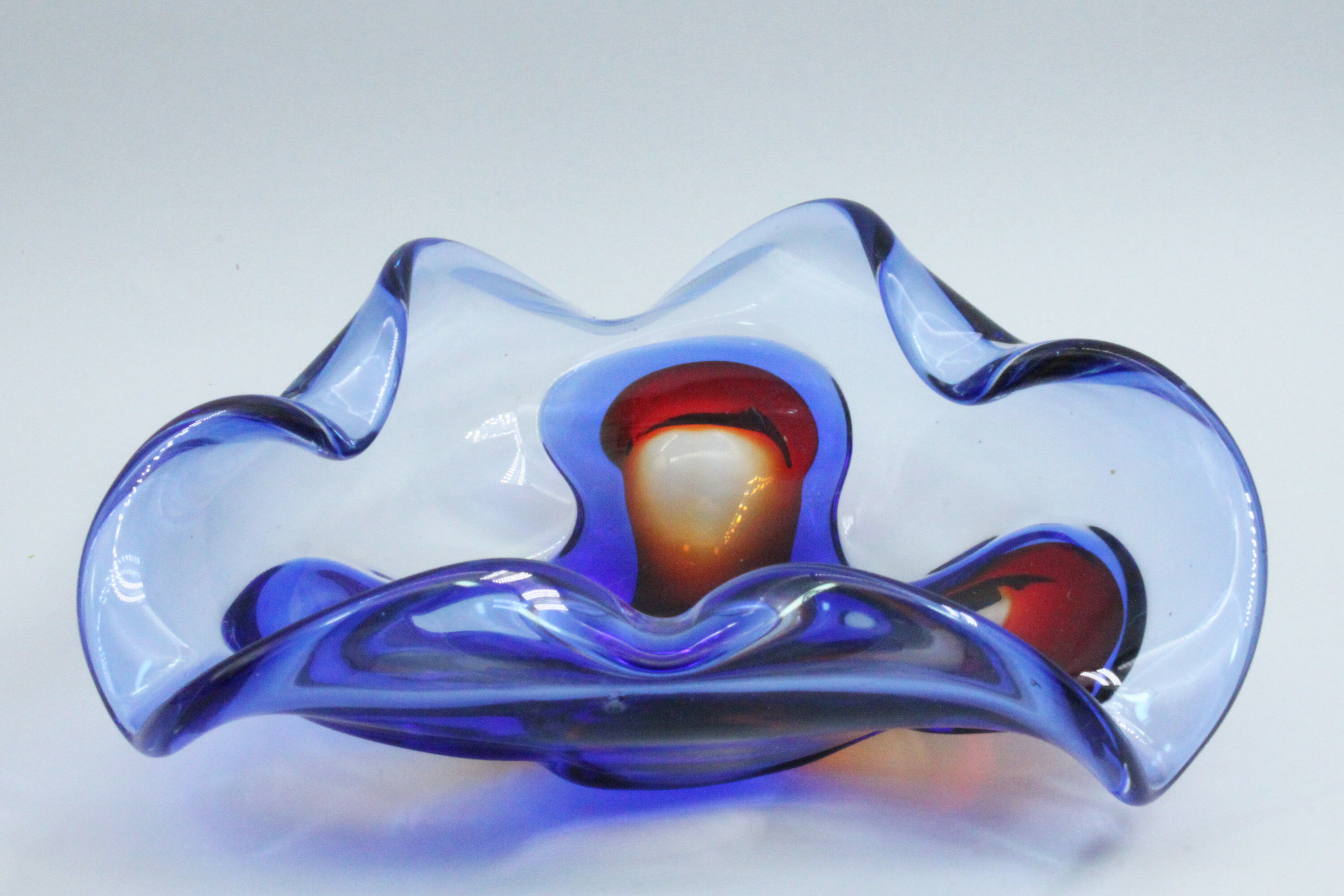
Murano Art Glass Dish, 1960s
Price: £45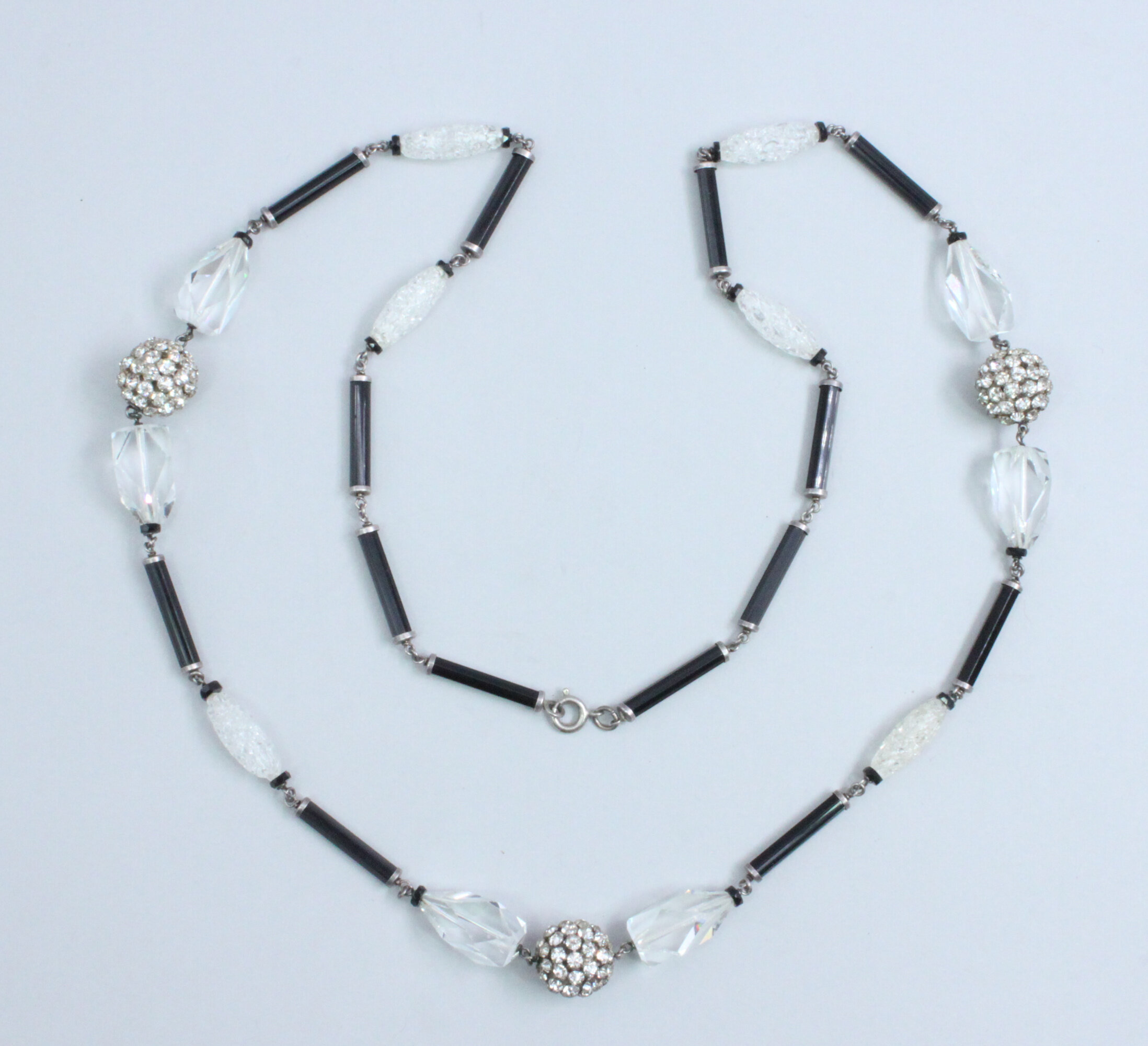
Art Deco necklace with French Jet and paste stations
Price: £45